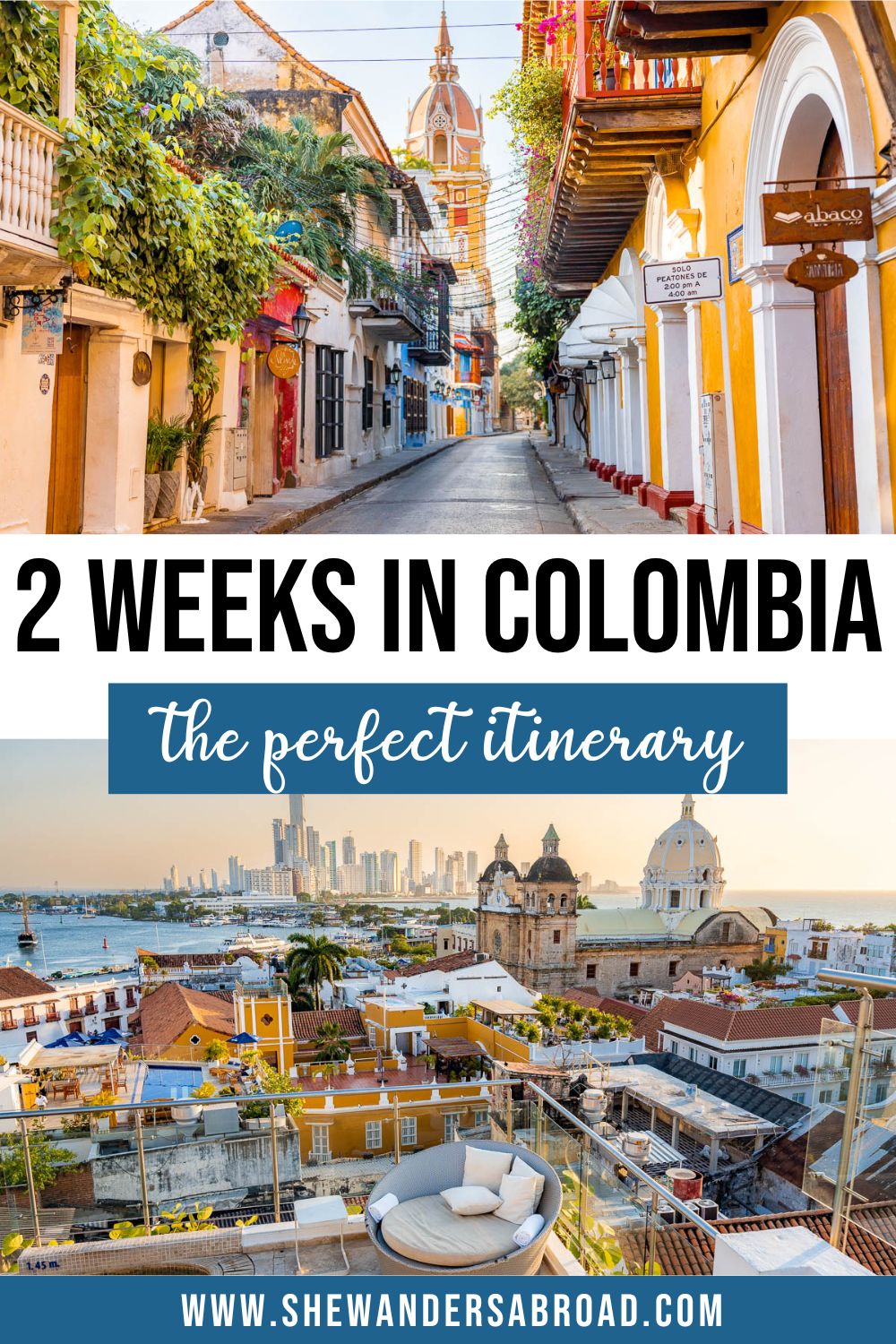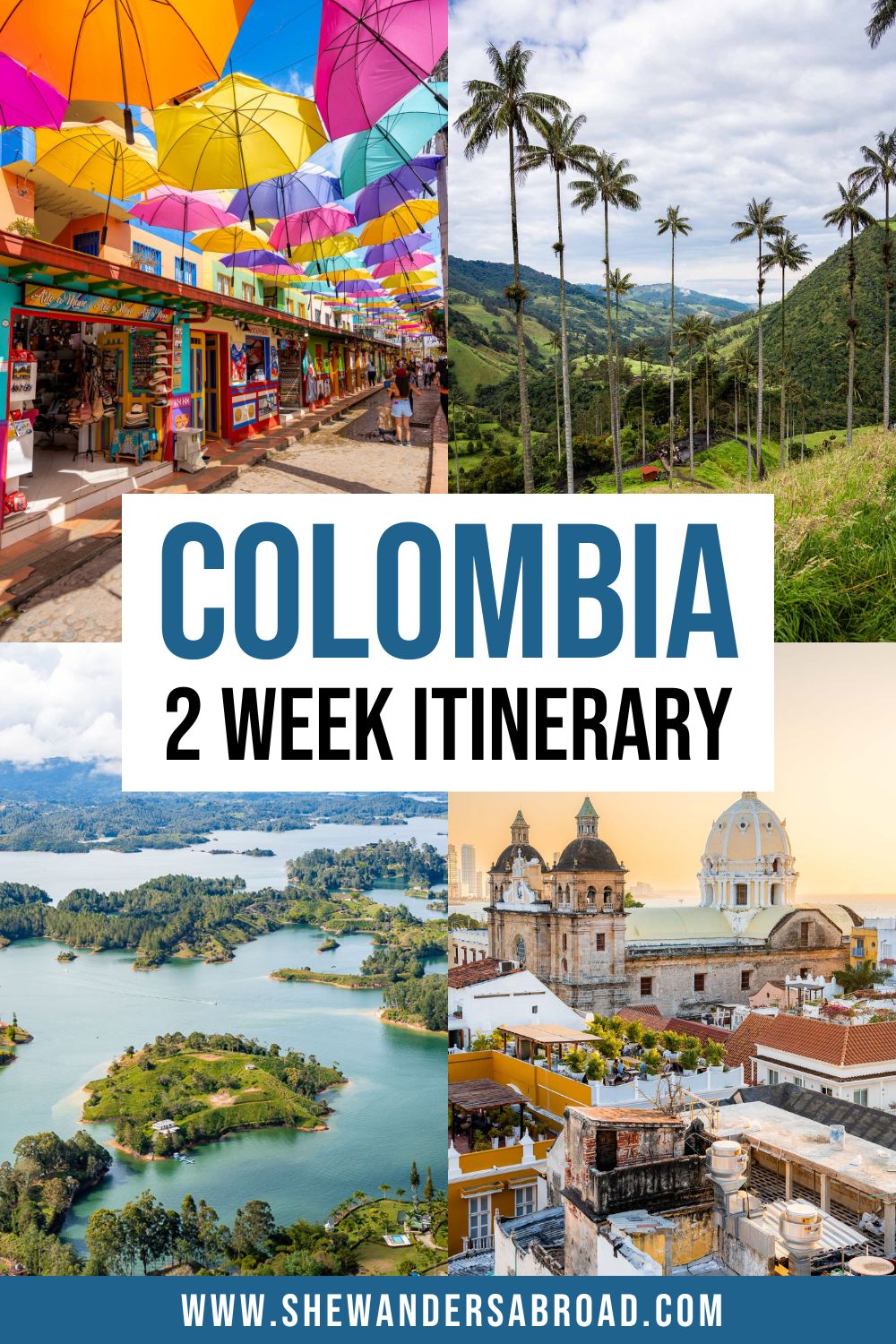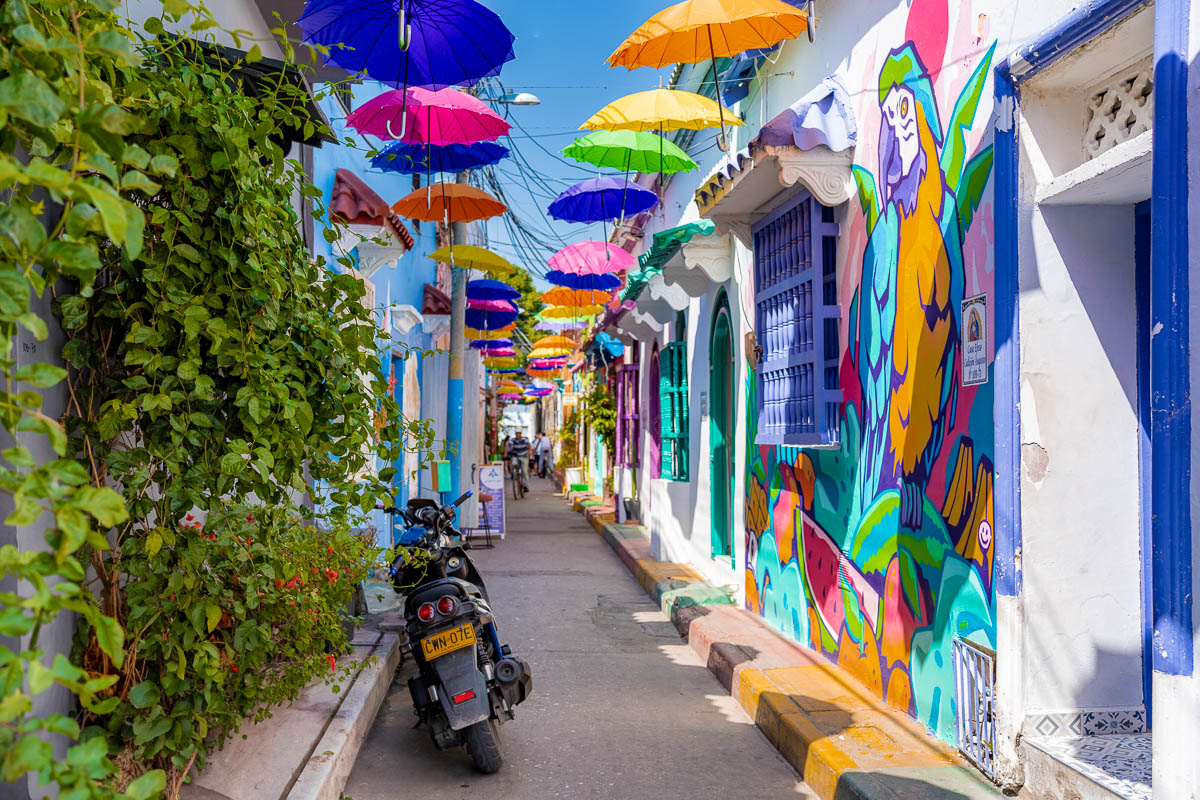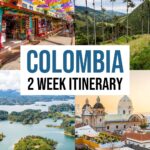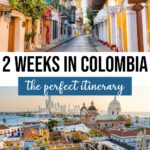Are you planning a trip to Colombia and wondering how to make the most out of your 2 weeks here? If so, you’ve come to the right place!
In this 2 weeks in Colombia itinerary, I will guide you through four of the most popular destinations in this beautiful and diverse country: Bogota, Salento, Medellin, and Cartagena. Each city has its own unique charm and offers a different experience, giving you a taste of Colombia’s rich culture, history, and nature.
As well as providing you with an overview of all the top attractions, I’ve also included some suggestions for where to stay and how to get to each spot. I’ve even thrown in some restaurant recommendations for all my fellow foodies reading this!
With so much to unpack, let’s get right into this Colombia 2 week itinerary.
*Disclosure: This post contains a few affiliate links, which means I may receive a small commission, at no cost to you, if you make a purchase through my link.*
Table of Contents
Overview of Your 2 Weeks in Colombia Itinerary
Breakdown of your 2 weeks in Colombia
Rather than giving you a day-to-day breakdown, I’ve divided this itinerary into four sections, each highlighting a different city.
Your trip will kick off in the bustling capital city of Bogota, where you’ll explore its historic center and indulge in some delicious Colombian cuisine.
Next up is Salento, a charming town nestled in Colombia’s coffee region, where you’ll hike through stunning landscapes and learn about the country’s famous coffee production.
From there, you’ll head to Medellin, known for its vibrant culture and incredible views from the surrounding mountains.
And finally, you’ll end your trip in the colorful and lively city of Cartagena, where you can relax on beautiful beaches and soak up the vibes on the Caribbean coast.
I recommend the following breakdown for your 2 weeks in Colombia:
- Days 1-3: Bogota
- Days 4-6: Salento
- Days 7-10: Medellin (including a day trip to Guatape)
- Days 11-14: Cartagena
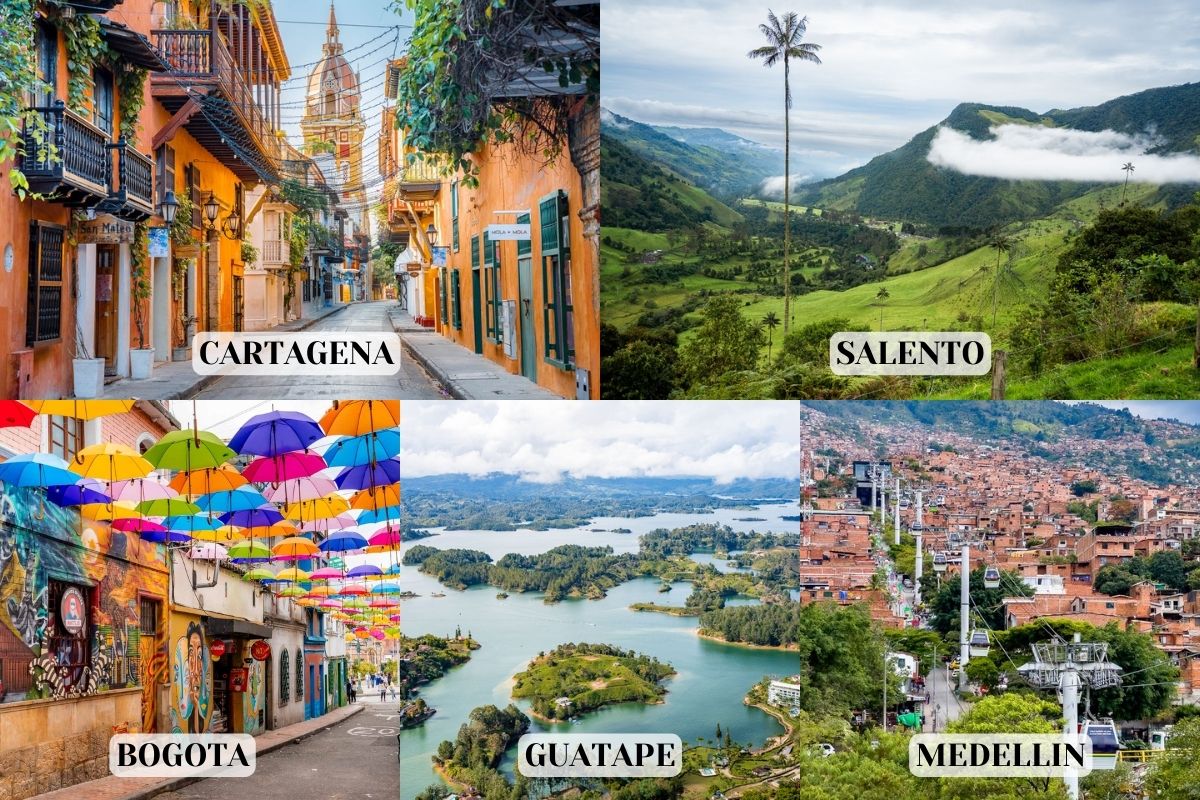
Of course, this is just a suggested breakdown and you can adjust it according to your preferences and travel style. You also need to factor in travel time between each destination, so plan accordingly.
Since both Bogota and Cartagena have international airports, you can start and end your trip in either city. It’s best to research flight prices and availability before deciding on your starting point.
You might notice that this Colombia itinerary doesn’t include Santa Marta which is the gateway to the famous Tayrona National Park. While it’s undoubtedly a beautiful spot, it requires quite a bit of hiking and can take up a significant chunk of time.
Similarly, I didn’t include the famous Lost City Trek as it takes 5 days to complete and also involves lots of hiking.
Some other great additions to your Colombia travel itinerary would be the towns of Minca and Villa de Leyva and the stunning Tatacoa Desert. If you have more than 2 weeks in Colombia, definitely consider adding them to your trip!
However, this 2 week Colombia itinerary is already jam-packed so I definitely wouldn’t recommend trying to squeeze more things in.
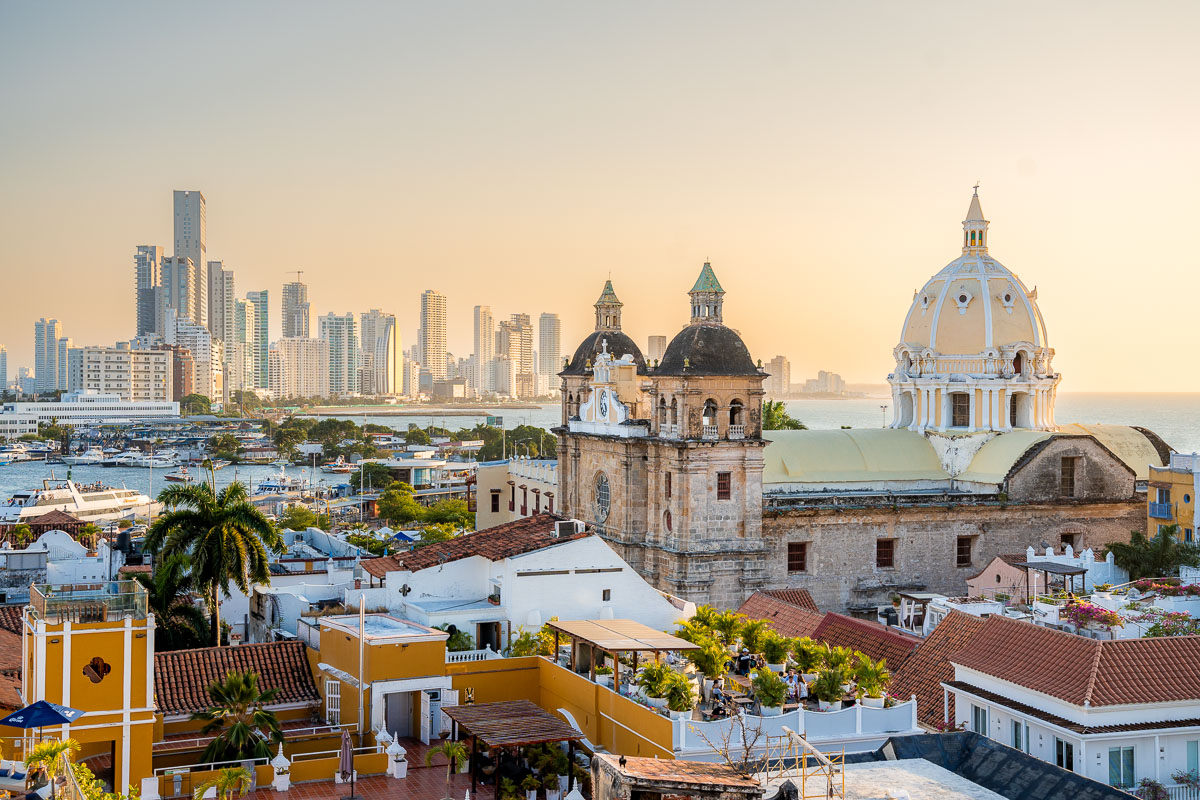
Map for your 2 week Colombia itinerary
Below you can find a customized map that includes all the locations you’re going to visit on this Colombia itinerary.
I marked the different regions of your 2 weeks in Colombia with different colors – I used blue for Bogota, yellow for Salento, red for Medellin, and green for Cartagena.
I added all the points of interest to this map – attractions, day trips, airports/bus stations, restaurants, cafes, and even the best hotels to stay in each area.
How to use this map: This map is fully interactive, so you can move around, zoom in/zoom out, and click on the icons. If you want to see a larger map, click on the bracket in the upper right corner. To see more details and the different layers, click on the tab in the upper left corner. If you want to save it for later, click on the star icon next to the name of the map. Then simply open Google Maps either on your desktop or phone, go to ‘Saved’/’Maps’, and open the map whenever you need it.
Day 1-3: Bogota
Bogota is Colombia’s sprawling capital and a natural starting point for many travelers as it’s home to the country’s largest airport.
Nestled amongst the Colombian Andres, Bogota sits over 2,500 meters above sea level and has a mild climate all year round.
The city has become a melting pot of cultures and traditions, making it an ideal first stop if you’re spending 2 weeks in Colombia.
With its historic architecture, world-class museums, and growing art scene, your 3 days in Bogota will be the perfect introduction to the country.
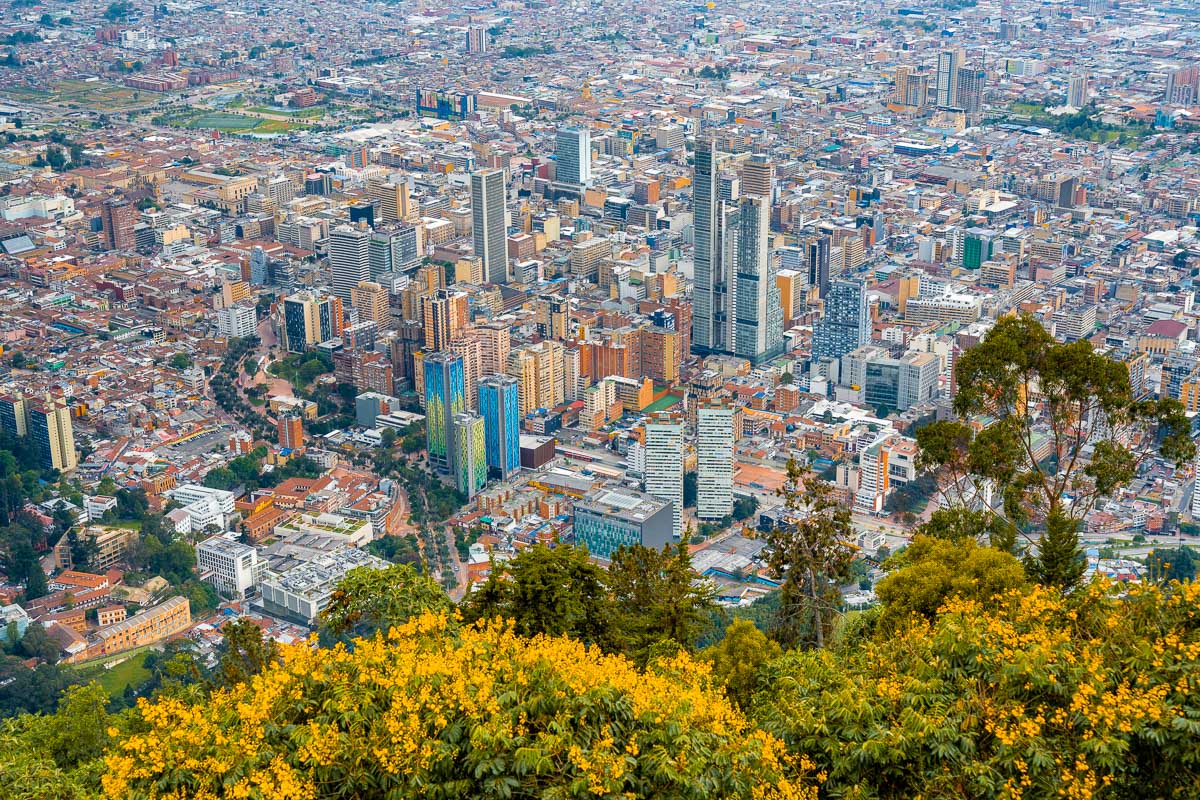
How to get to Bogota
You’ll more than likely kickstart your 2 weeks in Colombia at Bogota’s El Dorado International Airport, located just 20 minutes from the city center.
The most comfortable and quickest way to reach the city is to take a taxi. Coming in at around 25,000-40,000 COP ($6.5-10 US), taxis are quite affordable and are readily available.
If you don’t have cash on hand, opting for an Uber is an excellent alternative and still very affordable. You can also book a private transfer for added convenience.
The cheapest option is to get the bus, which first requires you to take the free shuttle to Portal El Dorado station before transferring onto the K86 bus.
You must pick up a Tullave bus card before hopping on board, and the total for the card and your fare will come in at 7,400 COP ($2 US).
Best things to do in Bogota
Explore the historic La Candelaria neighborhood
Bogota’s smallest but most historic neighborhood, La Candelaria, is a hub for culture, gastronomy, and art.
Quite a considerable number of Bogota’s most famous attractions are located here, and you’ll notice museums, street art, funky cafes, and authentic eateries lining the streets.
Dive into local history while exploring the likes of Plaza de Bolivar and the Concordia Market as part of a free walking tour. We chose to do the one with Beyond Colombia, and it was fantastic!
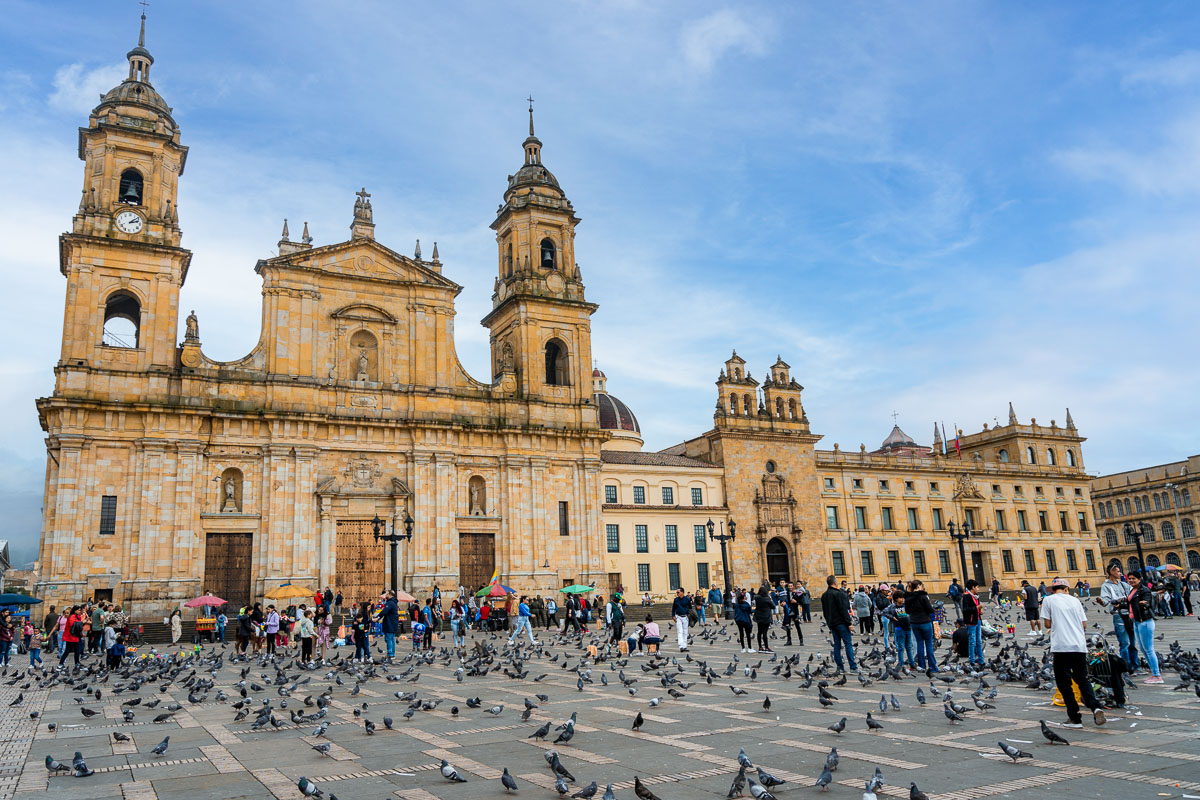
Take a cable car to Monserrate
The soaring mountain of Monserrate provides some of the most stunning views over Bogota. Unless you’re contemplating making the steep climb to the top, you’re probably best off taking the cable car!
Once you’re here, you might find yourself a bit puzzled as there’s both a cable car and a funicular. From what I could gather, the funicular runs until noon, with the cable car operating from this point until late. Both stick to similar routes, so it doesn’t matter too much which you go for.
You’ll pay 23,500 COP ($6 US) for a round-trip ticket, though it’s usually reduced to 14,000 COP ($3.5 US) on Sundays.
After you reach the summit, soak up the fantastic vistas and take some time to check out the Sanctuary of Monserrate, a huge Catholic shrine.
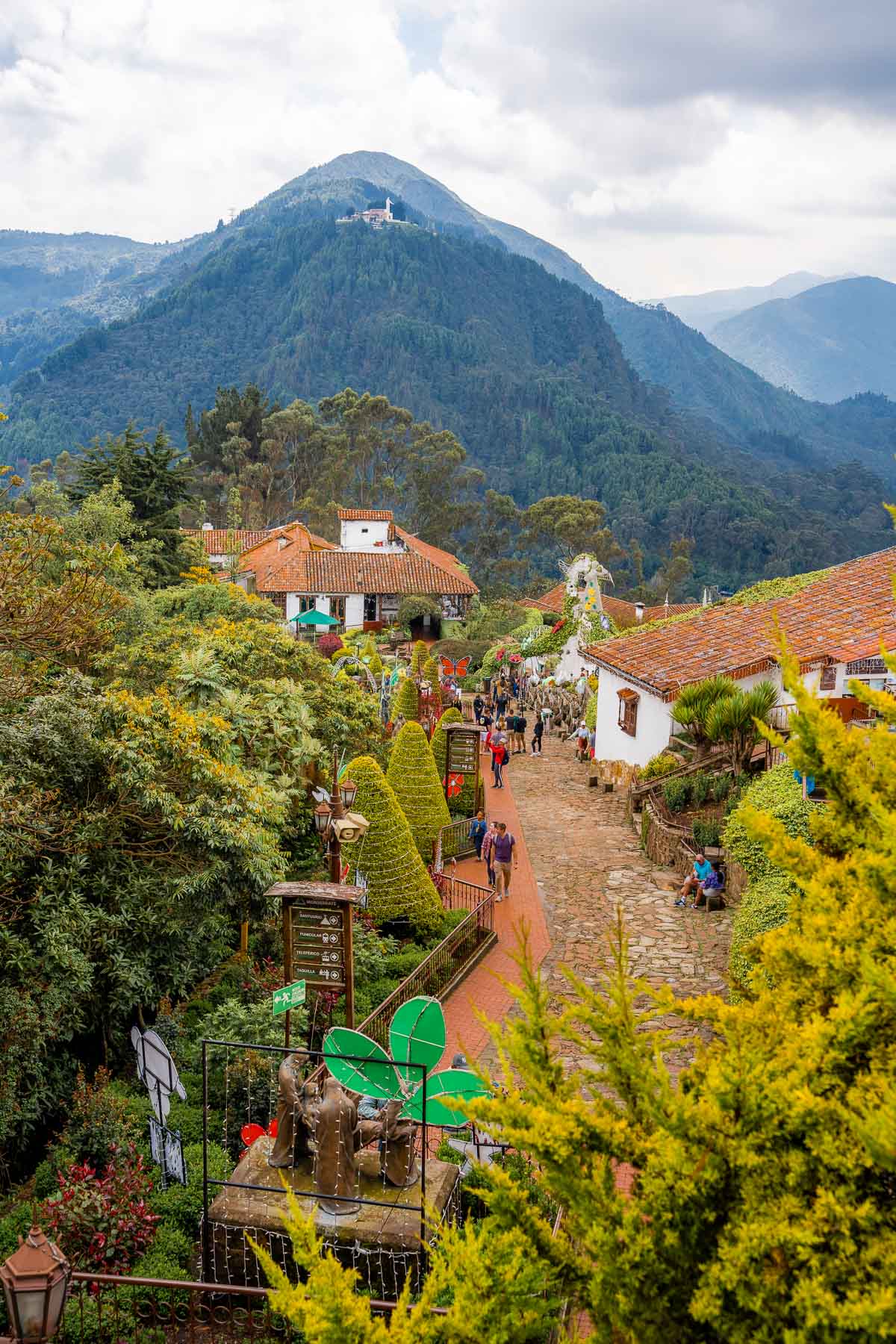
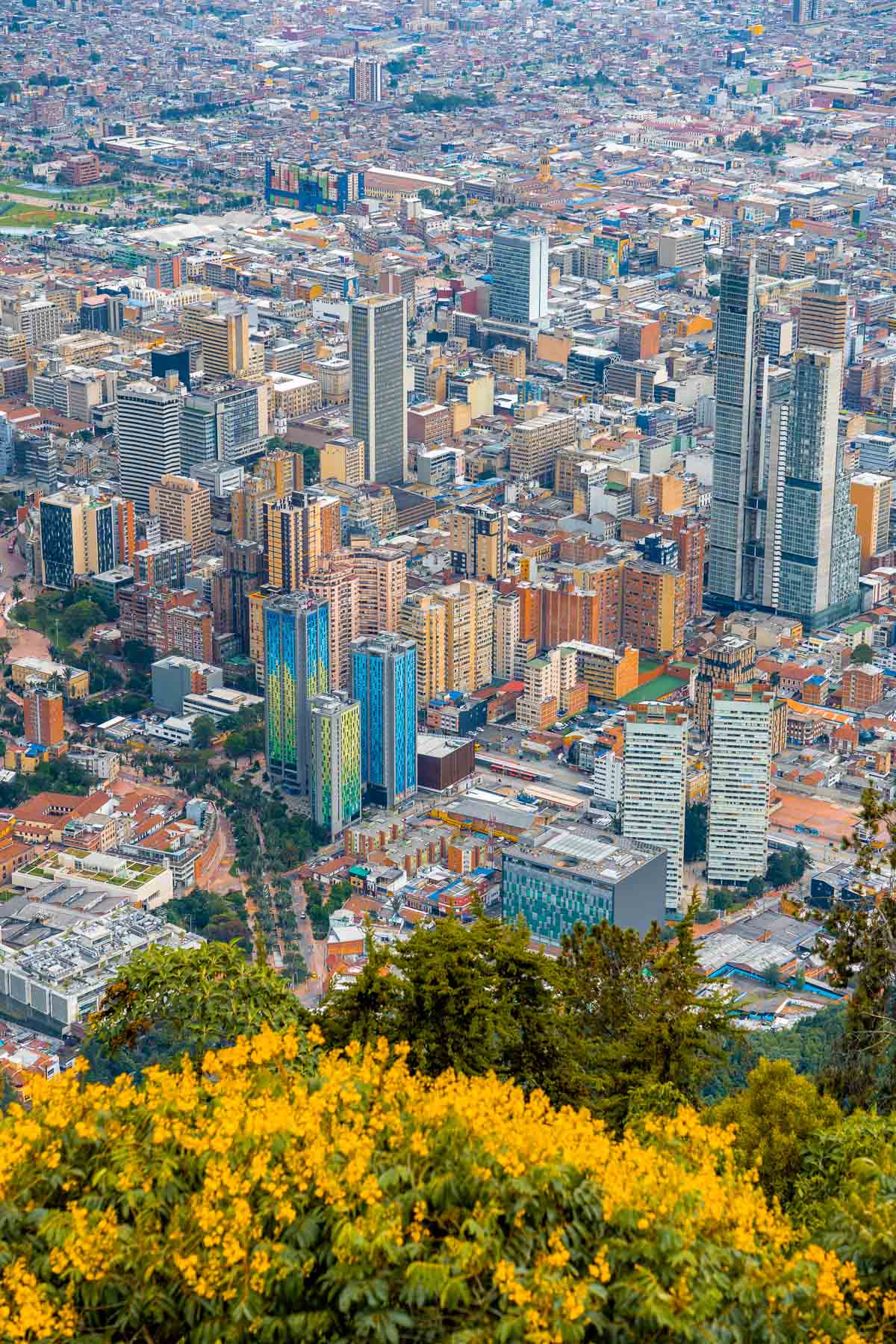
Visit the Gold Museum
Discover the traditions and customs of Colombia’s indigenous communities at the Gold Museum.
Housing over 34,000 pieces of gold, along with other metals and ceramics from before the Spanish conquest, the Gold Museum is one of the most fascinating exhibitions in the country.
The most famous piece in the collection is the Muisca raft, a stunning gold sculpture depicting ancient ritual ceremonies. I was really surprised to see how tiny it is in real life!
Entry is just 5,000 COP ($1.3 US), and this fee gives you access to four floors of dazzling exhibits showcasing the craftsmanship of native Colombians.
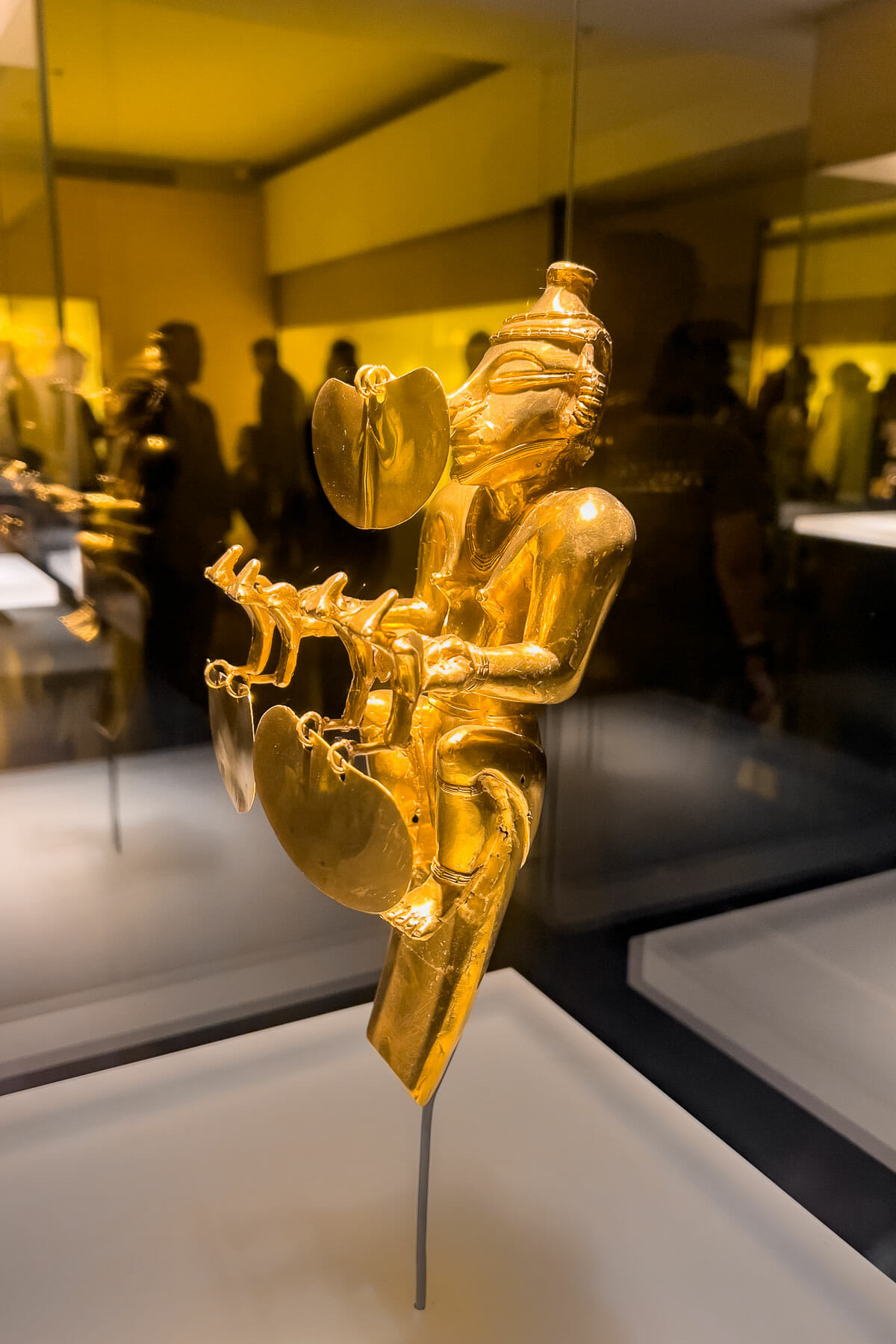
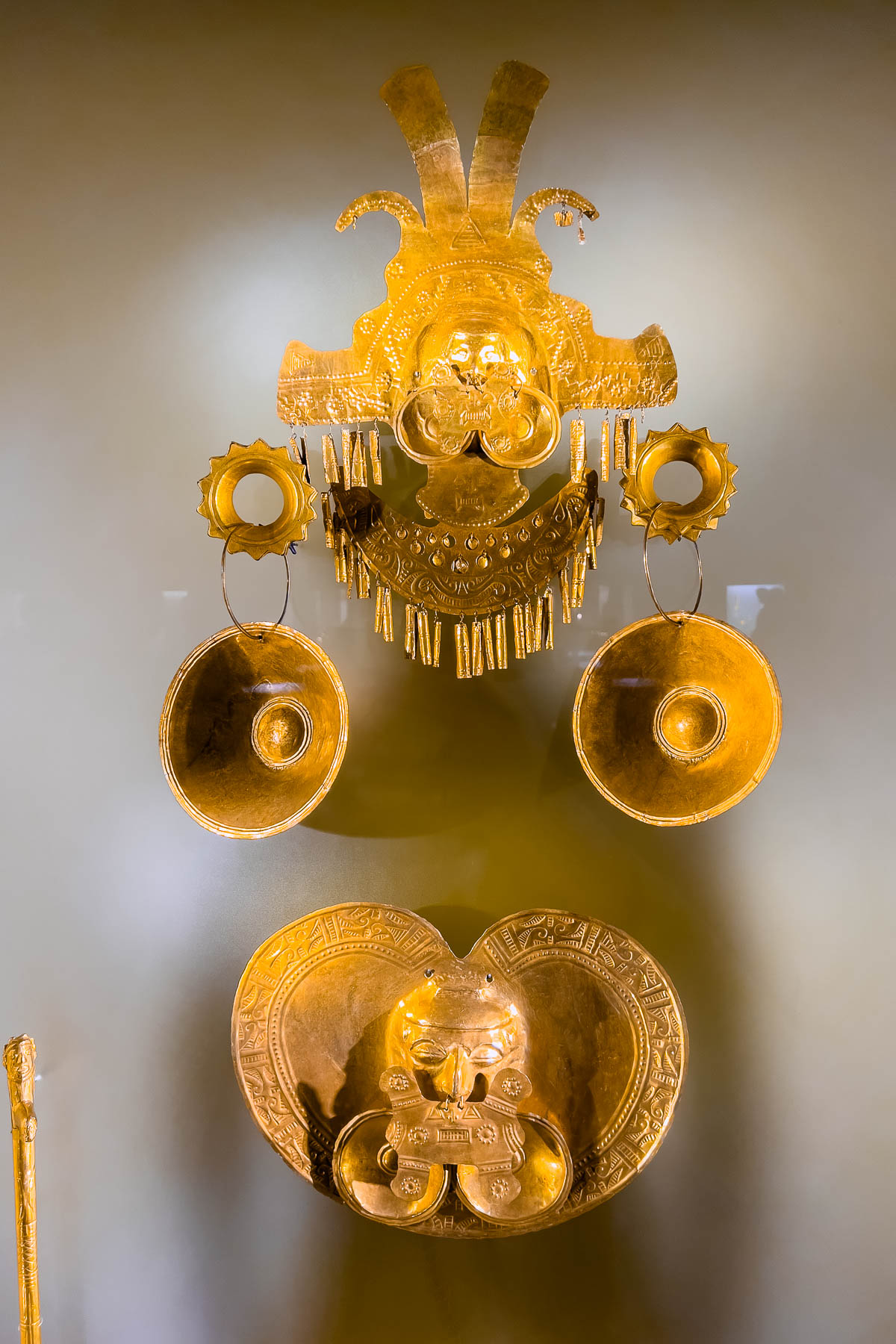
Explore the Botero Museum
Get your culture fix at the Botero Museum, a superb art gallery in La Candelaria displaying the works of Fernando Botero, an acclaimed Colombian artist.
In addition to Botero’s own paintings and sculptures, you’ll also find an array of pieces from his private collection by the likes of Picasso and Pissarro. My personal favorite was Botero’s quirky take on the Mona Lisa!
This museum is free of charge and is set in a gorgeous colonial home. You can even see the top of Monserrate from the courtyard!
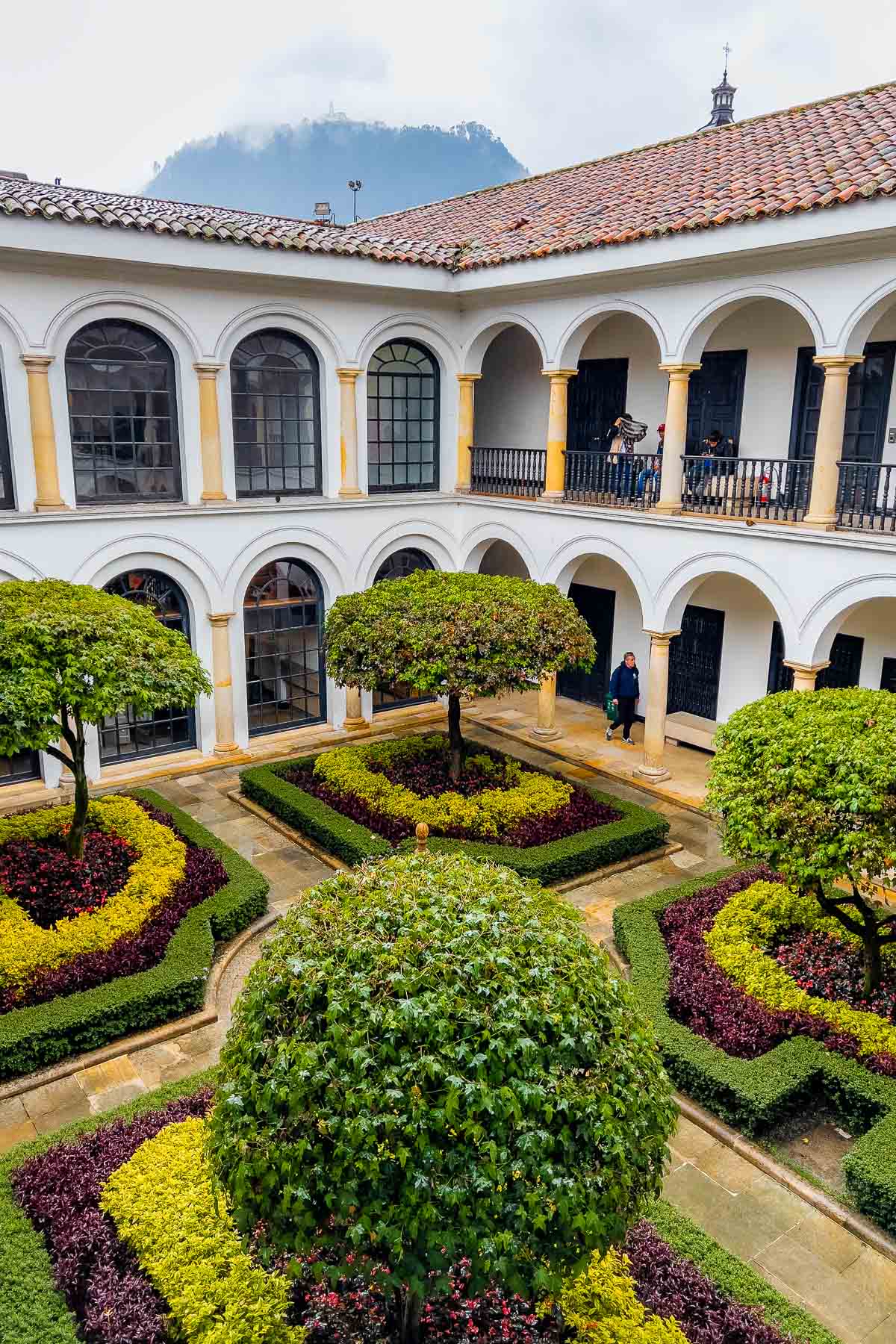
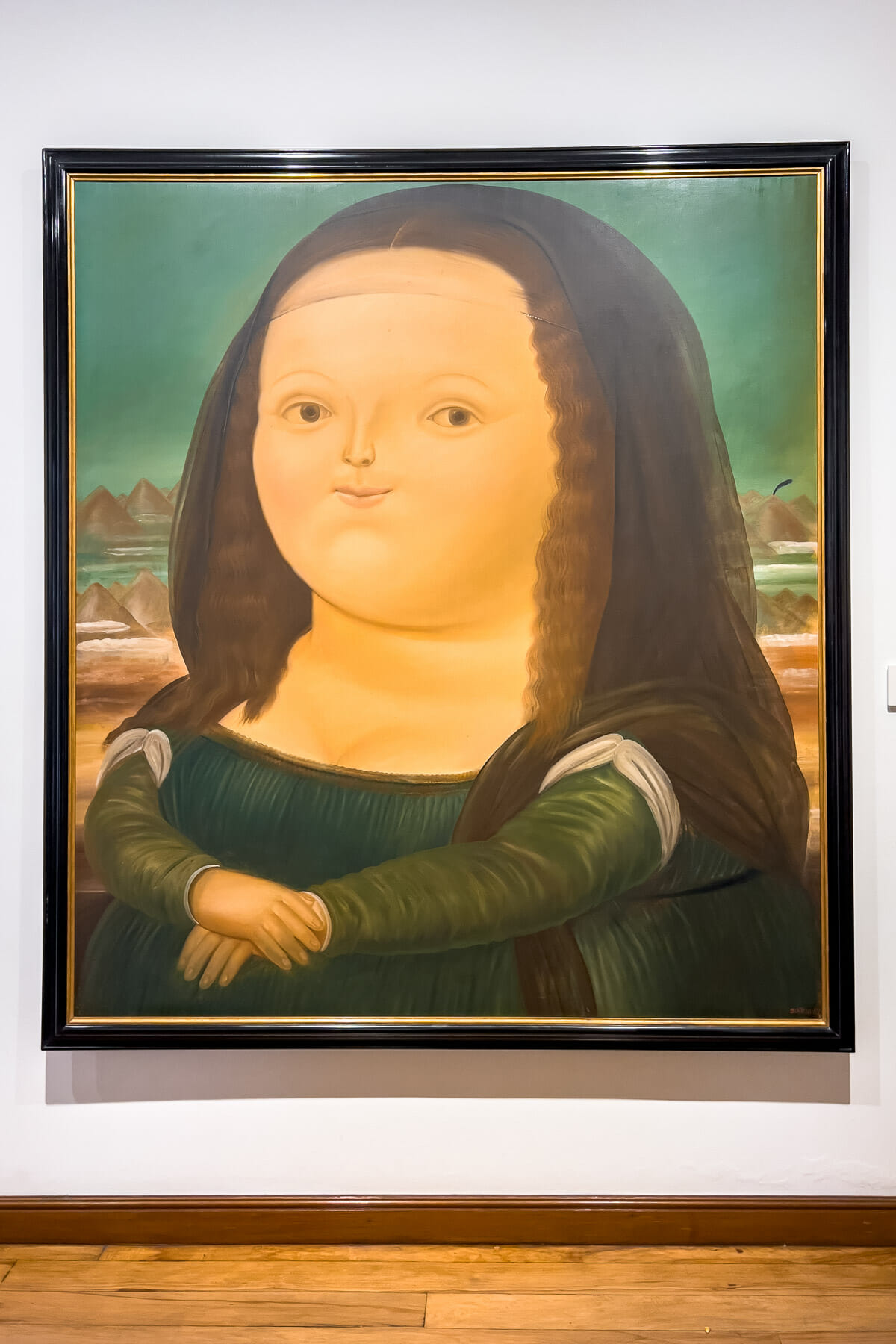
Take a day trip to Guatavita and the Salt Cathedral
Just over an hour outside Bogota lies Guatavita, one of the best places to take a day trip from Bogota. It’s a lake formed inside a crater surrounded by lush, dense trees.
Steeped in legends and myths, Guatavita was believed to be a sacred site for indigenous communities and the location of ritual offerings in gold.
You can also visit the Salt Cathedral, an underground Catholic church built inside a former salt and emerald mine. Located 200 meters underground and covered in surreal artworks, this cathedral is so unique and unlike anything I’d ever seen before.
Since both attractions are quite far from Bogota, it’s best to join a tour to make the most of your time and learn more about their cultural significance.
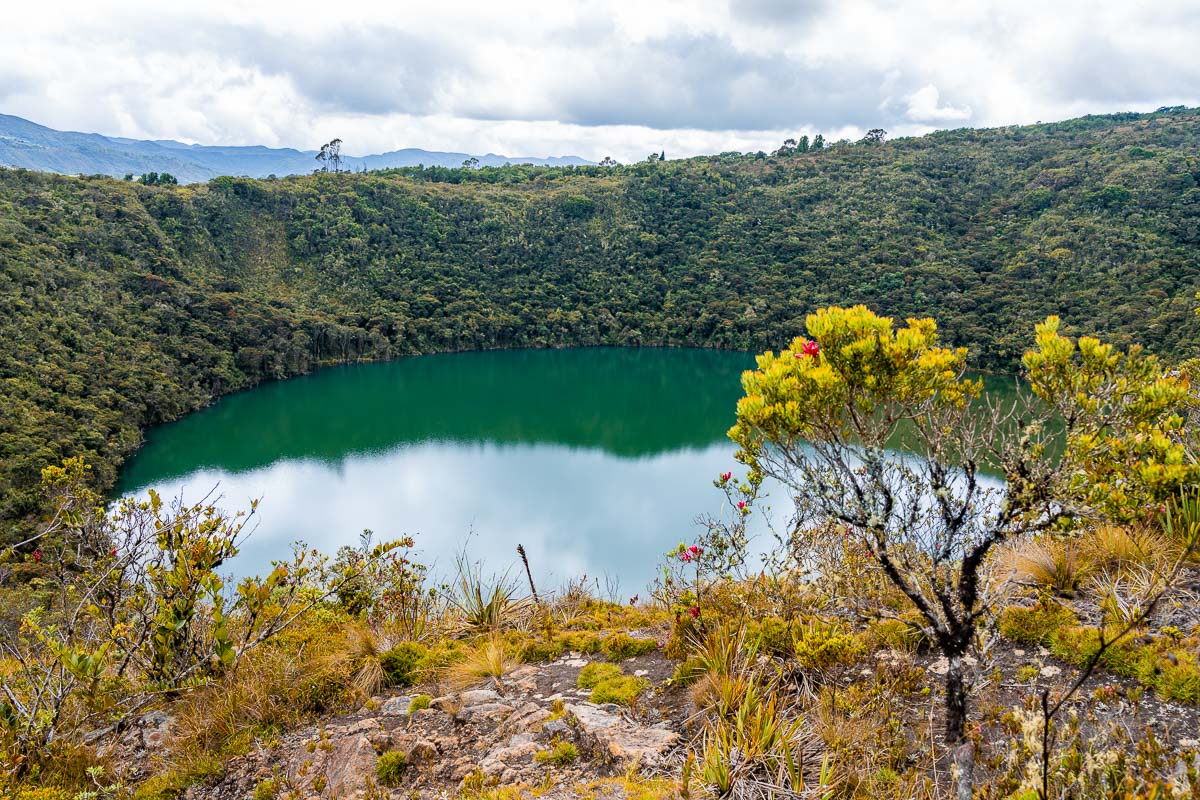
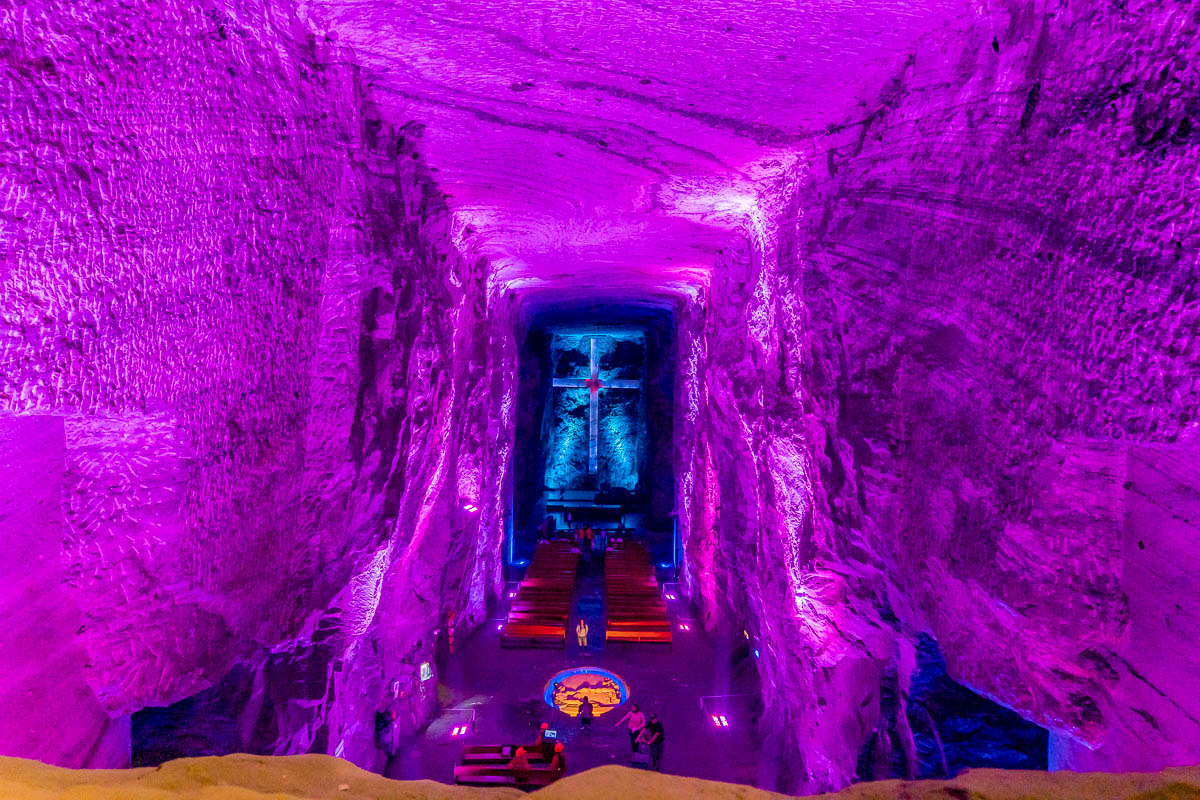
Shop at the Paloquemao Market
A local fruit market may seem like a peculiar addition to this list, but the Paloquemao is the largest food market in Bogota and is a must for any avid foodies.
It’s made up of thousands of stalls selling every fruit under the sun, locally sourced meats, tasty vegetables, and fresh flowers. There are even a few hidden restaurants tucked away between the dizzying array of stands if you fancy a truly authentic dining experience.
We spent around an hour wandering through the rows of colorful produce and ended up picking up a bunch of incredible (and quite unusual!) fruits along the way.
Join a graffiti tour
Like many of Colombia’s most endearing cities, art plays a huge part in promoting community spirit and promoting local talent.
Embarking on a graffiti tour is a super enjoyable and informative way to spend a few hours, as your local guide explains the significance of the many murals that are found throughout La Candelaria.
You might even have a chance to meet some of the artists and watch them at work!
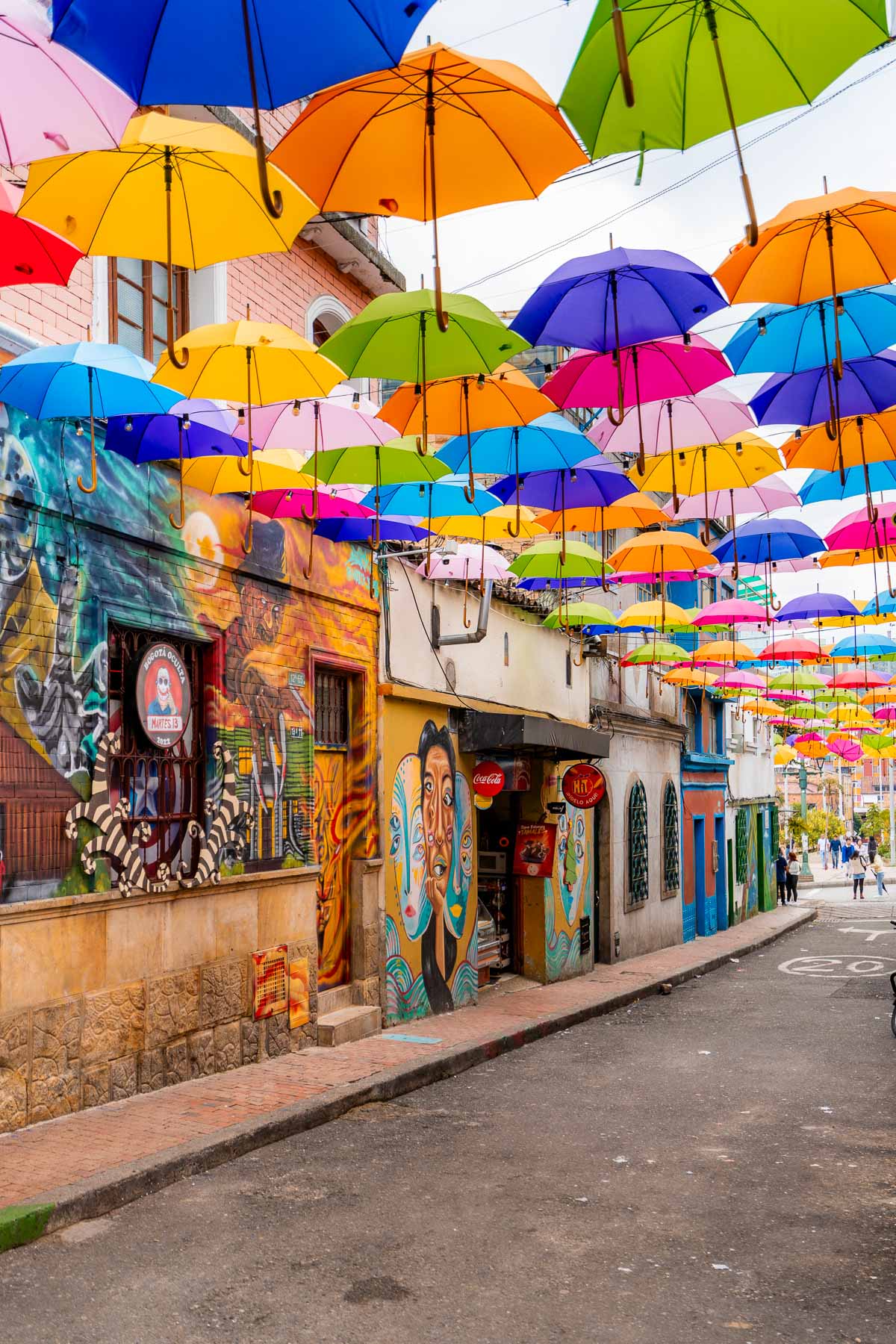
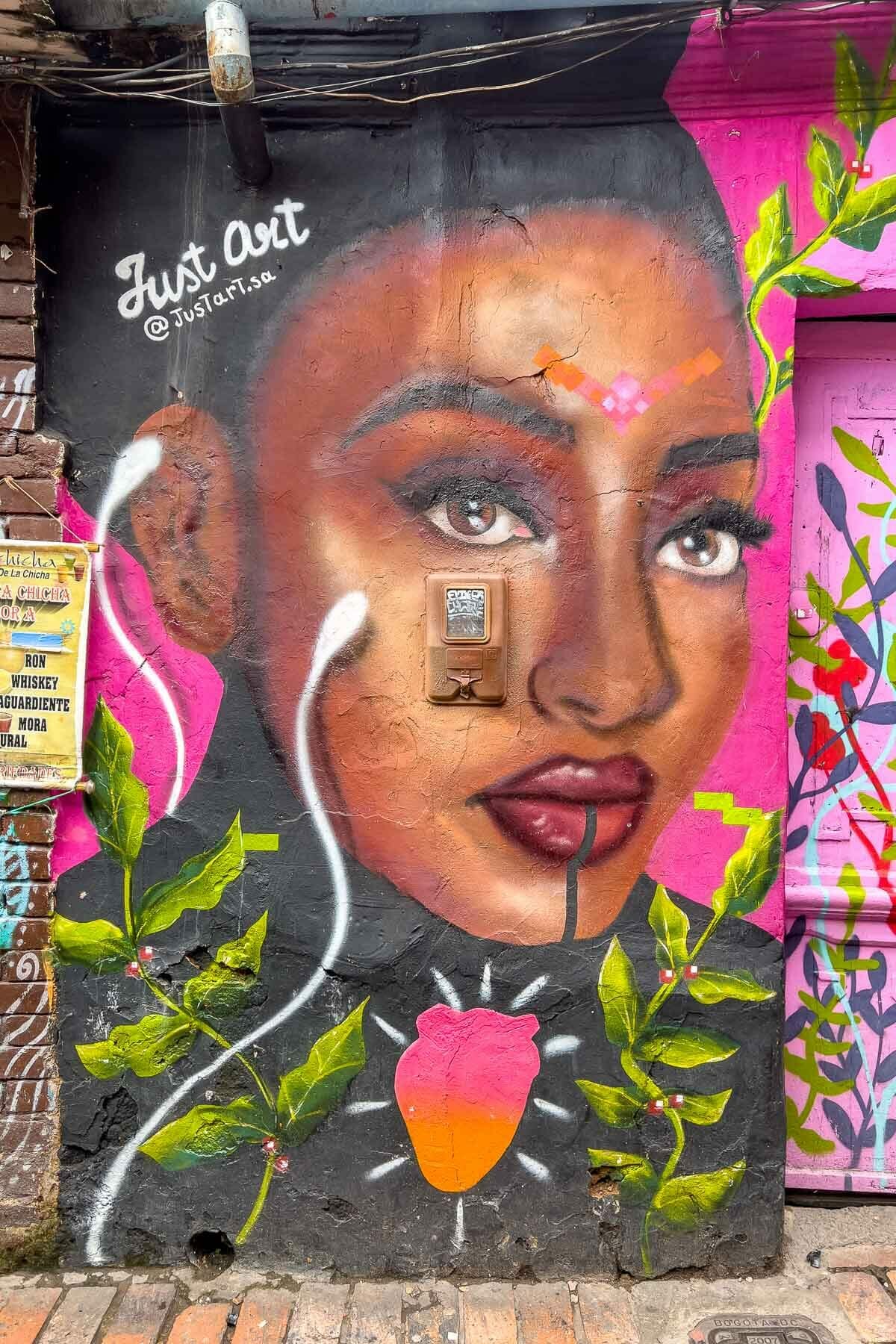
Where to eat in Bogota
- La Puerta Falsa Restaurant: This quaint eatery in La Candelaria happens to be one of Bogota’s oldest cafes and serves up some wholesome Colombian eats. You can’t leave without trying their tamales and hot chocolate.
- El mejor ajiaco del mundo: Another spot for anyone hoping to sample some traditional grub, this cozy restaurant was where I had some of the tastiest ajiaco of my whole trip. This place gets bonus points for its excellent coffee.
- Andrés D.C. Bogotá: For something a little livelier, it doesn’t get much better than Andrés D.C. Bogotá. Spread out over four floors, each with its own theme, everything from the decor and atmosphere to the mouthwatering food was top-tier here.
- Arte y pasión Café: With two branches in Bogota, you’ll never be too far from some heavenly brews. Not only is the coffee amazing, but the staff really goes the extra mile to make your visit a memorable experience.
- Café del Mercado: Another local favorite, Café del Mercado, became our go-to for coffee and sweet treats when we needed a midday pick-me-up.
- Restaurante Mister Ribs ZonaG: If it’s a hearty feed you’re after, you won’t be disappointed here. Drool-worthy BBQ ribs and perfectly cooked steaks are what they do best.
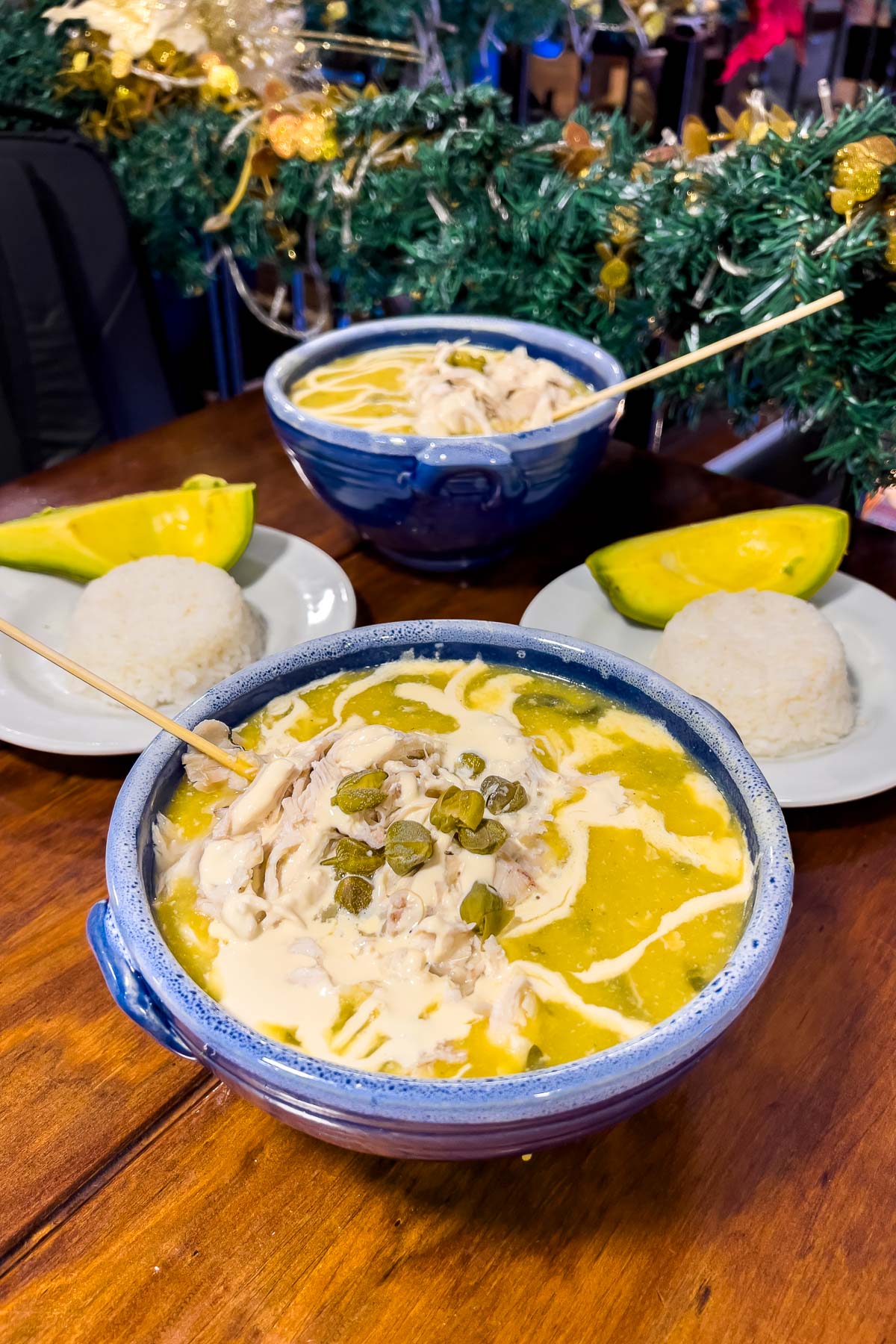
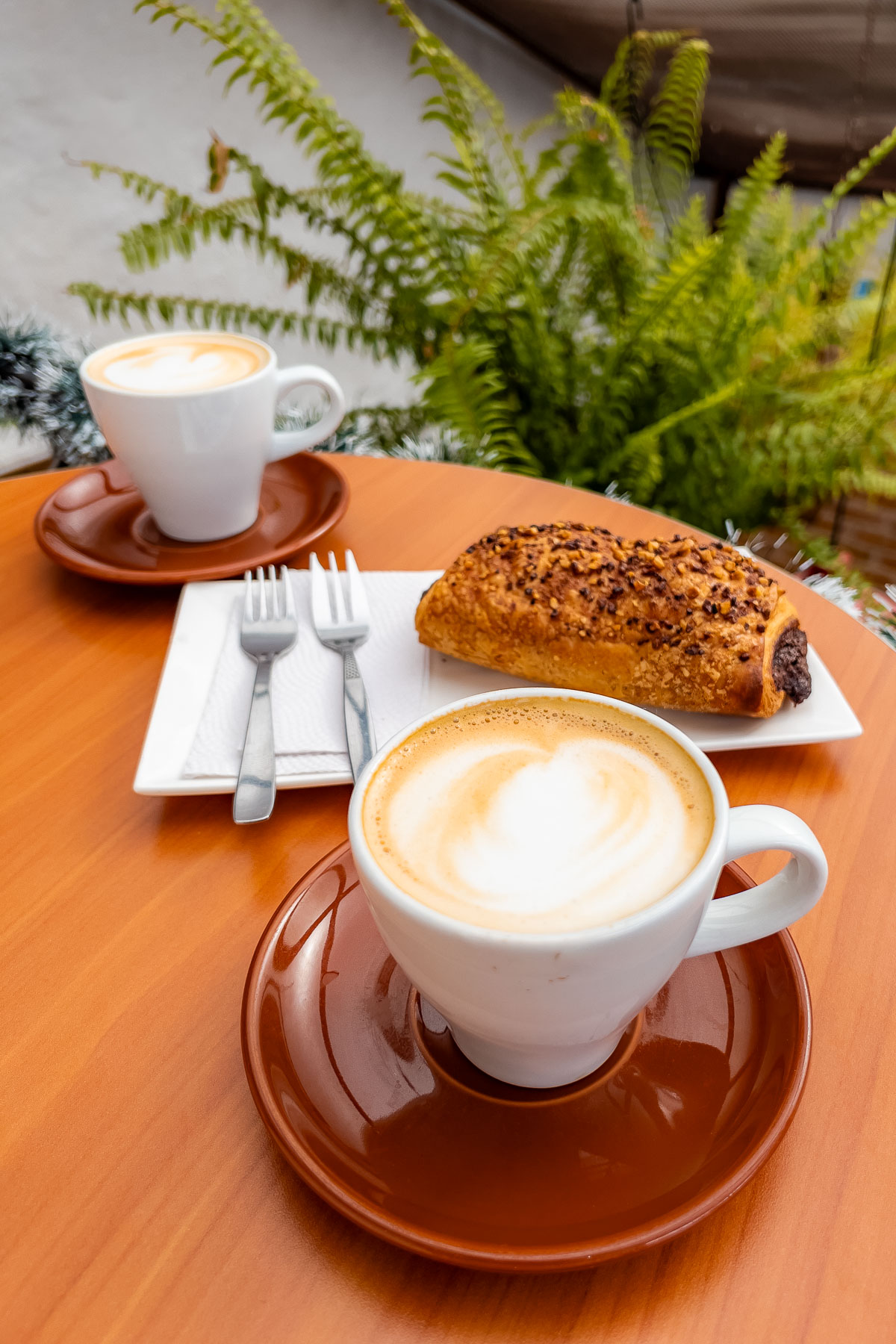
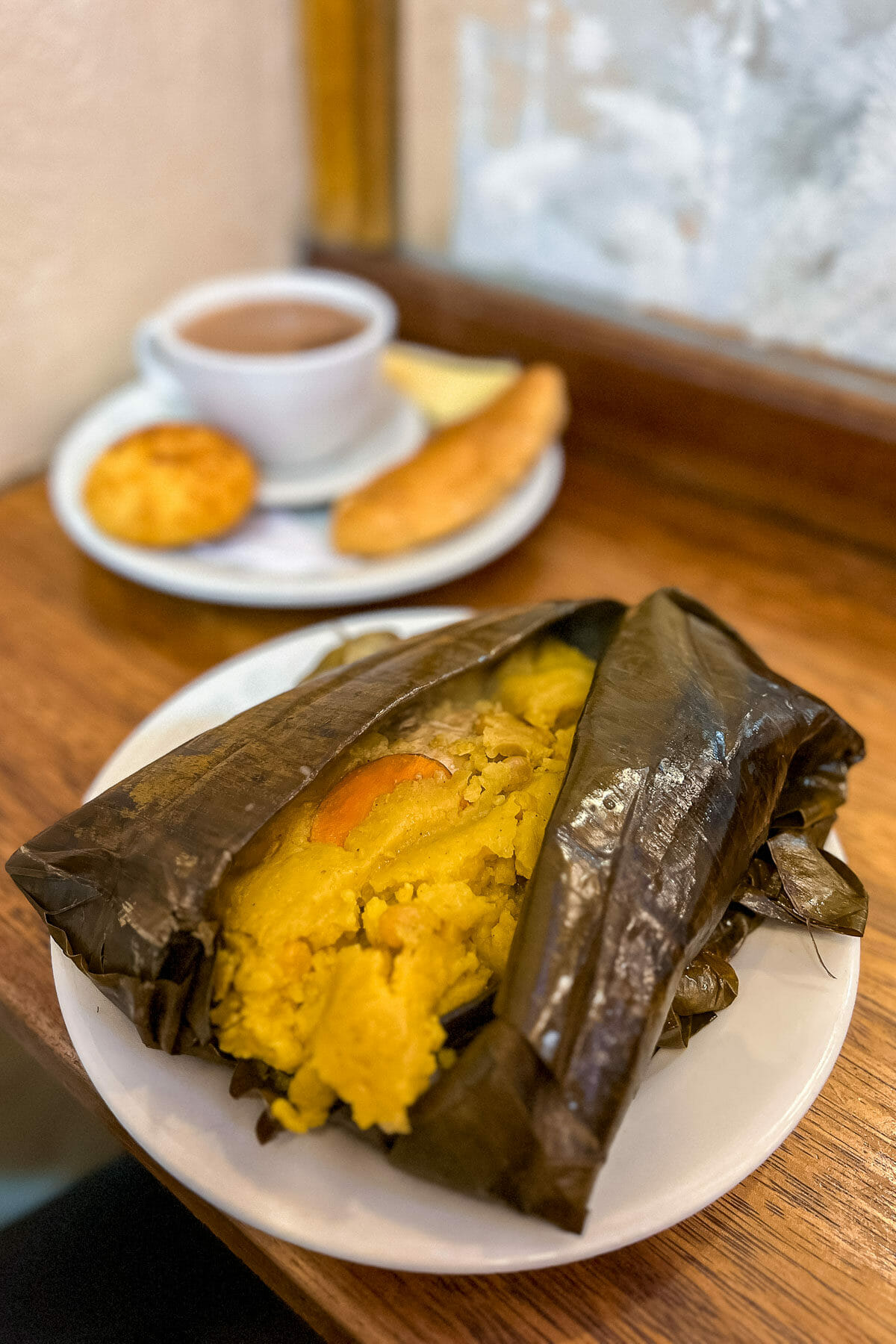
Where to stay in Bogota
For a 3-day visit to Bogota, we recommend staying in one of these neighborhoods:
- La Candelaria: This is the oldest part of the city and offers a true taste of local life. You’ll be close to all the main attractions and won’t have to venture far for delicious food.
- Zona G: Known as the “Gourmet Zone,” this area is home to some of the best restaurants in Bogota. It’s also a great place for shopping and nightlife.
- Chapinero: This trendy neighborhood is popular among young professionals and offers a vibrant atmosphere with plenty of bars, cafes, and shops to explore.
For a more detailed breakdown of each district, take a look at my guide for where to stay in Bogota.
If you’re in a hurry, here are some quick recommendations for different budgets.
- Luxury | Salvio Parque 93
- Mid-range | Hotel Rosales Plaza
- Budget | Selina La Candelaria Bogota
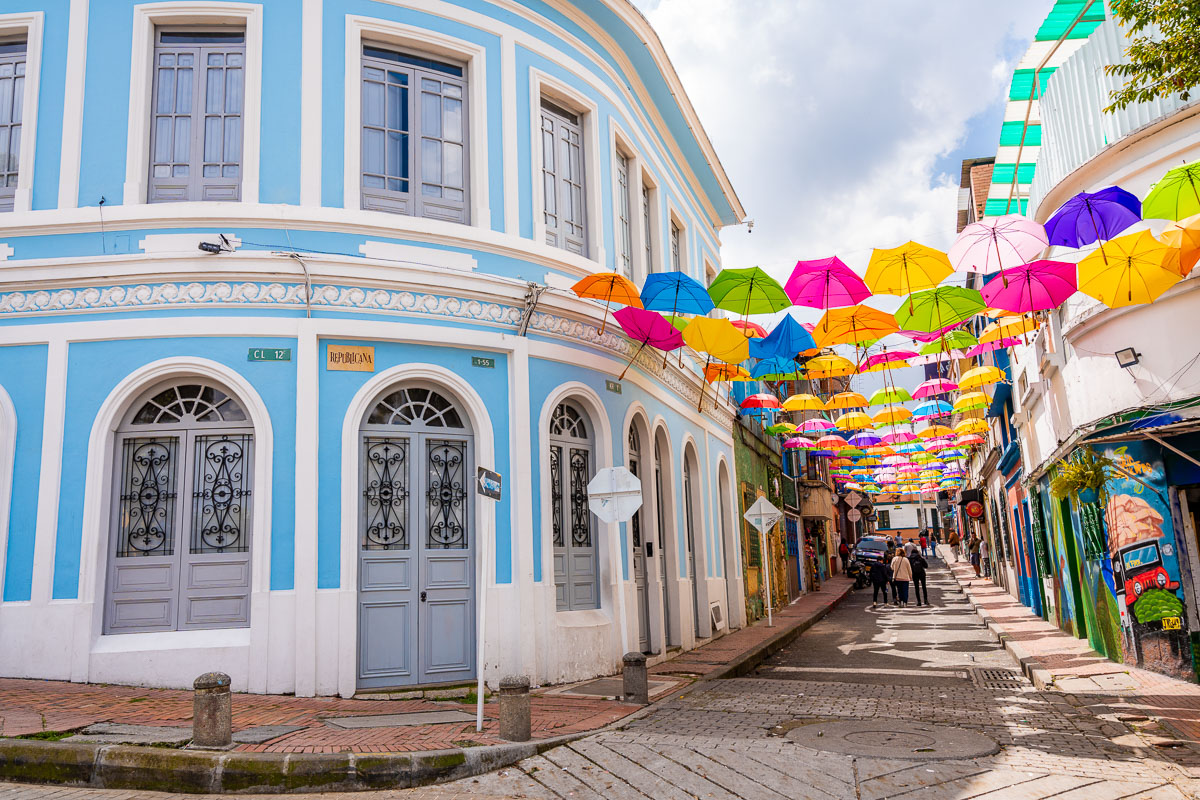
Day 4-6: Salento
Located around 300 km from Bogota, Salento is one of the smaller towns in the country but is an absolute must-visit for anyone spending 2 weeks in Colombia.
While Salento is a really charming town that’s worth seeing in its own right, most people come here to check out the coffee farms and Cocora Valley (Valle de Cocora), where you’ll find the tallest palm trees on the planet!
Although it’s a small town, there are still plenty of things to do in Salento to keep you busy for a few days. I recommend setting aside 3 days to fully explore the area and get a taste of that famous Colombian coffee.
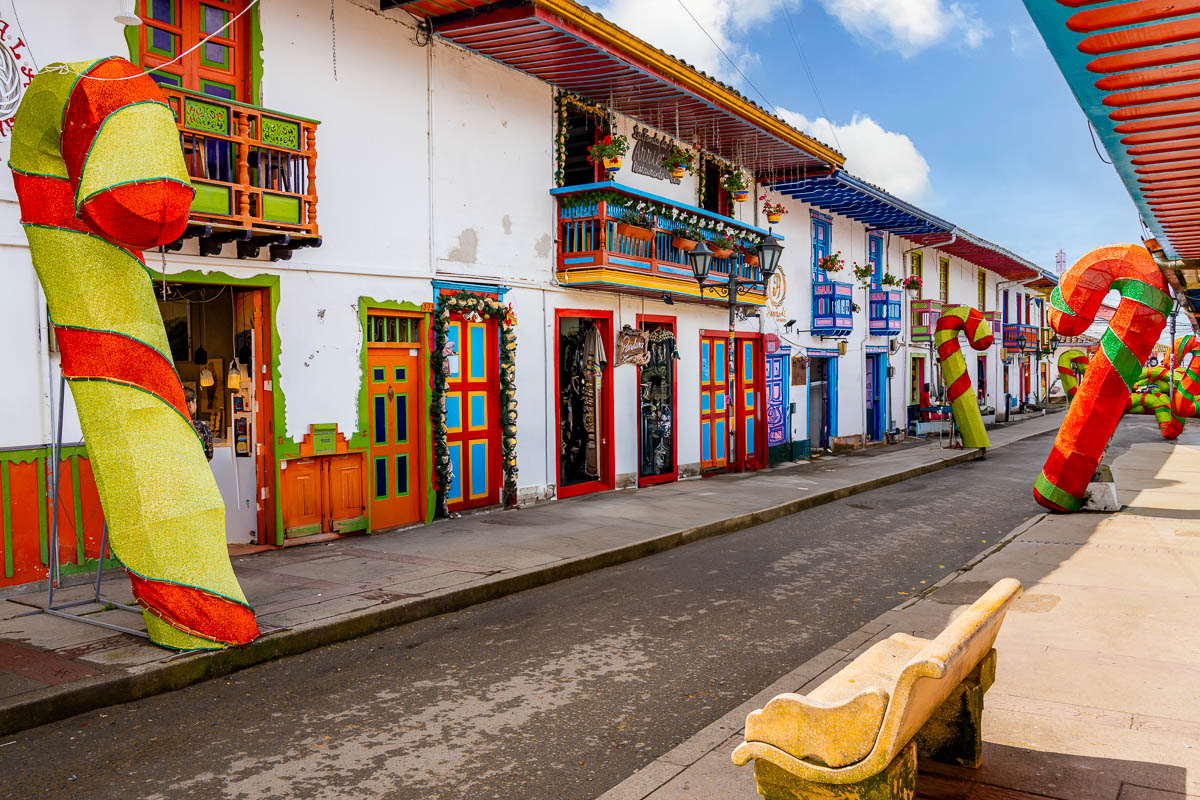
How to get to Salento
Although Salento doesn’t have an airport, the best way to get there is to take the hour-long flight from Bogota to either Pereira or Armenia. Both cities are located around an hour away from Salento and can be reached by bus or taxi.
There are numerous flights every day operated by Avianca and LATAM Airlines, with prices usually starting from $60 US one-way.
I recommend catching an early morning flight on day 4 which, means you will have 2.5 days to explore Salento before heading to Medellin.
Alternatively, you can jump on the overnight bus from Bogota to Salento, which takes around 7 hours. This is certainly the cheaper option, with buses ranging from around 60,000-120,000 COP ($15-30 US).
There are also a couple of departures during the day if you’re not keen on traveling overnight, though this will eat into more of your sightseeing time.
Best things to do in Salento
Hike in the Cocora Valley
A staple on any Colombia 2 week itinerary is a visit to the iconic wax palm trees of Cocora Valley.
Getting to Cocora Valley from Salento is simple, as all you’ll need to do is hop into one of the many 4X4 jeeps that depart from the town every hour between 6 am and 5 pm.
Once in the valley, you can decide on which hiking trail to tackle depending on your fitness level and time constraints.
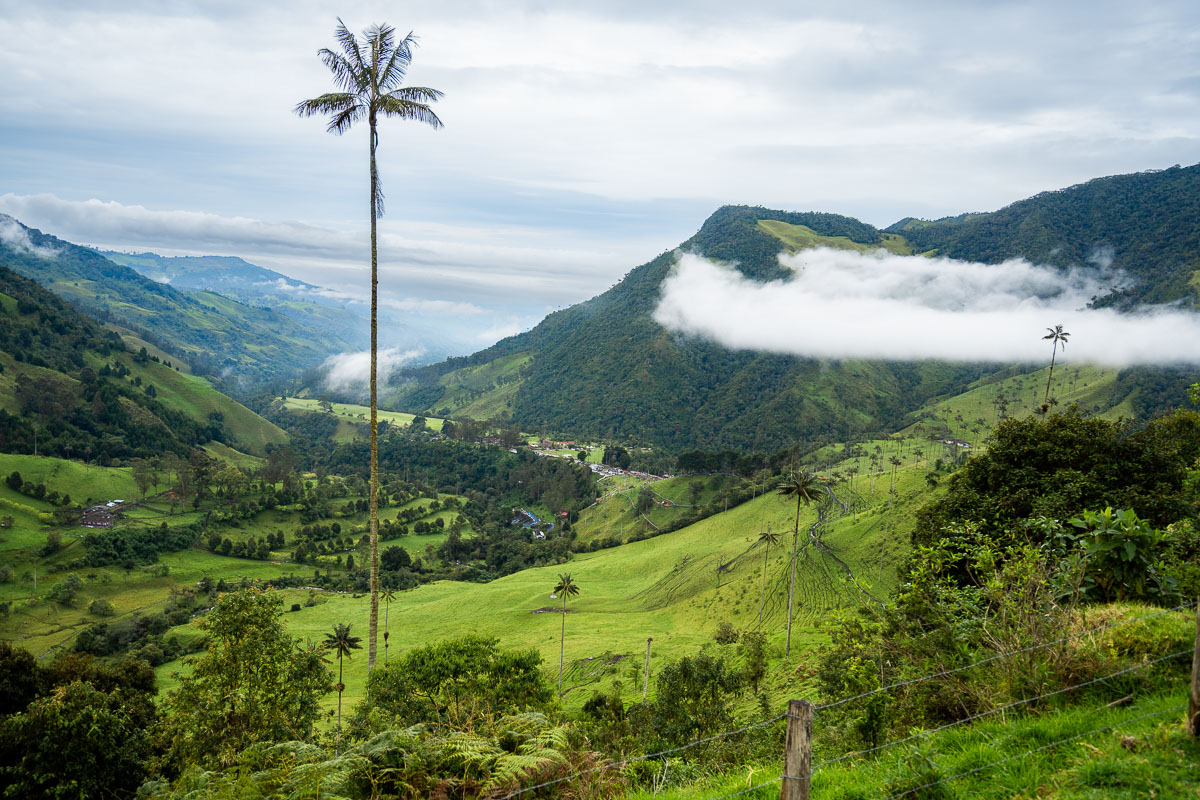
The most popular option is to complete the full loop of 12 km which takes around 5 hours. This will give you the best views of the palm trees and also lead you through lush cloud forests, past waterfalls, and across rustic wooden bridges.
If you’re not feeling up to the big loop, there is a shorter trail that will take you to a viewpoint where you can still take in the amazing views of the valley without exerting yourself too much. It’s 5 km in total and should take around 2 hours to complete.
Another popular activity in Cocora Valley is horseback riding, where you can explore the area on a guided tour while learning more about the history and culture of Salento.
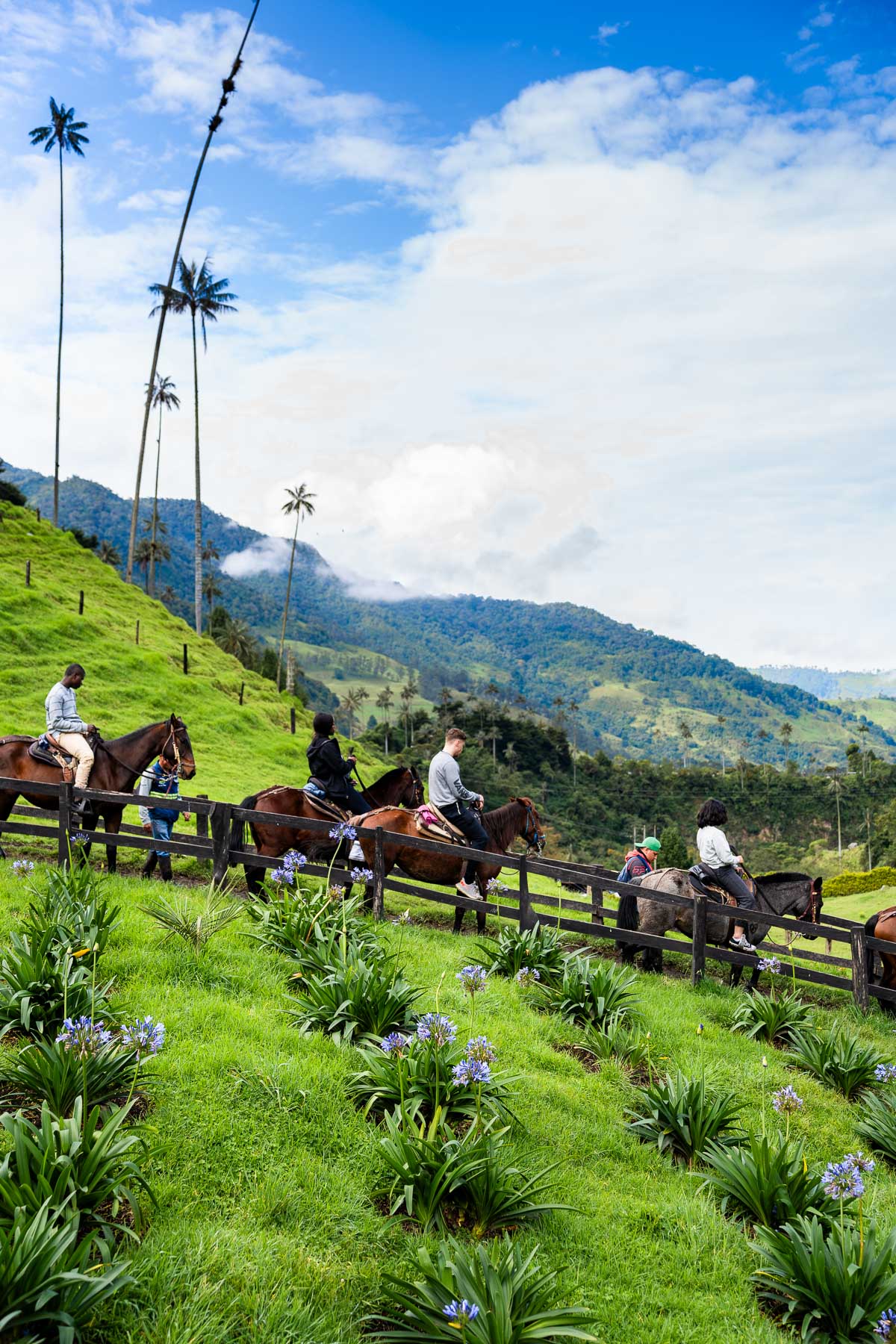
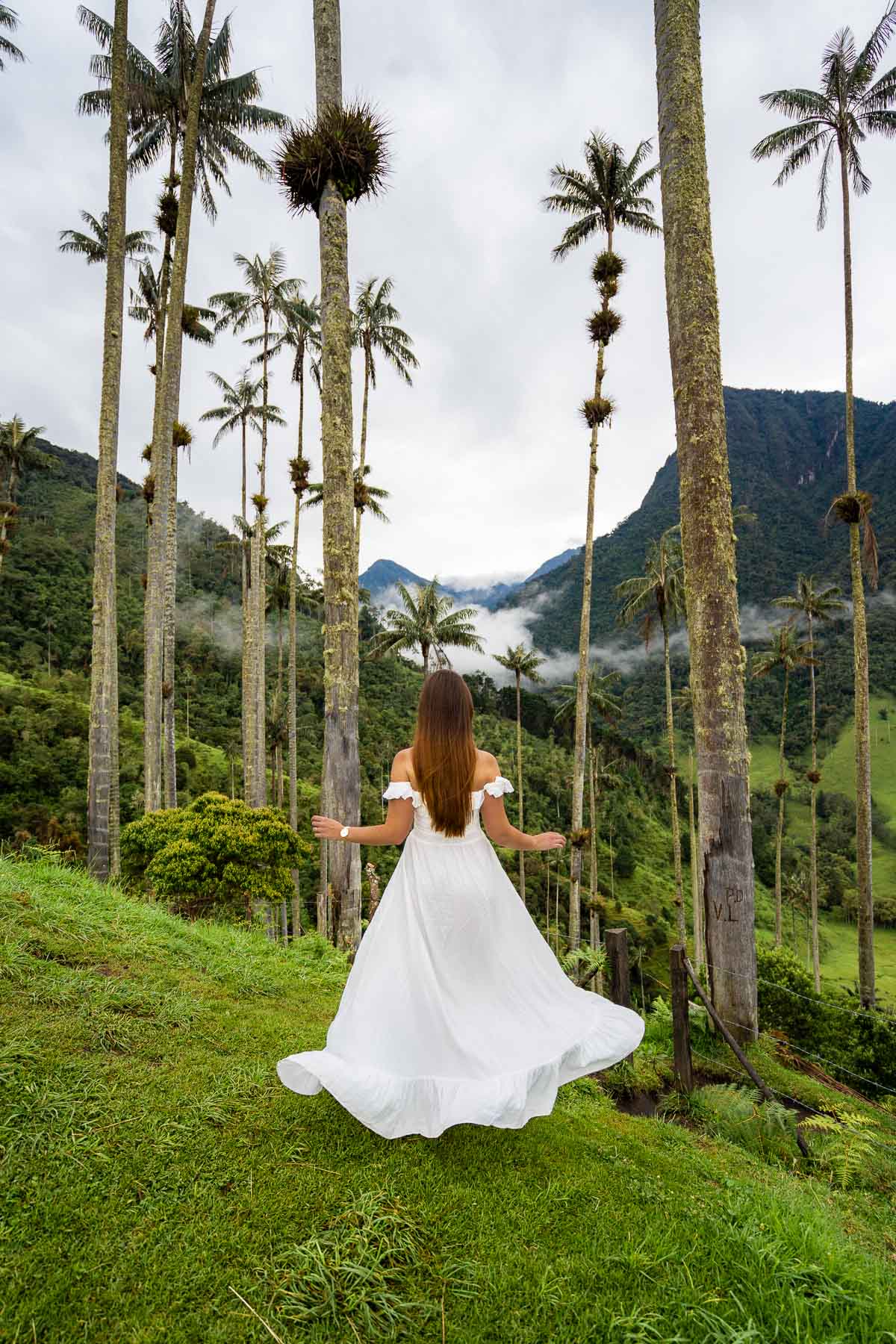
Tour some coffee farms
As Salento sits in the heart of Colombia’s coffee region, it would be a shame not to take a tour of one of the many coffee farms here.
You can choose to visit just one farm during your stay, or you have the option of embarking on the much-loved coffee route that loops around through five coffee plantations over a 9 km walking trail.
At each coffee farm, you’ll learn about the history and production of coffee in Colombia, have a chance to taste some freshly brewed coffee, and even have a go at picking your own beans.
We chose to visit Finca Buenos Aires, a small family-run coffee farm located just outside of Salento. Our coffee tour guide was incredibly knowledgeable and passionate about coffee, making it a truly informative and enjoyable experience.
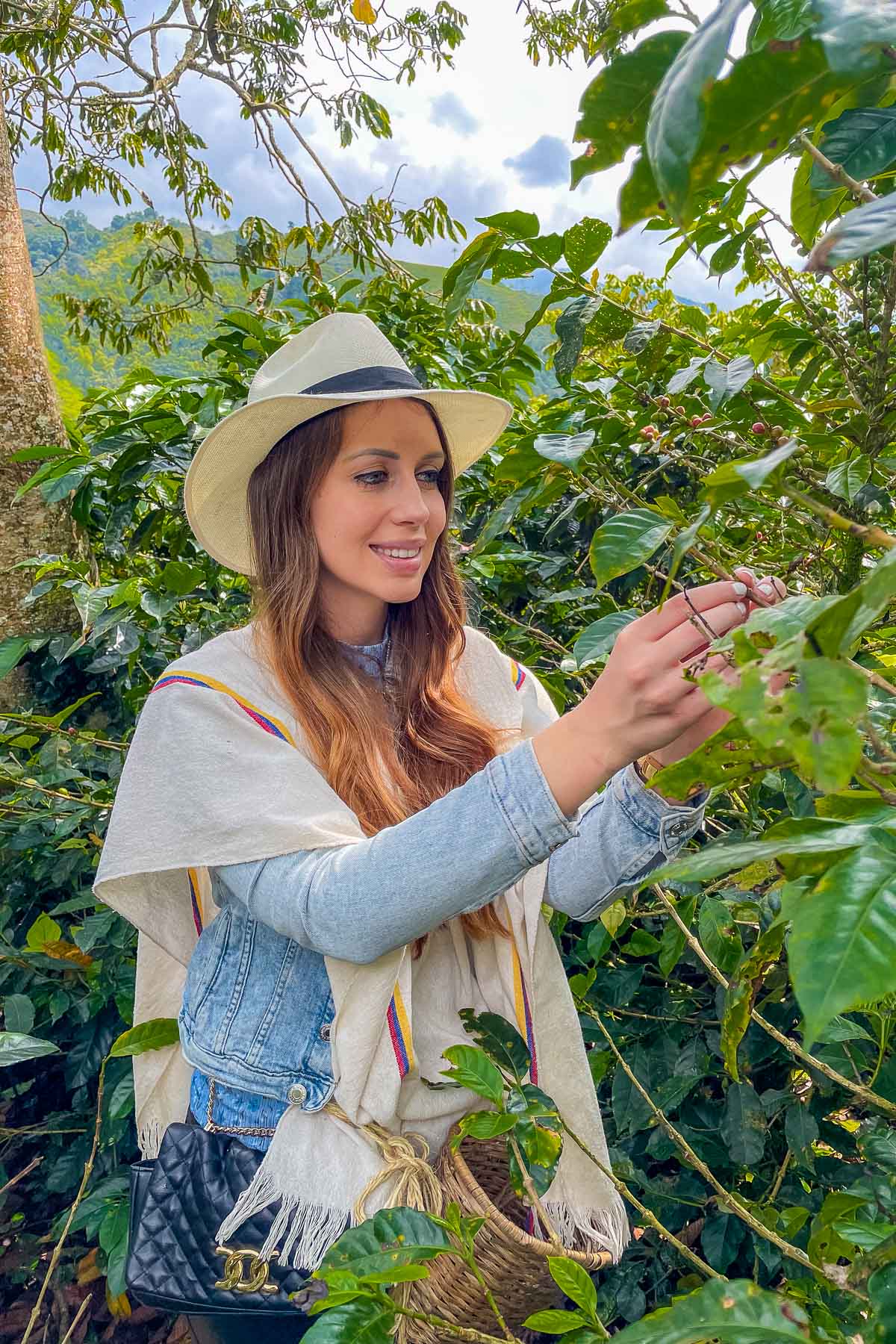
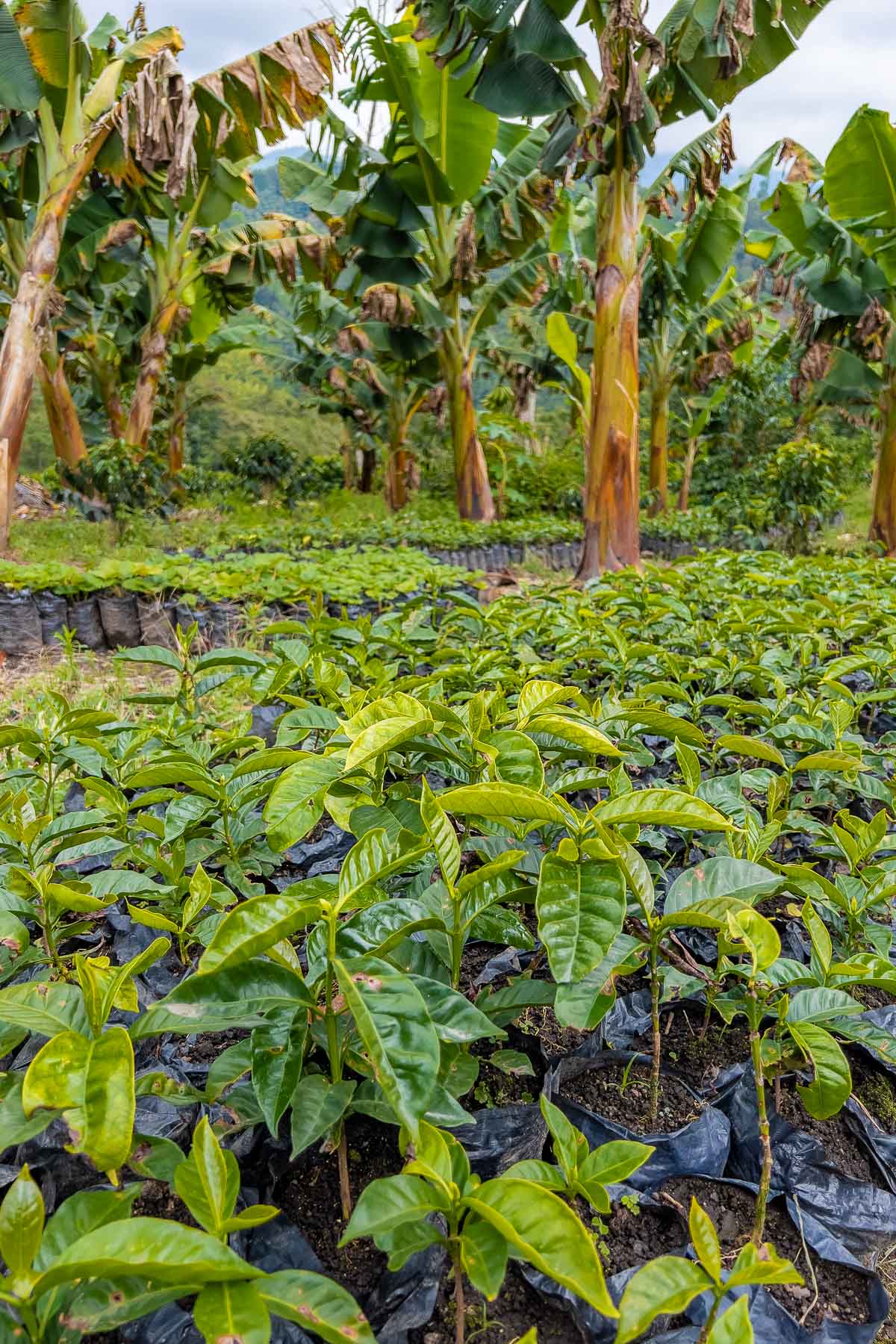
Explore the town of Salento
Make sure you allocate some time in your schedule for a leisurely stroll around Salento town, as the adorable and brightly-colored buildings are bursting with charm and history.
Some highlights to check off your list include Plaza de Bolivar, the bustling town square, and Calle Real, where you’ll find a bunch of souvenir shops selling handicrafts and trinkets.
For the best panoramic views of Salento and the surrounding countryside, climb the 250 steps up to Mirador Alto de la Cruz. It’s totally worth the effort!
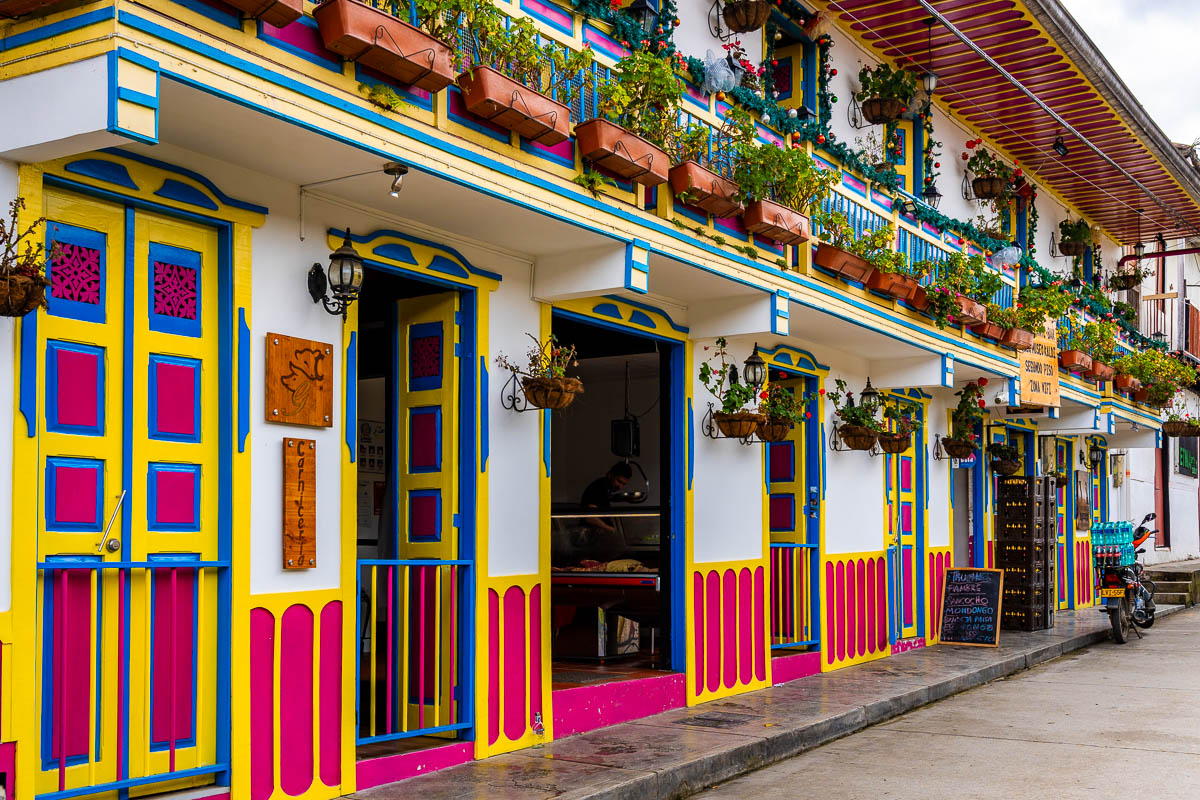
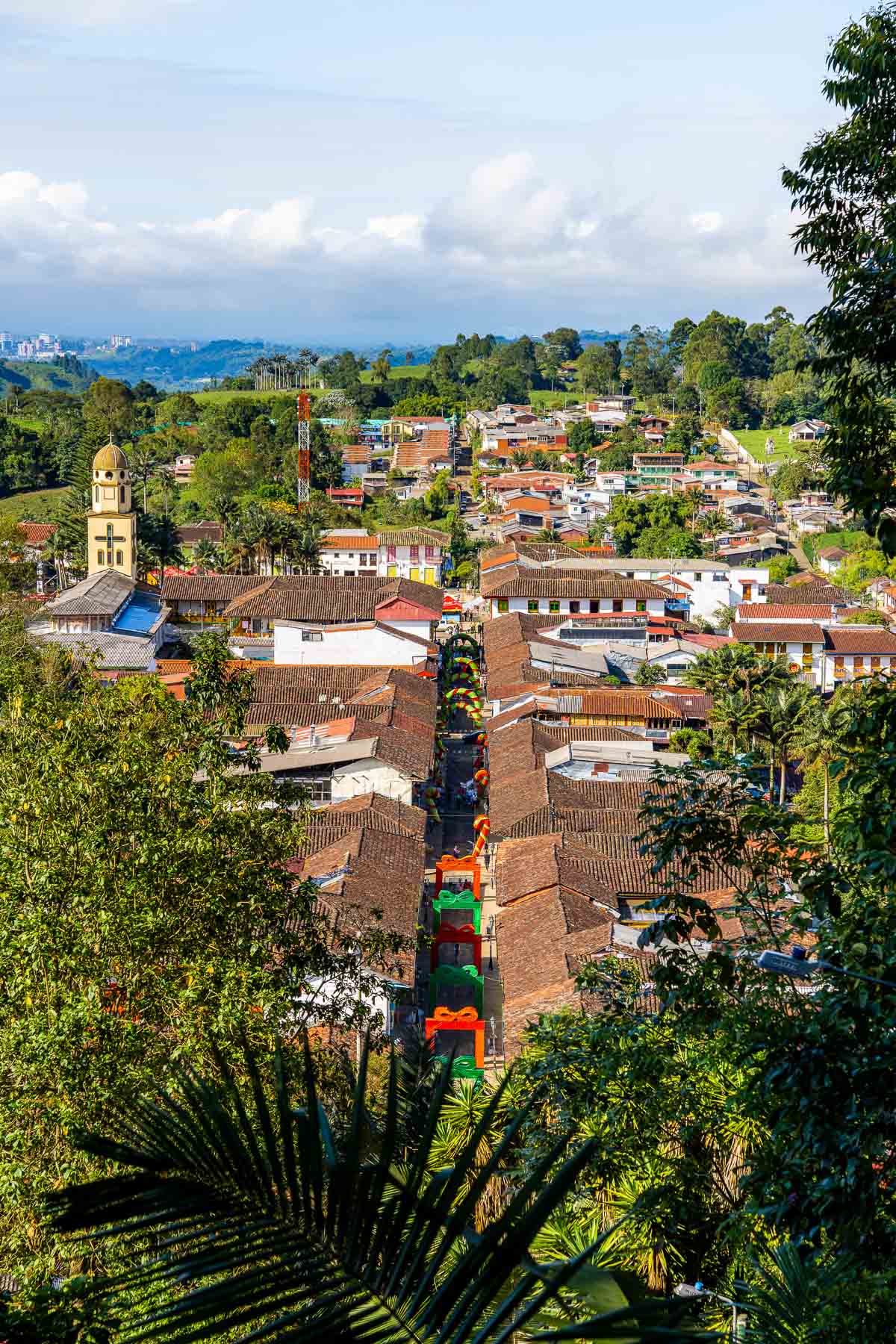
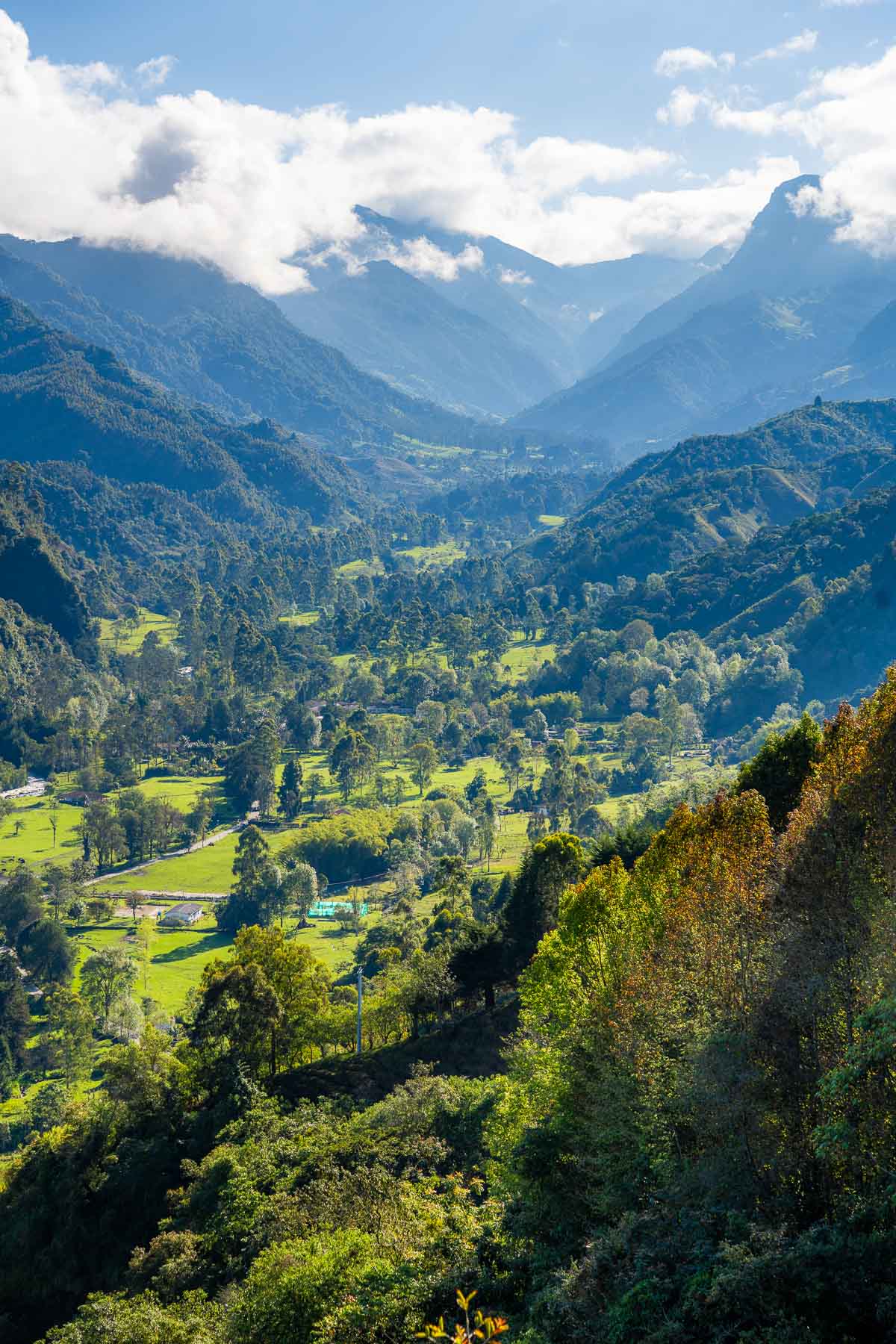
Take a day trip to Filandia
Filandia has a similar vibe to Salento, but it’s much more undiscovered and doesn’t typically attract as many tourists as its busy neighbor.
You can simply take a shared 4X4 from the center of Salento to Filandia for just a few thousand pesos and spend the day wandering around, checking out the street art, and soaking up the local culture.
Picture Salento’s vibrant streets and enchanting nature, but with a fraction of the crowds, and you’ll have a pretty good idea of what to expect from Filandia.
If you’re lucky enough to visit on a clear day, make sure you head up to Mirador Colina Iluminada for stunning views of the surrounding mountains and valleys. It’s truly breathtaking!
Hike to Santa Rita waterfall
A great way to spend a morning in Salento is to take the bus to the nearby village of Boquia and make the short but scenic hike to Santa Rita waterfall.
The trek takes a little under two hours to complete and is challenging in parts, but overall, it’s not too taxing. If you’ve broken into a sweat, you’ll be relieved to know that the little pools at the base of the falls are ideal for a quick dip.
In all honestly, the waterfall probably won’t blow you away, but I found the hike itself such a lovely experience and worth squeezing into your visit.
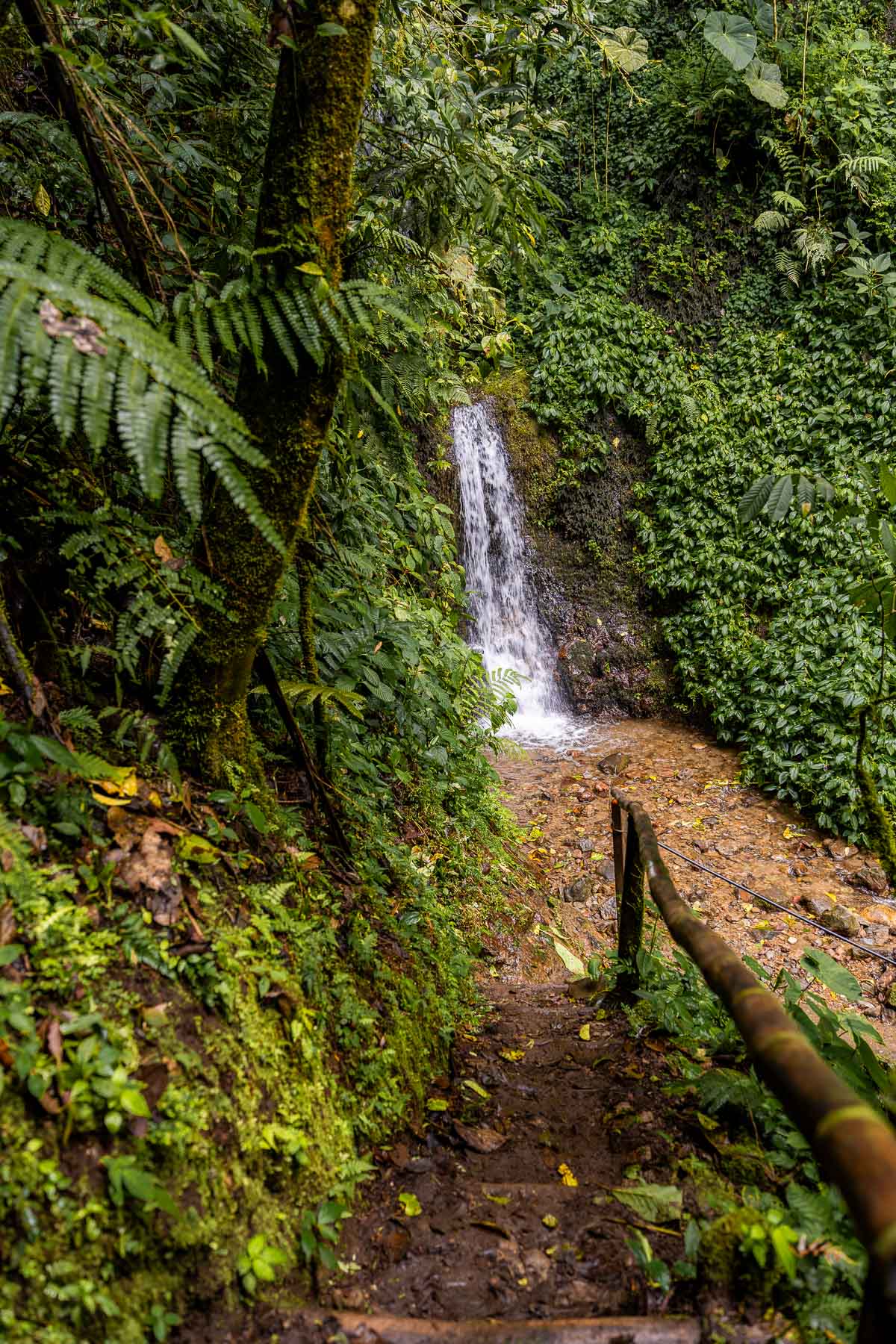
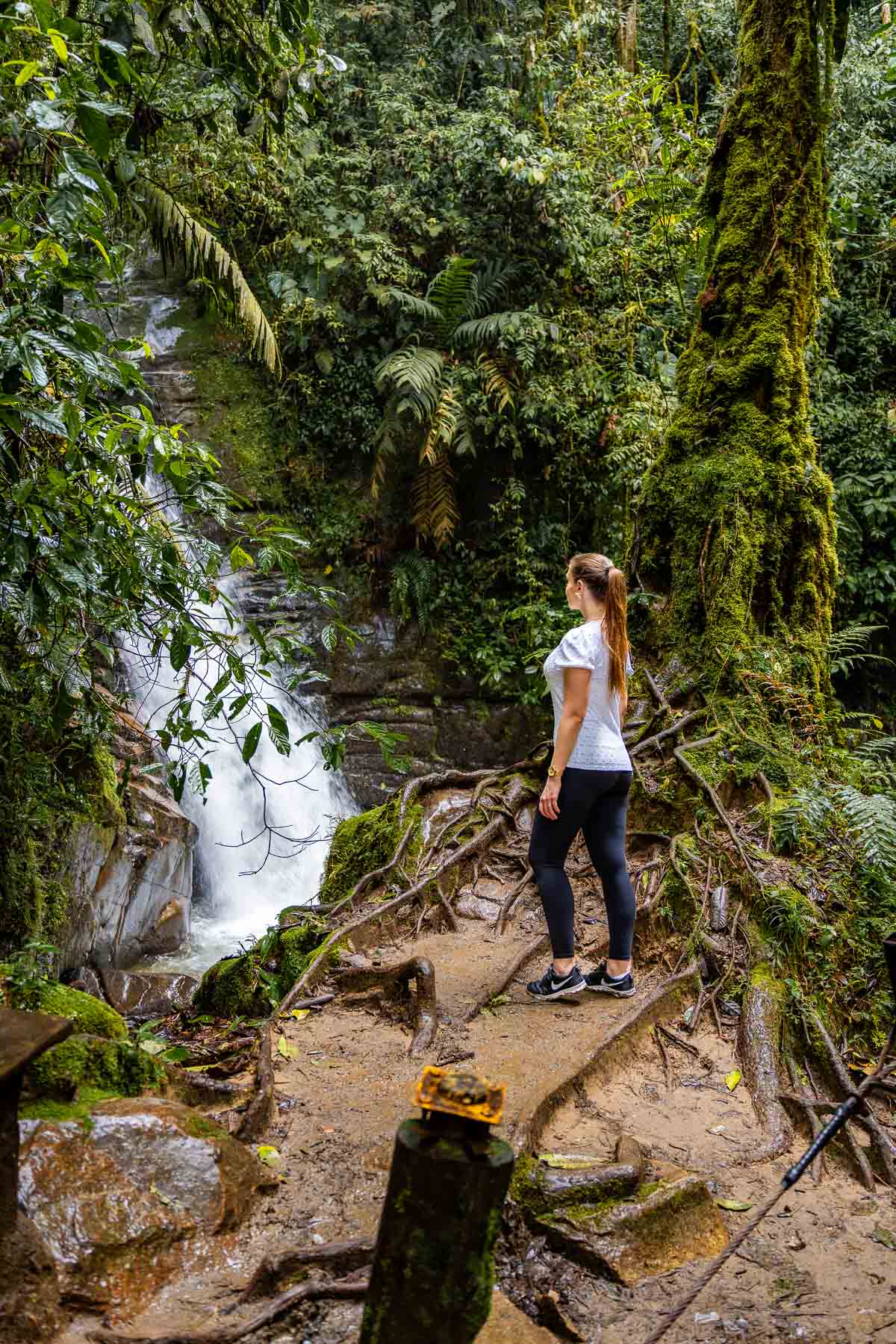
Where to eat in Salento
- Brunch de Salento: In addition to their delicious pancakes, omelets, and burritos, Brunch de Salento also provides packed lunches for anyone setting off on the Cocora Valley hike to keep you fueled up.
- Beta Town Restaurante: Positioned just outside of the town center, Beta Town specializes in steak, burgers, and trout, though we were particularly fond of their breakfast platters.
- Café Jesús Martín: Dreamy coffee, indulgent desserts, and a cute setting, Café Jesús Martín needs to be on everyone’s must-try list.
- Coco Bowl: You don’t have to be vegan to fall in love with this plant-based restaurant, which dishes out the best buddha, poke, and smoothie bowls in town.
- Restaurante Cocina y Horno Salento: Although the eye-catching exterior will draw you in, it’s the bandeja paisa, a tasty mixed platter, that’ll keep you coming back here time and time again.
- El Cacharrito: Looking for something a little less traditional? El Cacharrito is where you’ll find Salento’s finest and most reasonably priced burgers, plus some gorgeous veggie options.
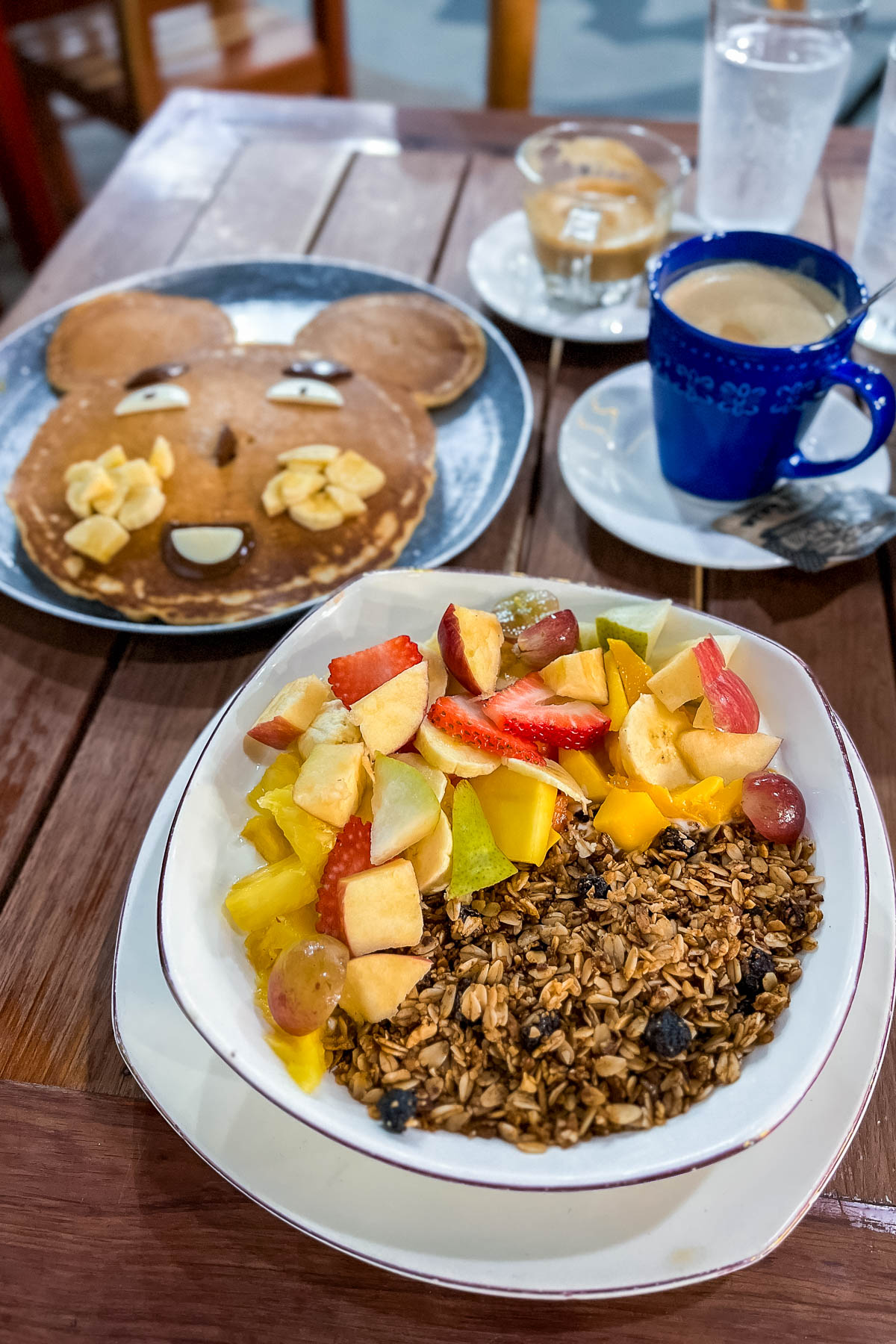
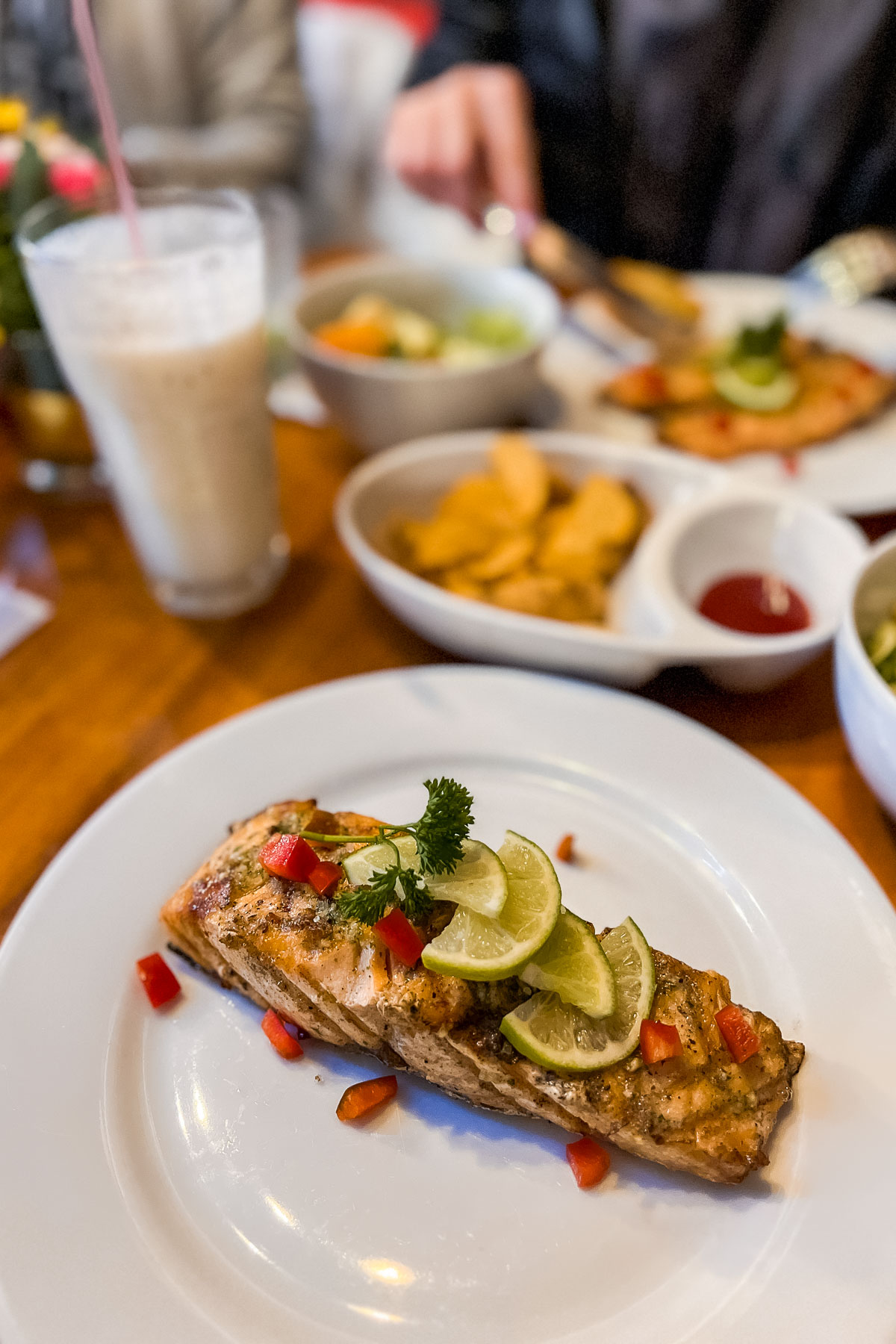
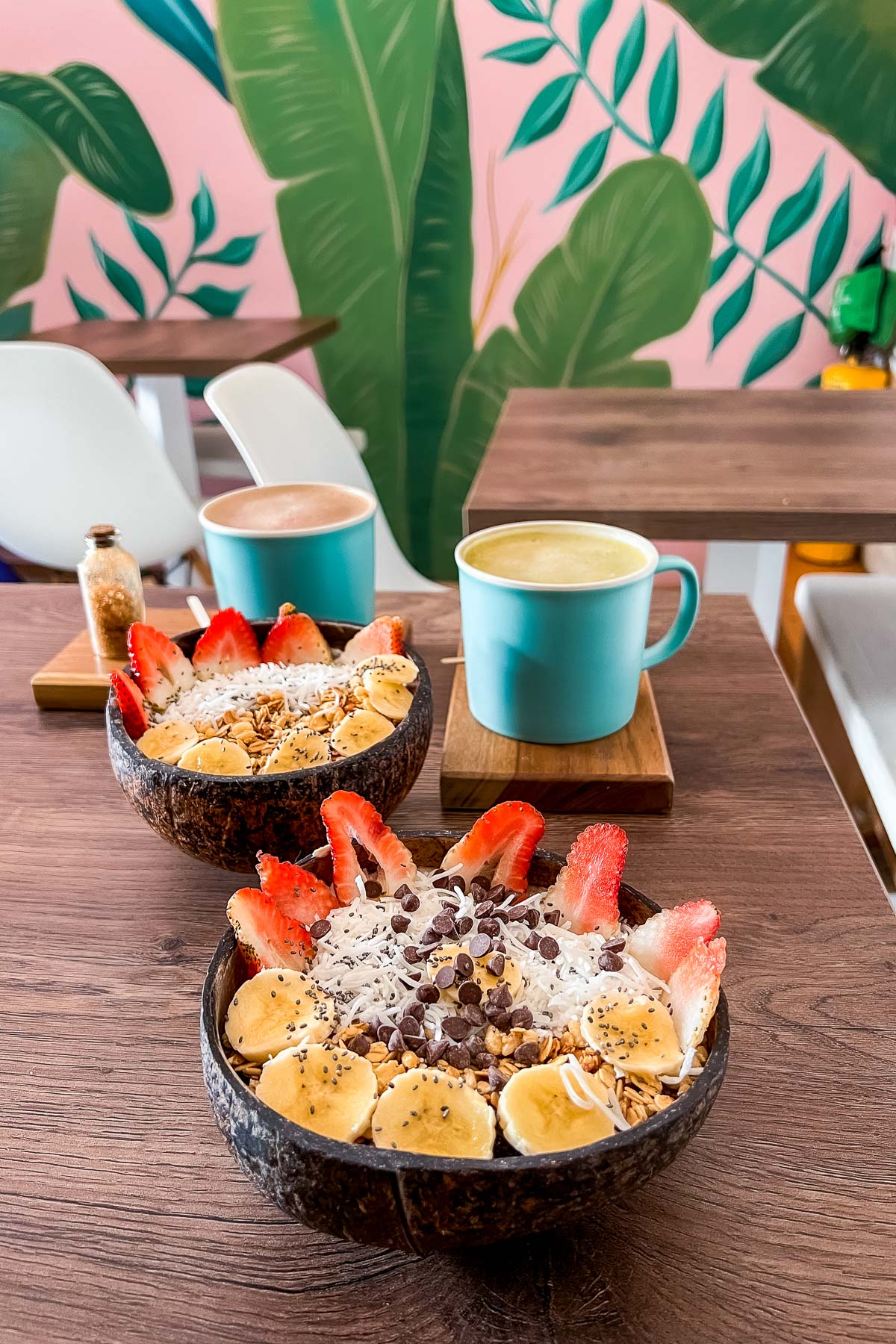
Where to stay in Salento
Because of how compact Salento is, you can never go too far wrong with where you decide to stay. For such a small town, there is a surprisingly high number of hostels and accommodations to choose from.
We chose to stay in the town center at Beta Hotel and found the location very convenient. It was only a short walk from the main attractions, and the staff was super friendly and helpful.
If you’re after a really peaceful stay, you can also consider staying outside of town at one of the many eco-lodges or farms that offer accommodation.
Here are my top picks for places to stay in Salento:
- Luxury glamping near Cocora Valley | Glamping Lumbre
- Modern boutique hotel in Salento | Panorama Salento by DOT Boutique
- Mid-range hotel in Salento | Beta Hotel
- Top-rated hostel in Salento | The Corner House Hostel
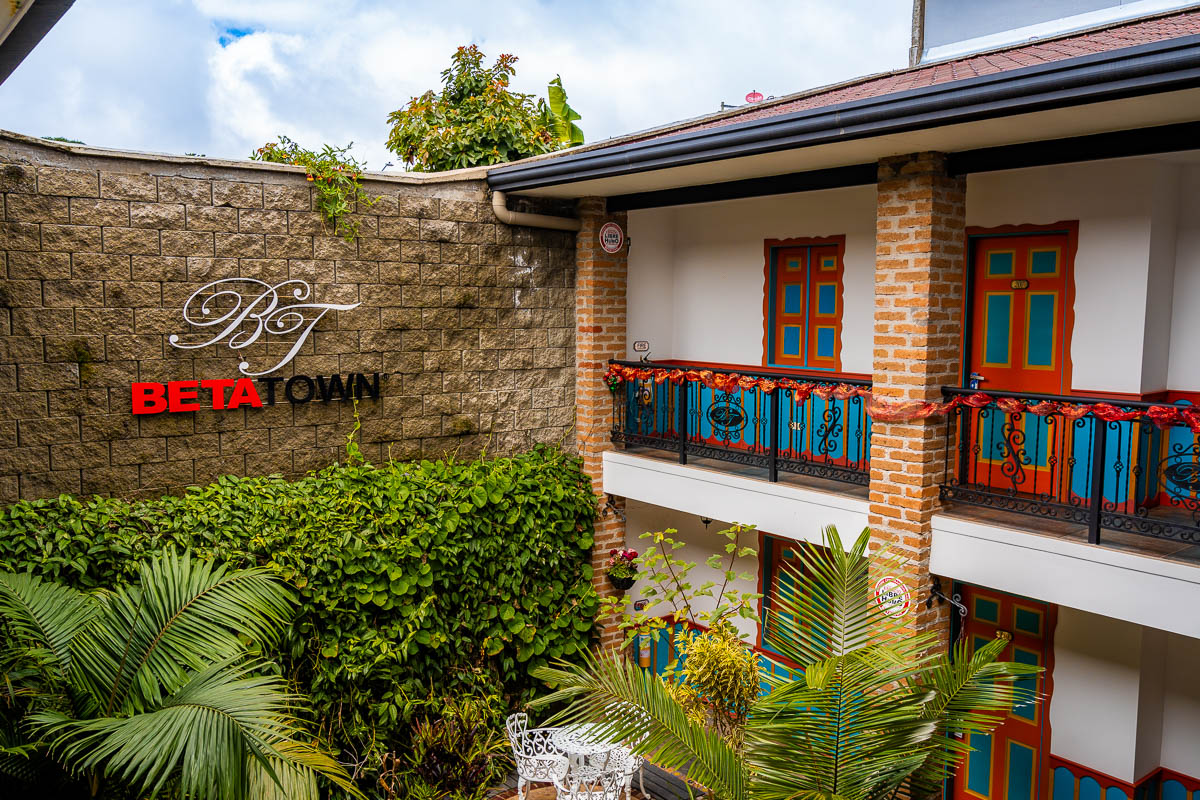
Day 7-10: Medellin
A city that’s shed its status as one of the most dangerous places in the world and developed into a popular destination in South America, Medellin is packed with exciting things to see and do.
Spending 4 days out of your 2 weeks in Colombia gives you sufficient time to get to know the city while also squeezing in some day trips.
Medellin was the city most affected by the violent drug cartel led by Pablo Escobar, and discovering how the locals bounced back makes this spot even more enthralling.
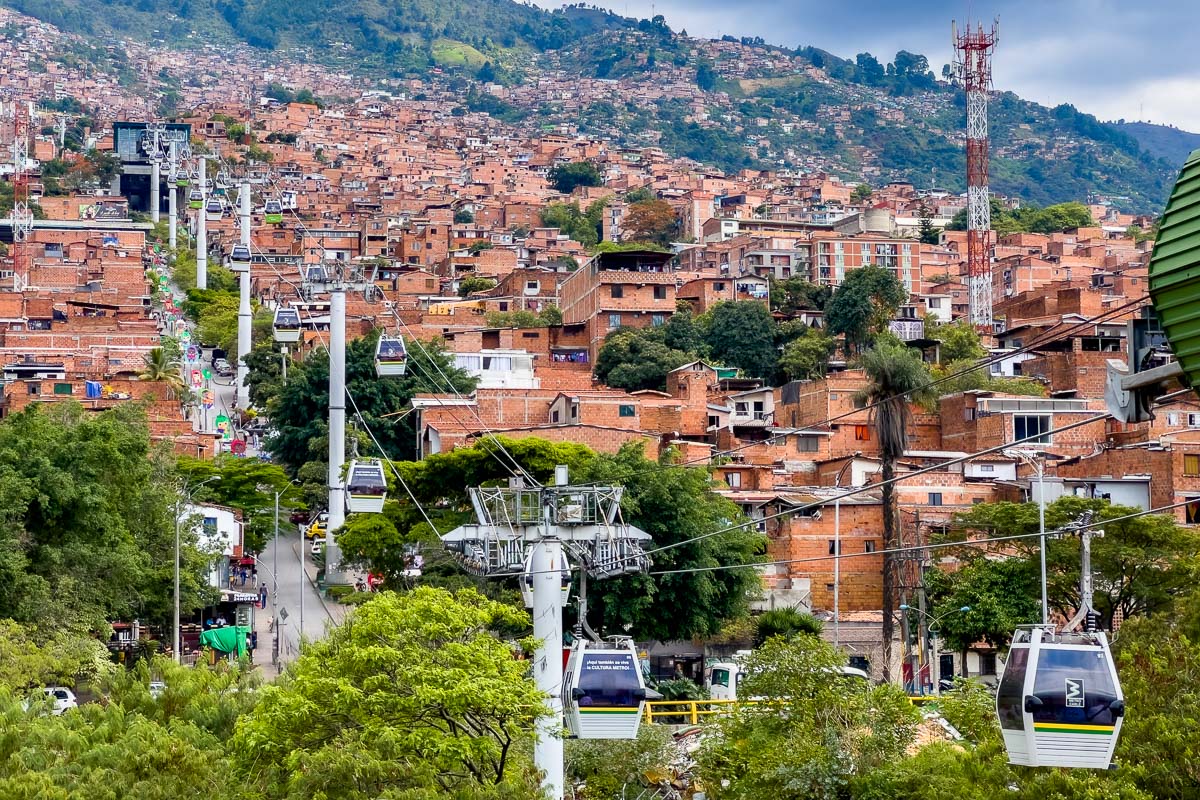
How to get to Medellin
The quickest and easiest way to get from Salento to Medellin is to take a flight from either Armenia or Pereira. That means you’ll need to take a bus or taxi to the airport first which is roughly an hour from Salento, then hop on a 45-minute flight.
The flights are not as frequent as from/to Bogota, but typically there are still 2-4 options per day. You can book your tickets in advance via Avianca or LATAM.
As you might expect by now, day 7 of your Colombia itinerary will be mostly spent traveling from Salento to Medellin, which will leave you about 3 days in Medellin to explore the city and the surroundings.
You also have the option to catch an overnight bus from Salento to Medellin, which can save you some time and money. However, be prepared for a long journey as this bus ride typically takes around 6-9 hours.
Best things to do in Medellin
Visit Comuna 13
When you’re crafting your 2 weeks in Colombia itinerary, you have to include a trip to the iconic Comuna 13, Medellin’s best-known district.
Down-trodden with violence, crime, and drugs throughout the 1980s and 1990s, Comuna 13 was a no-go zone until recent years. Today, it’s been transformed into a safe and thriving neighborhood with a rich culture and buzzing art scene.
Join a walking tour to unravel the dark history of Comuna 13, while marveling at the remarkable street art and sweeping views of Medellin.
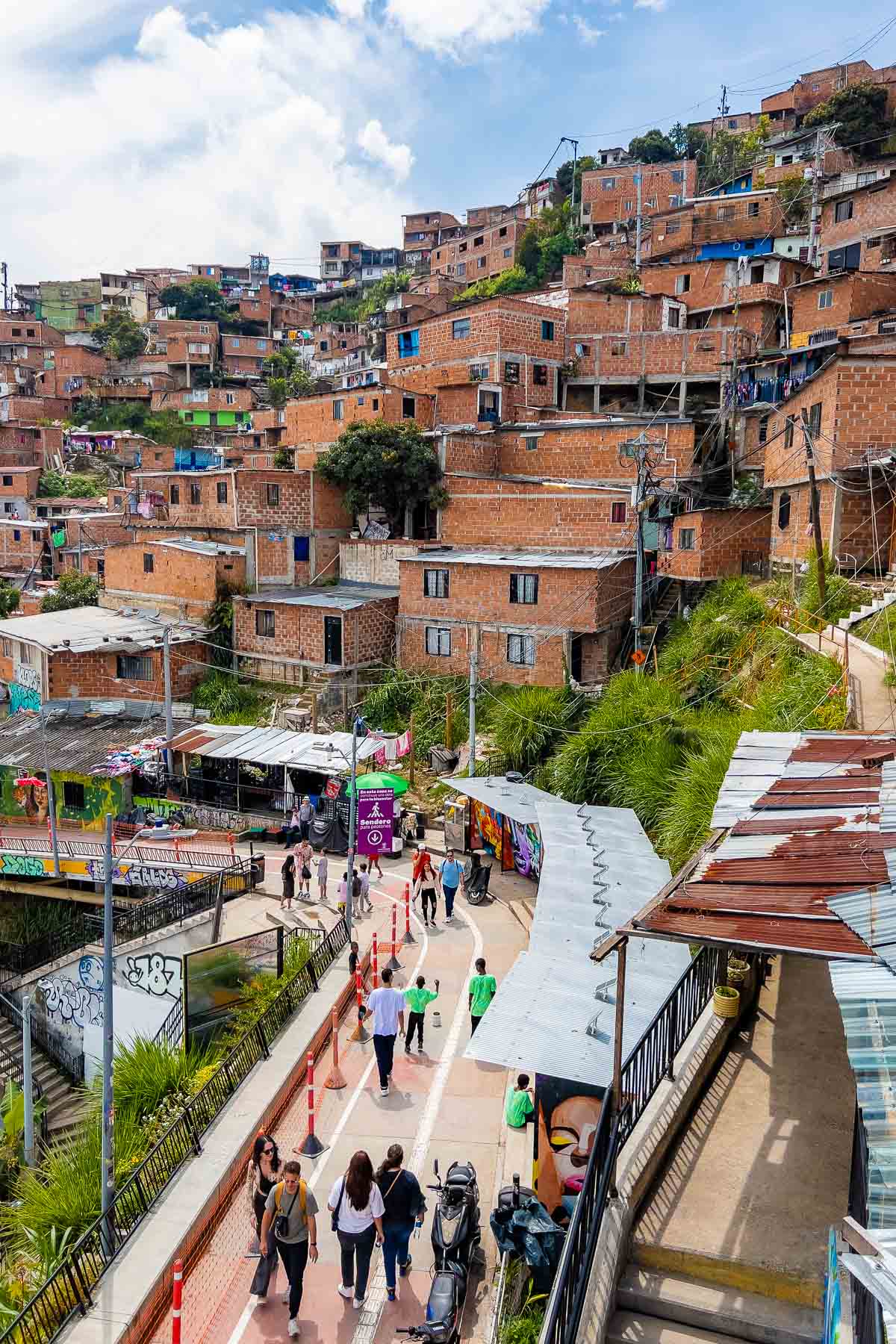
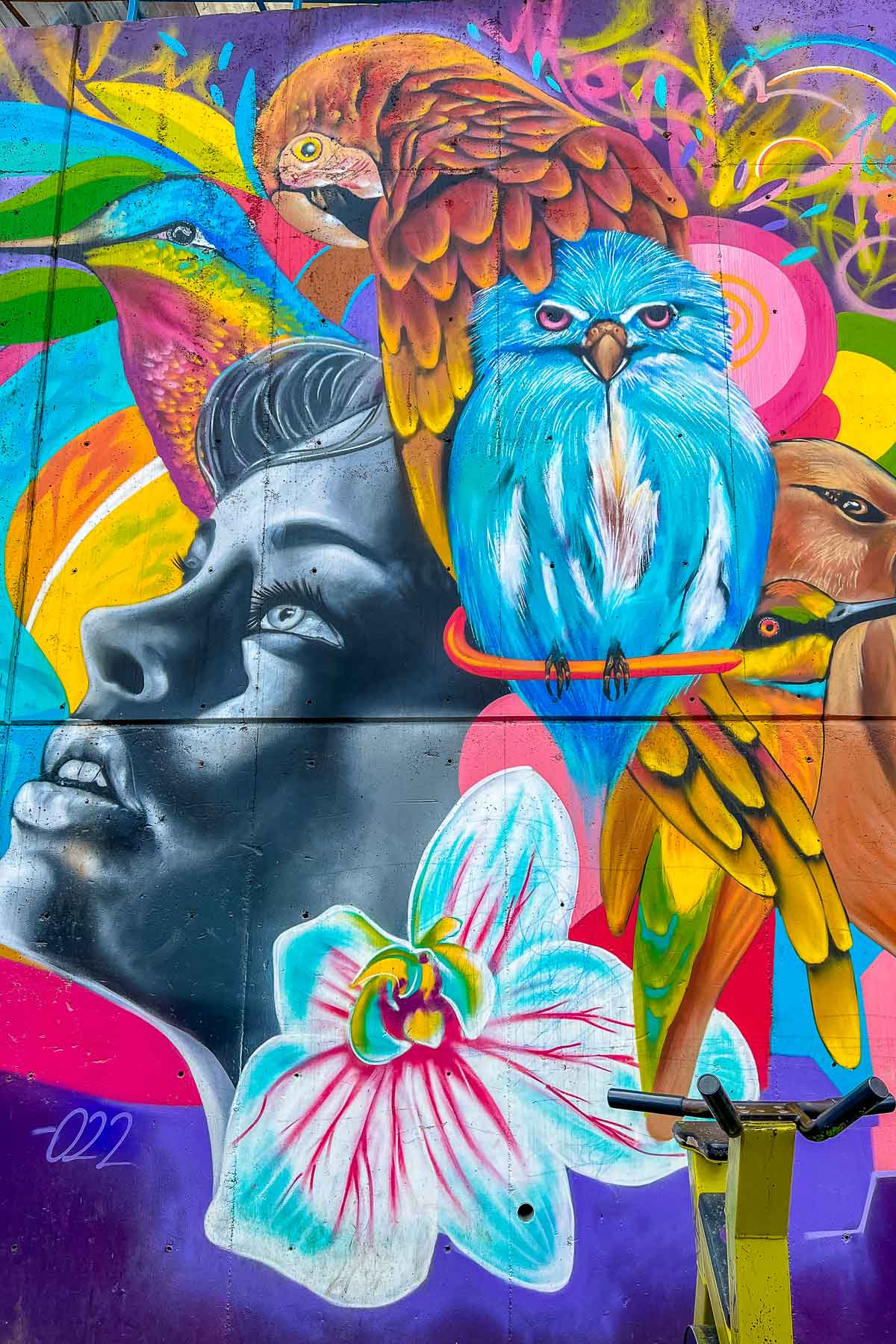
Walk around the Botanical Garden of Medellín
When you fancy something a little more chilled-out, head over to the Botanical Gardens and admire the thousands of flowers and trees that cover this 14-hectare park.
Spend an hour or two strolling around the gardens, keeping your eyes peeled for the unique birds and resident iguanas that call this peaceful spot home.
The gardens themselves are free to enter, but you’ll need to pay a small fee of 6,000 COP ($1.52) to access the butterfly aviary.
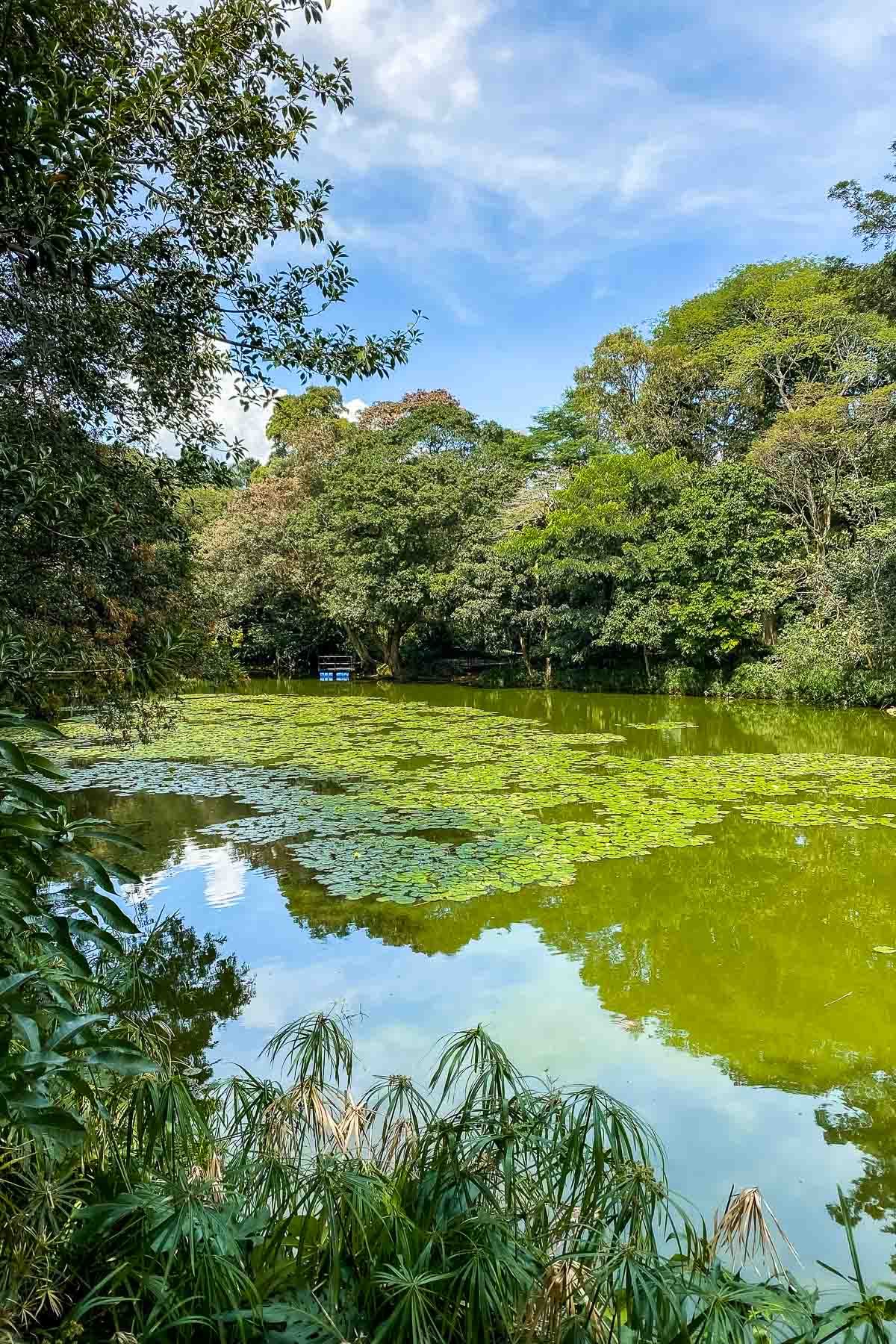
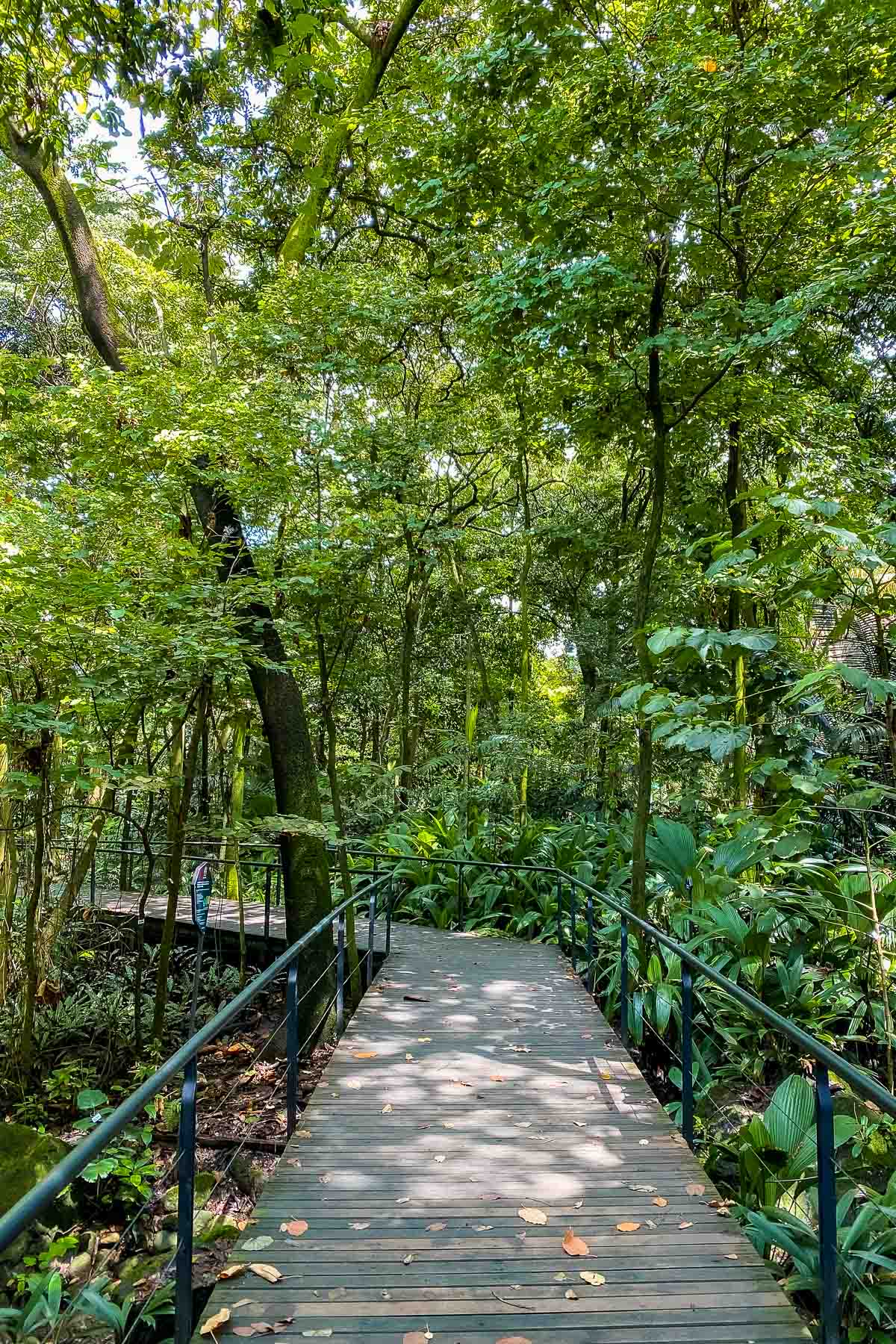
Ride the cable car to Parque Arvi
Another rite of passage for anyone visiting Medellin is to take the cable car to Parque Arvi.
Situated on a hilltop overlooking the city, Parque Arvi is filled with brilliant hiking paths, but most people know it for the impressive cable car ride to the entrance.
The journey to the summit takes around 20 minutes, and each ticket costs 12,500 COP ($3.2 US). To reach the cable car station, you’ll need to take the metro to Santo Domingo and hop onto the L line. It’s a super popular activity, so you won’t have much trouble finding your way.
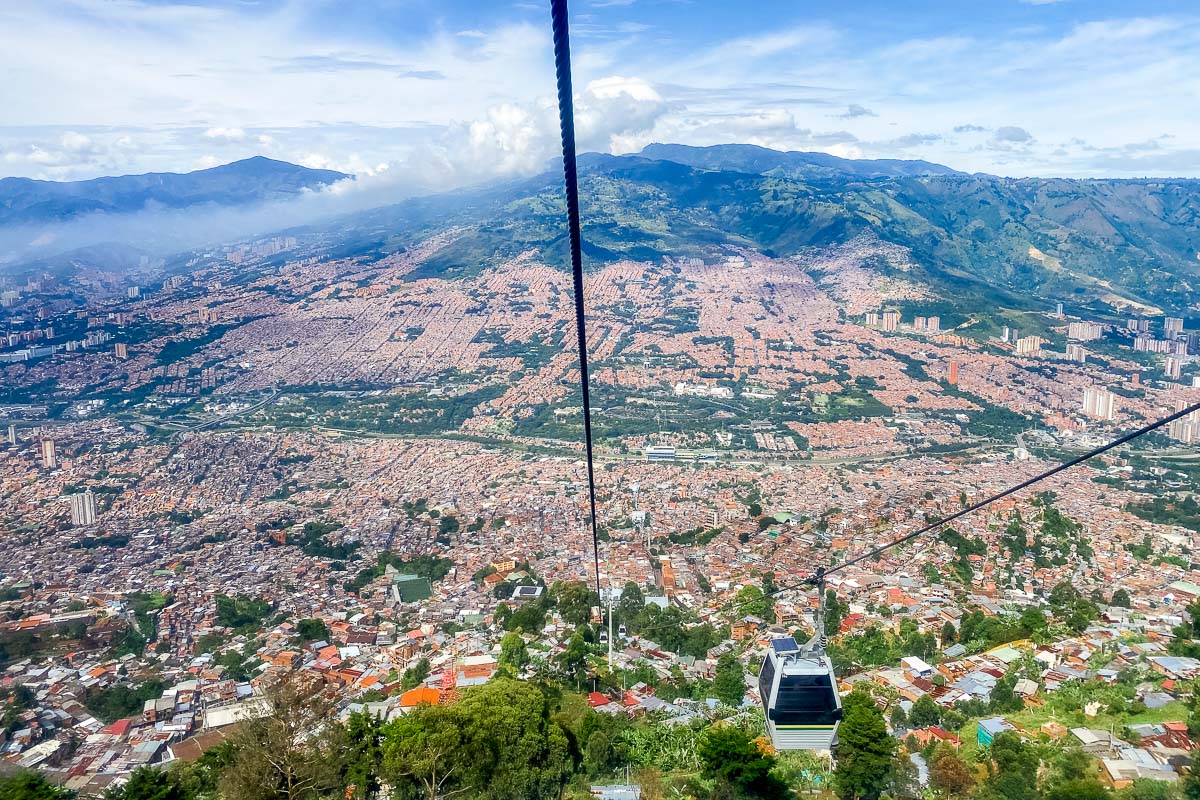
Explore the historic center
Medellin has a much more modern feel than the likes of Cartagena and Bogota, but it still has plenty of history and heritage to explore.
The best place to get a sense of Medellin’s past is close to the Plaza Botero, as this square is within close proximity of Los Pies Descalzos, Rafael Uribe Uribe Palace of Culture, and Museum de Antioquia.
There are often free walking tours that run in the area, which will give you a much clearer sense of how the city has changed and the significance of each of the key landmarks.
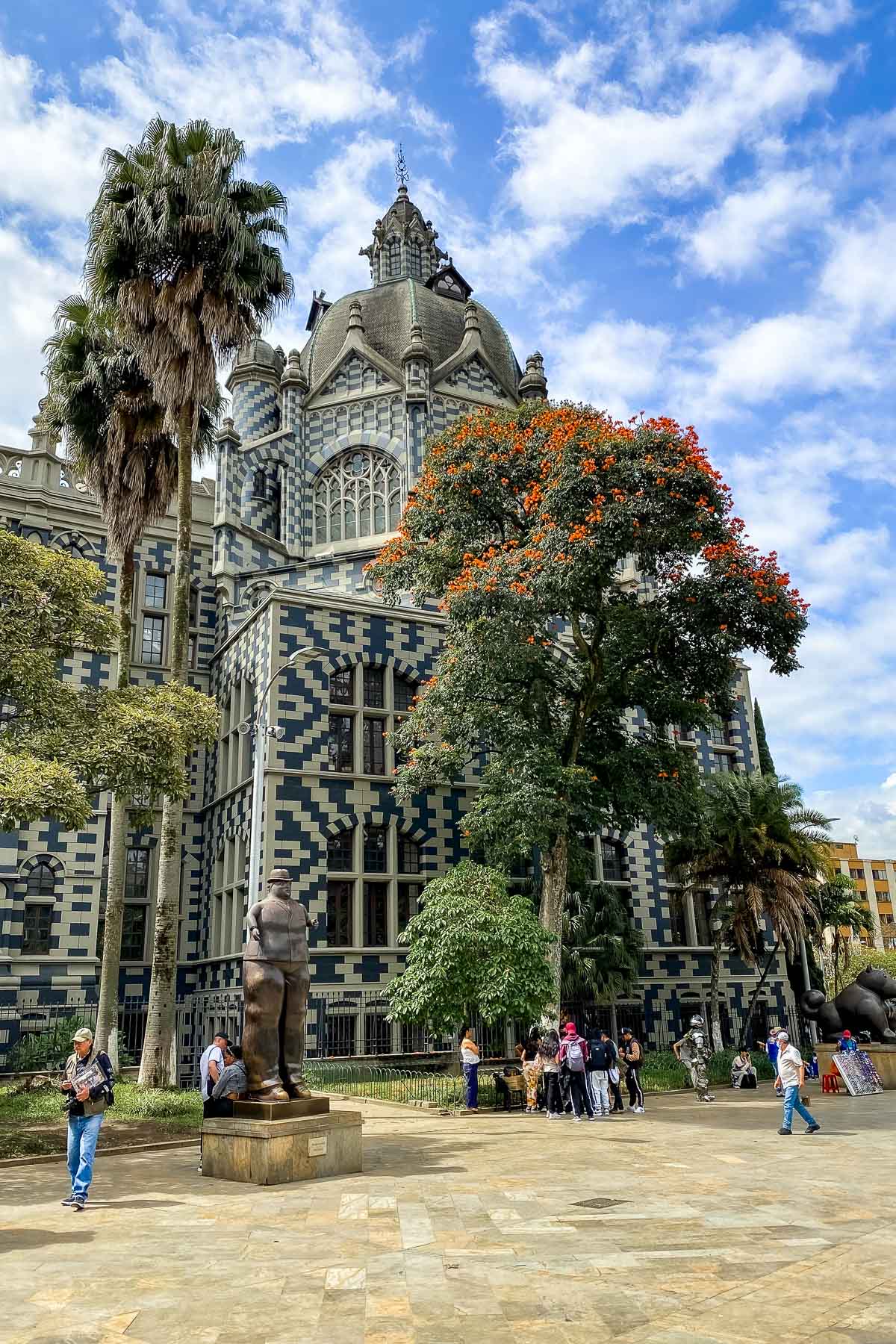
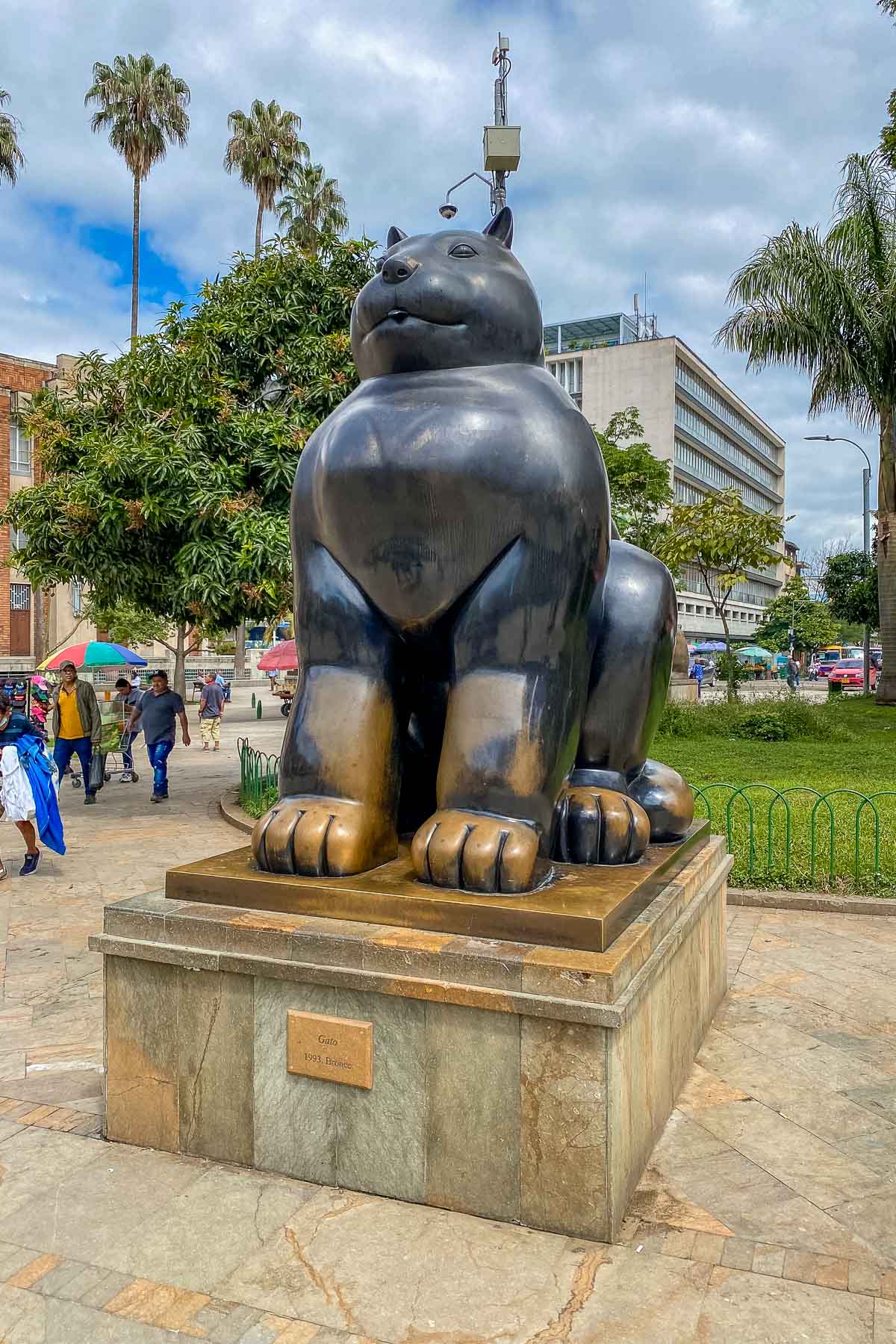
Join the Real Pablo Escobar Tour
After you’ve spent some time in Comuna 13, I suggest embarking on the Real Pablo Escobar Tour. This will really bring the realities of Medellin’s prolific cartel to light, so it can be a pretty solemn but incredibly interesting experience.
As your guide breaks down the rise and fall of Pablo Escobar, you’ll be taken past a number of notable spots, like his former home and self-designed prison.
Take a day trip to Guatape and climb El Peñol
There’s no way I could have created this 2 week Colombia itinerary and not included an excursion to Guatape.
One of the top things to do in Guatape is to visit El Peñol, a giant rock formation that you can climb to the top of. It’s 659 steps in total, and once at the summit, you’ll be rewarded with a jaw-dropping view over Guatape’s manmade reservoir.
Most tours also include a boat tour around the reservoir, which cruises past a former vacation home belonging to Pablo Escobar, as well as some downtime for wandering the colorful cobblestone streets.
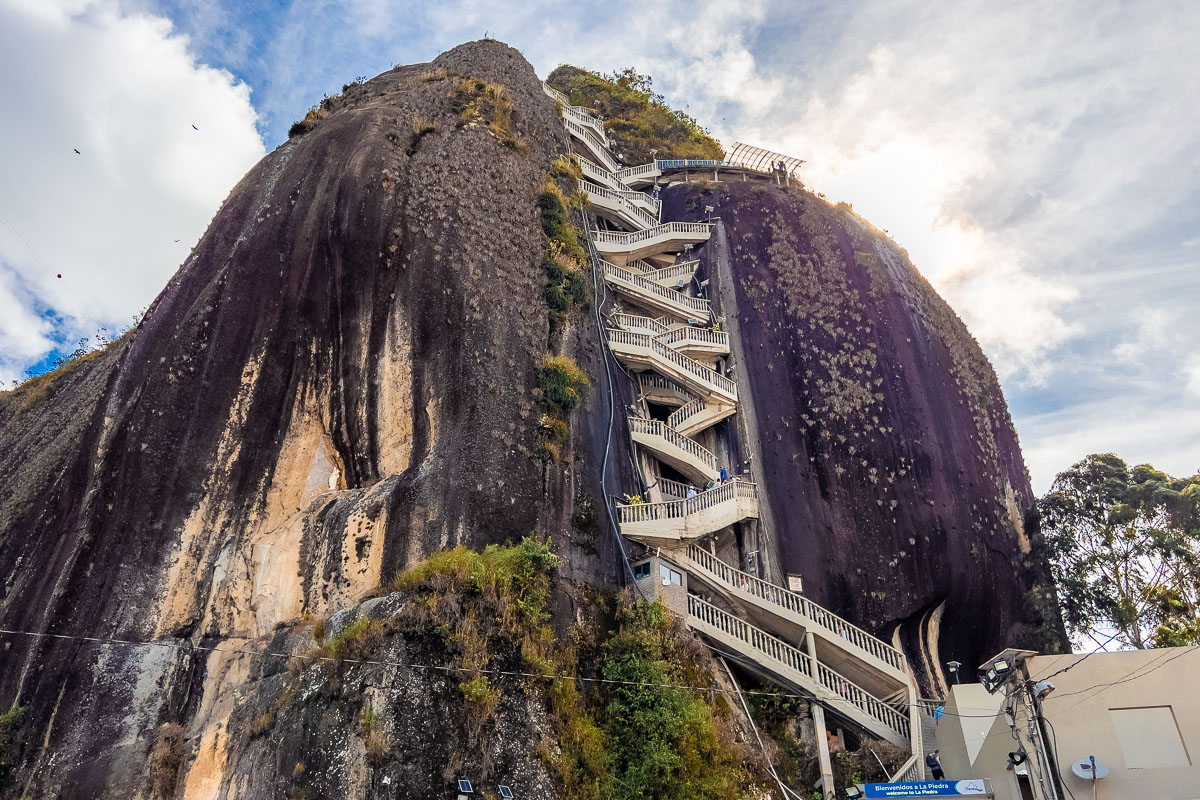
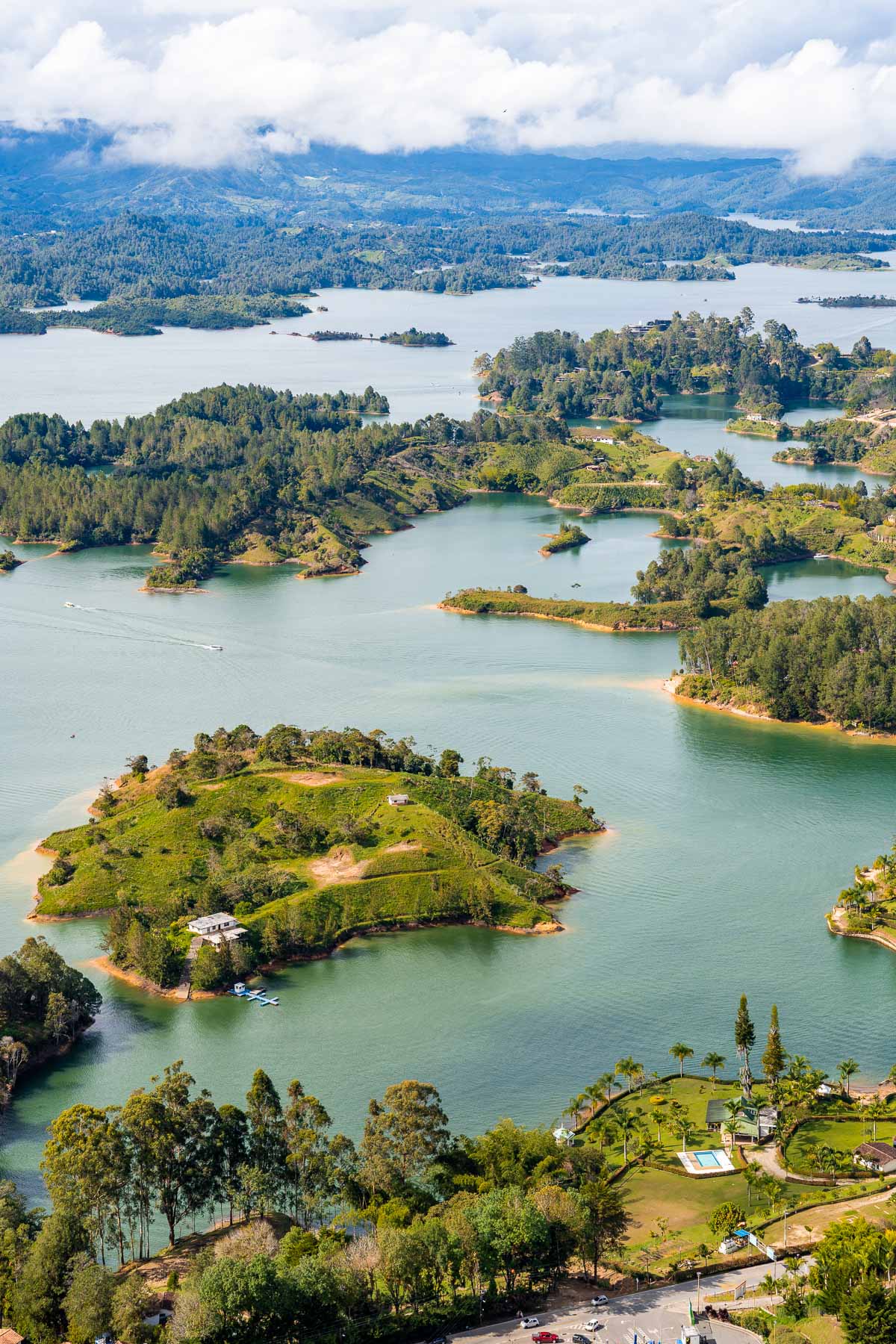
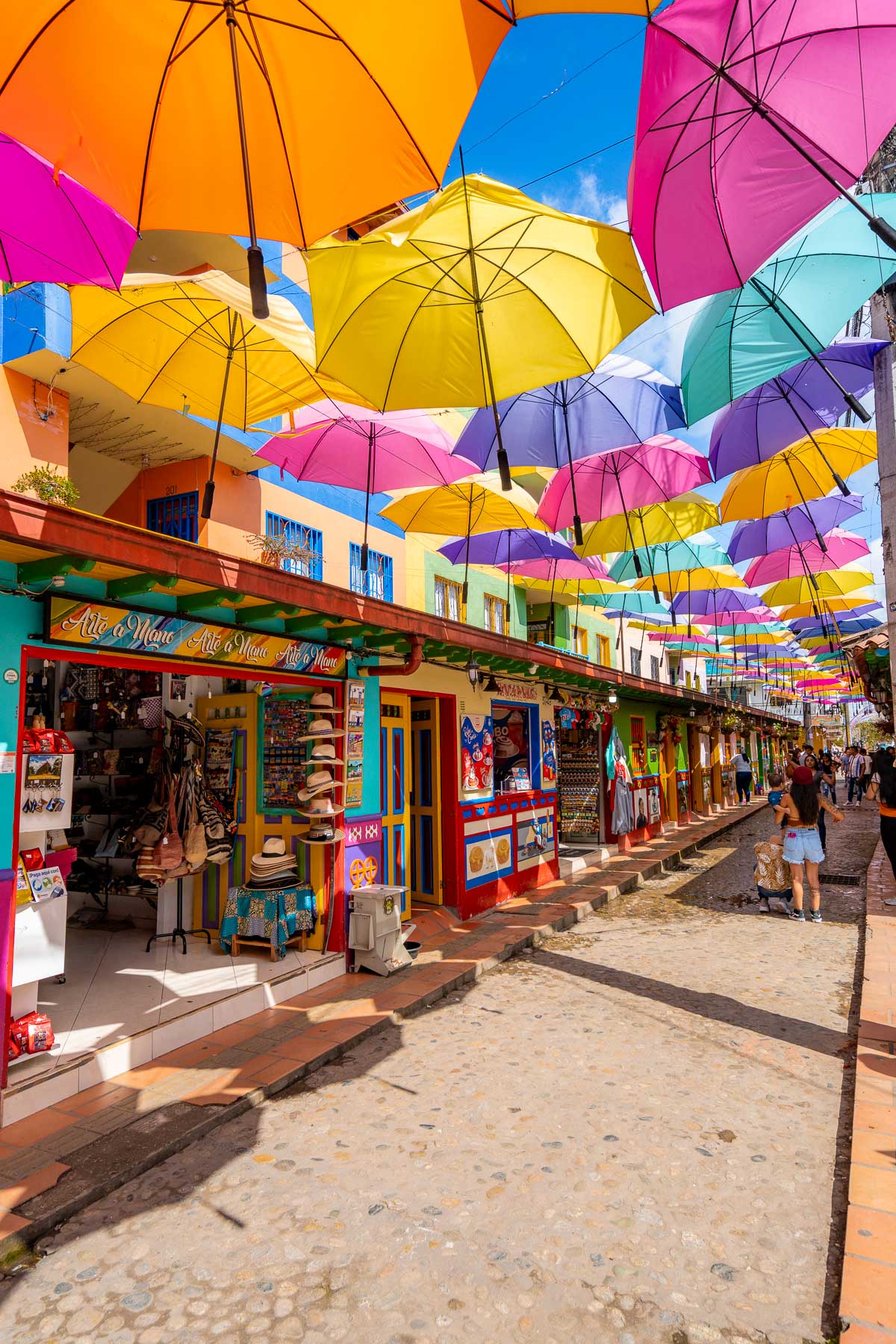
Alternatively, you can also decide to spend the night in Guatape to fully immerse yourself in the charming town’s culture and laid-back atmosphere.
If you want to try glamping in Colombia, Guatape is the perfect place to do so! There are a few glamping spots scattered around the town and reservoir, offering stunning views and unique experiences.
We spent a night at Bosko, a glamping spot that offers luxurious tents with private decks overlooking the reservoir. It was definitely one of the highlights of our entire trip!
You can read more about our whole experience in this Bosko hotel review.
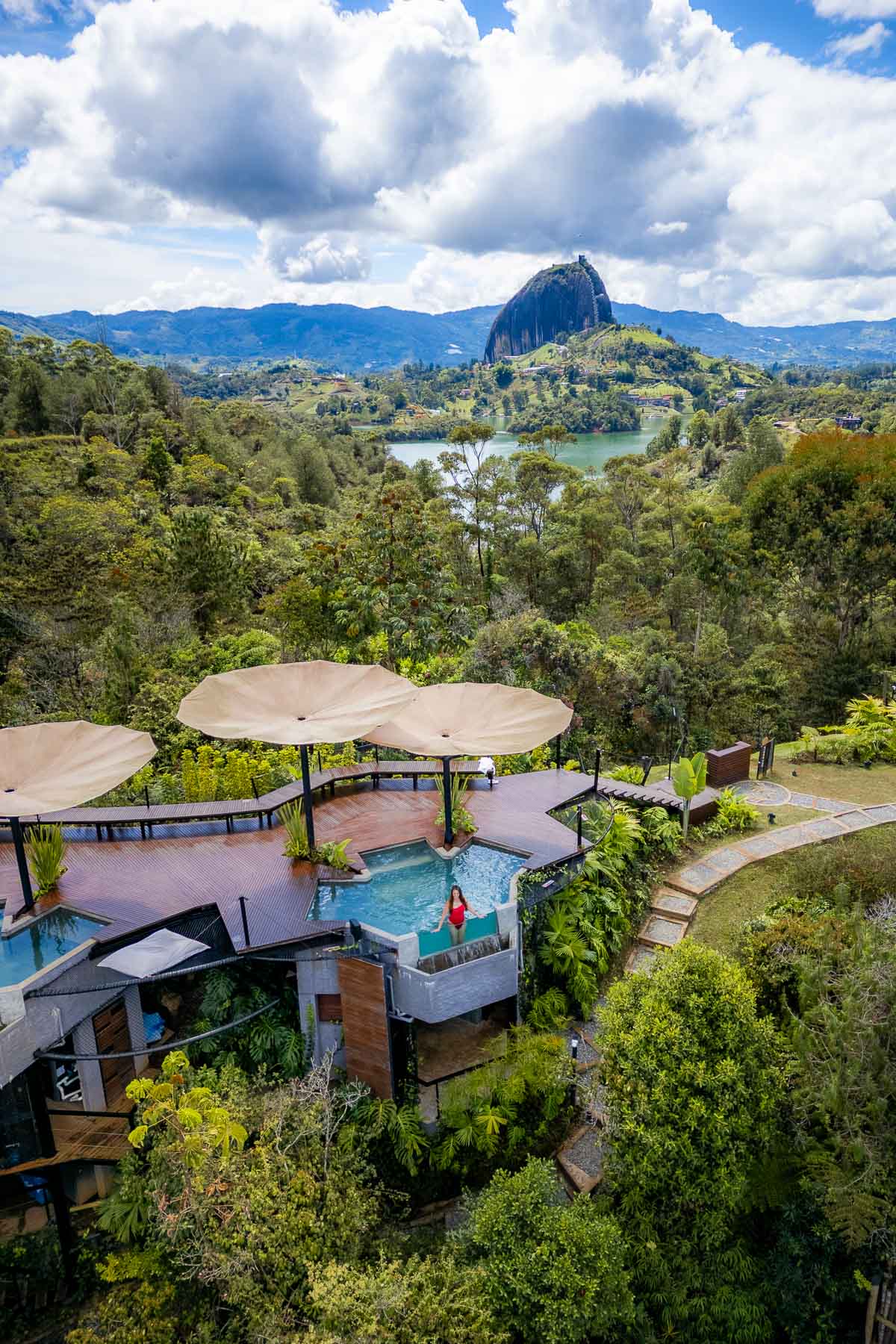
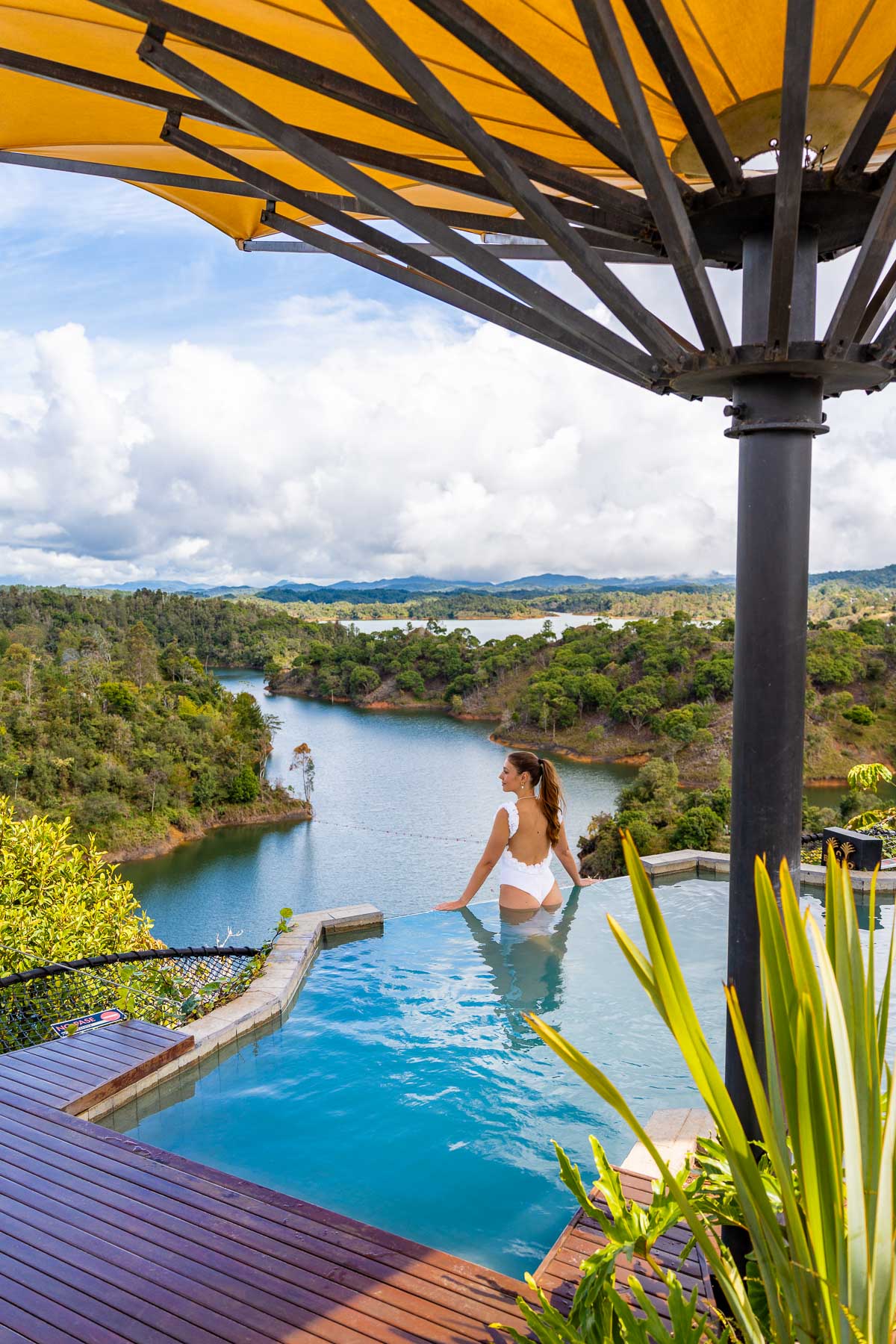
Stroll around Pueblito Paisa
Of all the fantastic things to do in Medellin, visiting Pueblito Paisa was one of my favorite experiences.
Pueblito Paisa is a replica of a traditional local village with all the classic features of old-school Colombia, such as a town square, quaint church, and beautifully maintained buildings.
Many people also make the sweaty 30-minute hike (or quick taxi ride!) to the top in time for sunset, as Pueblito Paisa is among Medellin’s most famous vantage points.
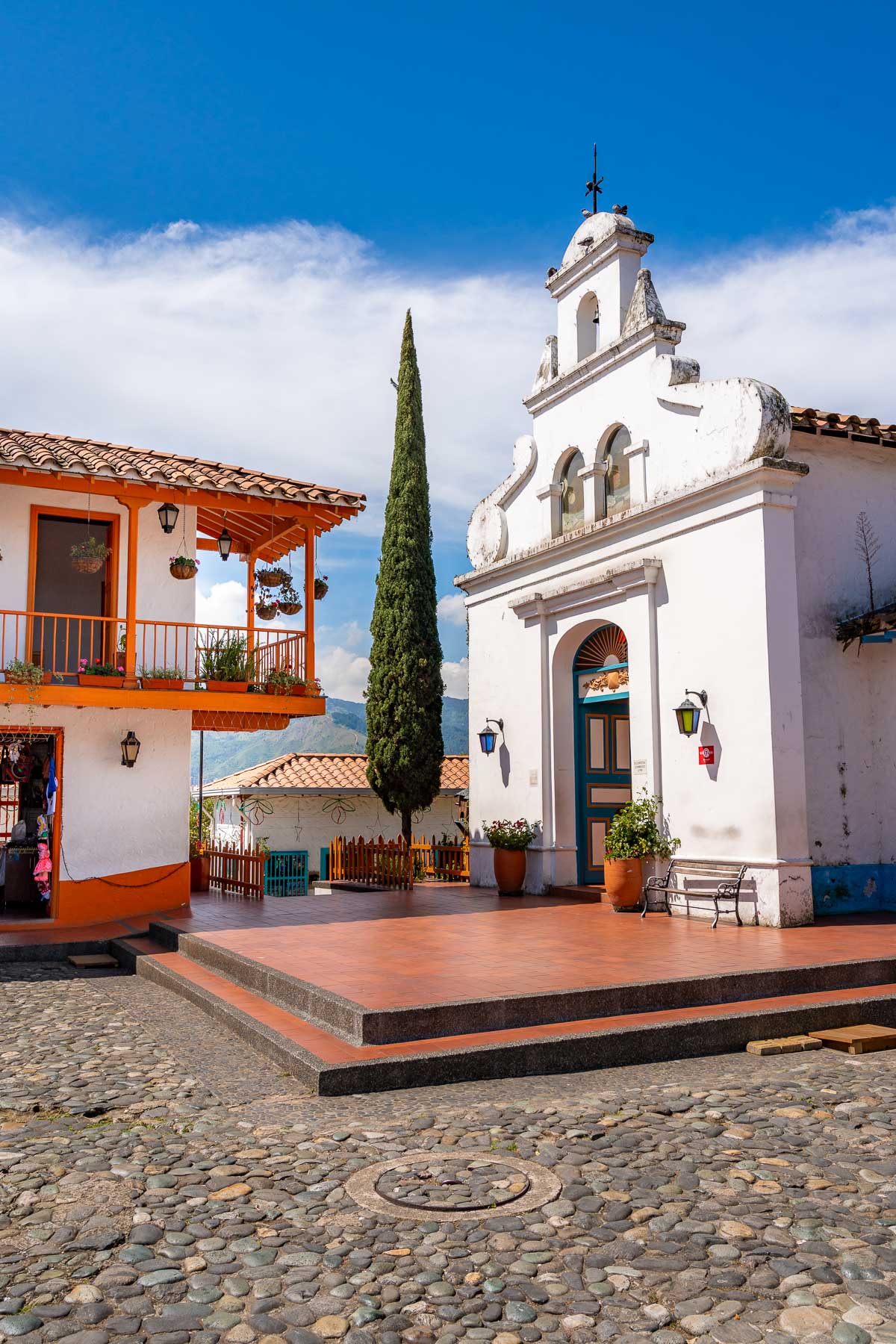
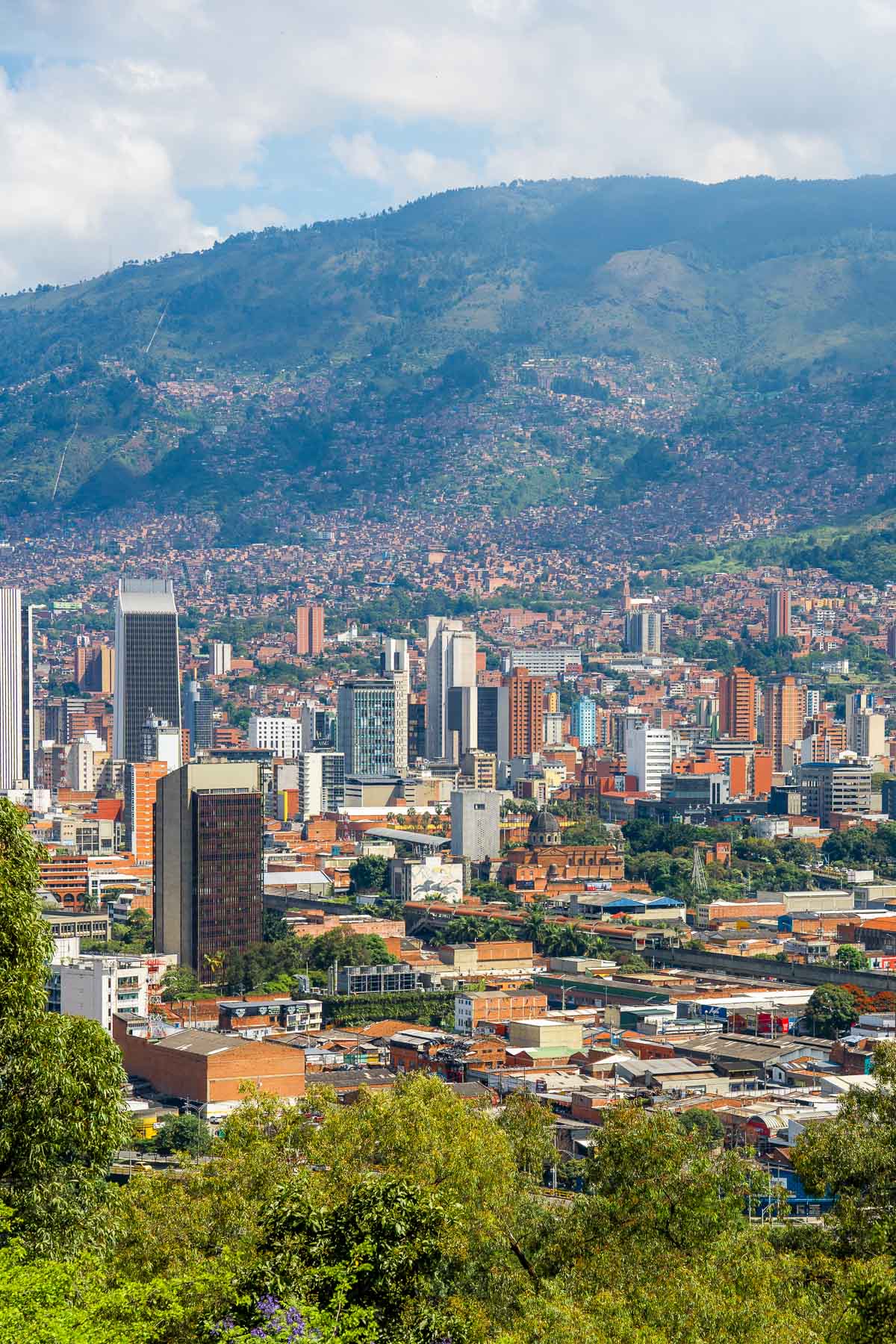
Where to eat in Medellin
- Restaurante Mondongo’s El Poblado: Quite possibly Medellin’s most visited eatery, Mondongo’s has become an institution. Generous portions and local dishes are what it’s all about here, and you have to try their tripe, a specialty of the chef.
- Pergamino Cafe: If Mondongo’s is a must-try restaurant, Pergamino is very much the same but for coffee. Their baristas are highly skilled, the brews are the best of the best, and their brunch offerings hit the spot every time.
- Rituales café: Beloved by anyone who frequents the Laureles area, Rituales is an excellent place to be for coffee enthusiasts. Standing proud as a third-wave coffee shop, it’s little wonder their specialty coffees are so divine.
- Bastardo Restaurant: Loved by locals and tourists alike, Bastardo has all the components for the ideal night out in Medellin. Get ready for refreshing cocktails, lively music, and a menu filled with everything from empanadas to spicy nachos.
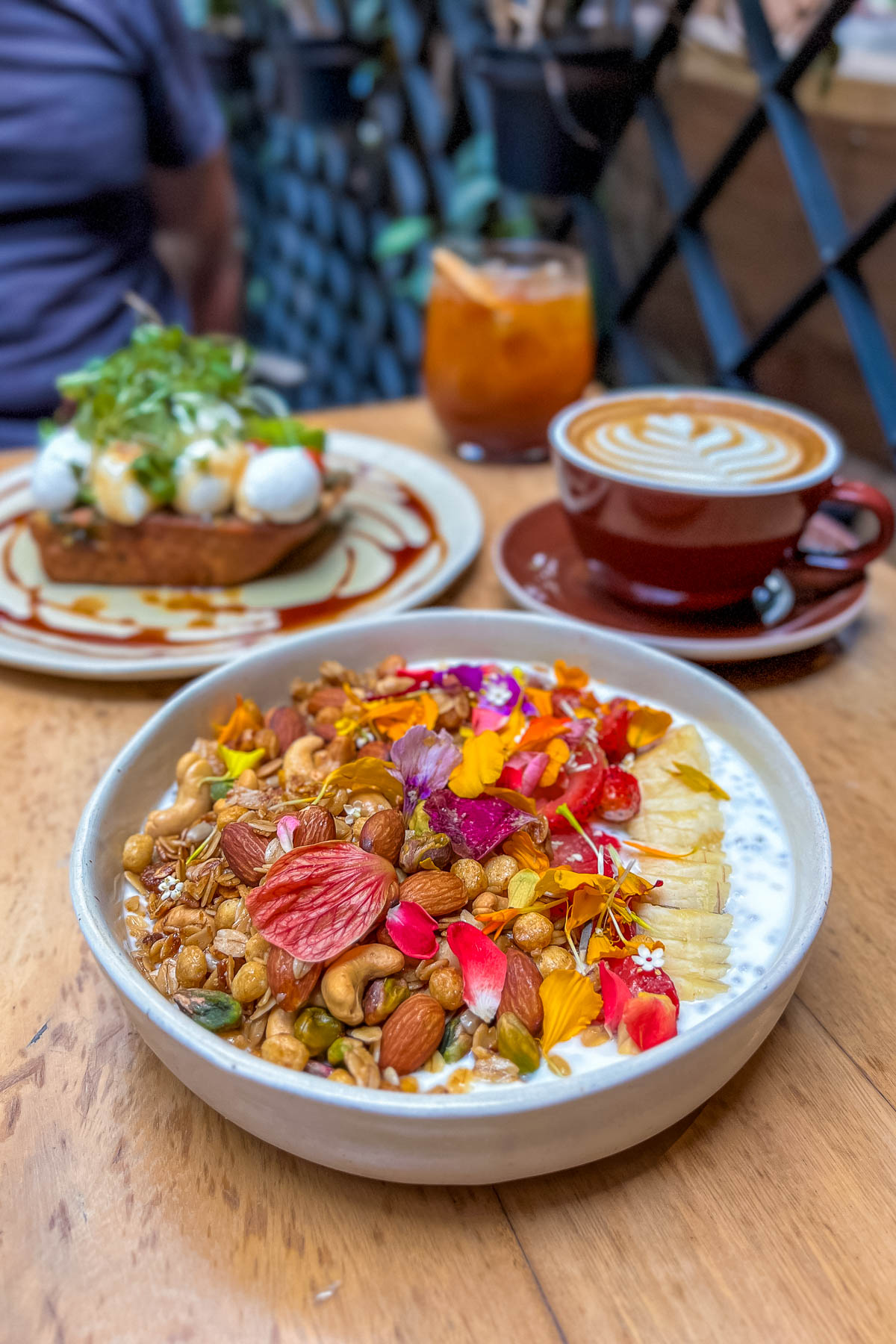
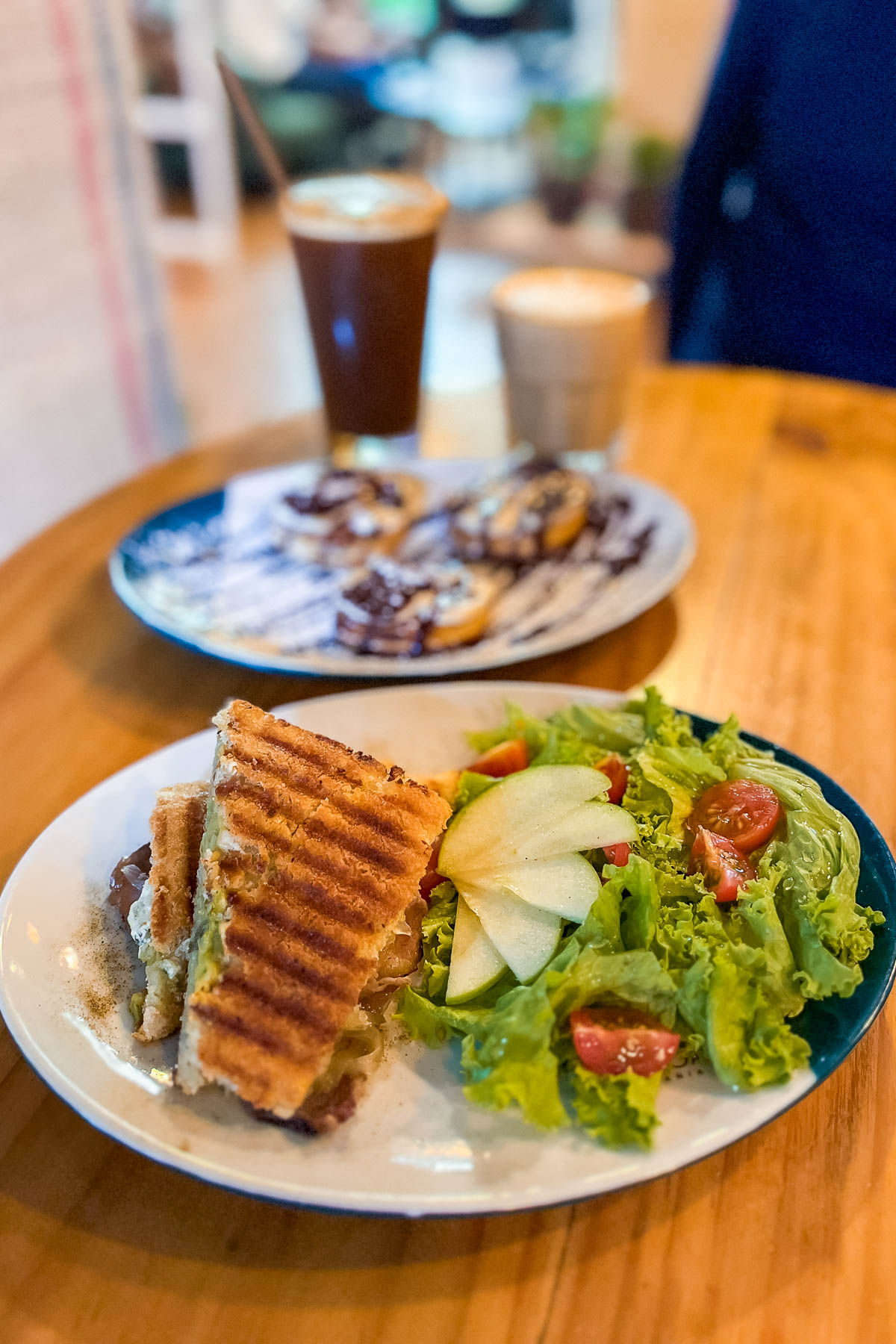
Where to stay in Medellin
Most visitors stick to the upscale neighborhood of El Poblado, as this area is packed with fabulous restaurants, chic bars, and a ton of great hotels. It’s also among the safest spots in the city, which is reason enough to stay here.
El Poblado is also well-connected and has plenty of transport links to other parts of Medellin, so getting around is a piece of cake from here.
However, if you’re eager for a more local experience, Laureles is a fantastic option, as El Poblado caters more to tourists than Medellin natives. Laureles is slightly northwest of El Poblado and is where a mix of locals and expats tend to congregate.
Though the location is not quite as favorable as that of El Poblado, the wealth of hip cafes, trendy bars, and laid-back vibes more than makeup for it. If you need any more convincing, it was recently given the title of the world’s coolest neighborhood!
Here are some of the best hotels in Medellin to consider for your stay:
- Luxury boutique hotel in El Poblado | The Charlee Hotel
- Great mid-range hotel with rooftop pool in El Poblado | Sites Hotel
- Budget-friendly hotel in Laureles | Hotel Bolivariana Plaza
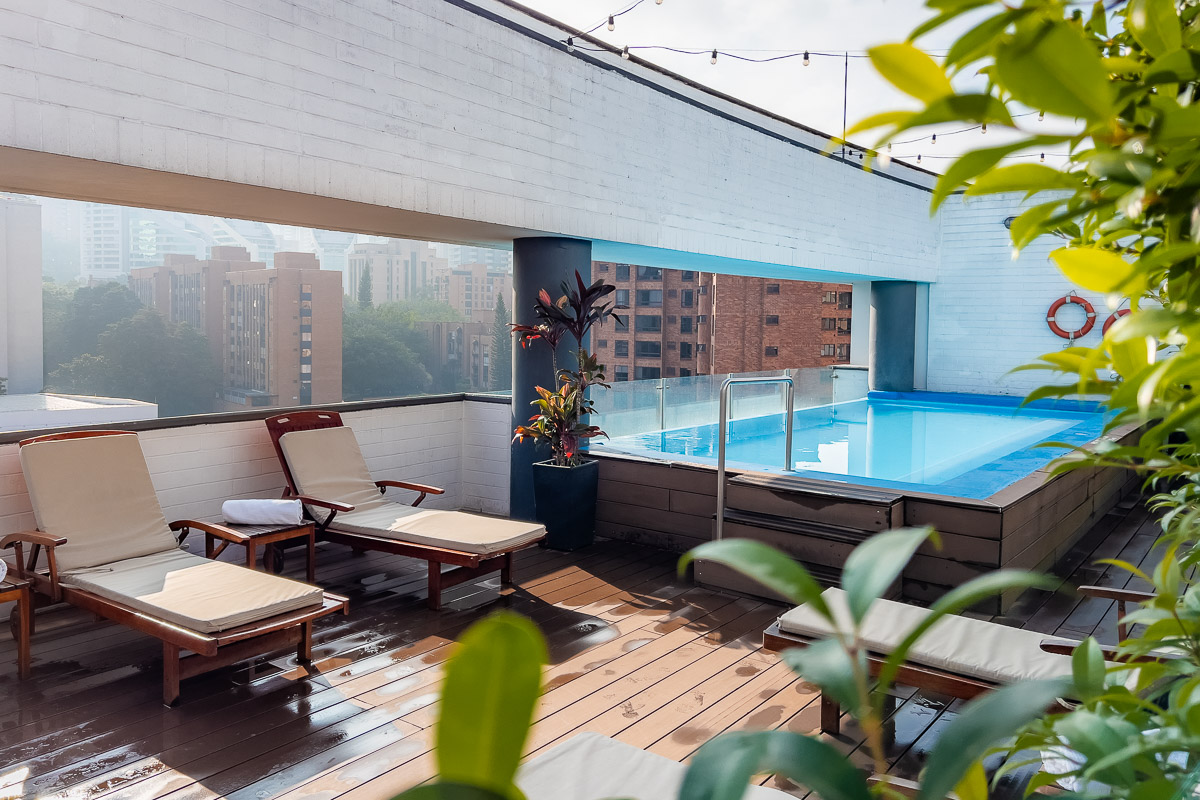
Day 11-14: Cartagena
The final stop on your Colombia itinerary is the wonderful city of Cartagena de Indias. Abundant in history, rich in culture, and a crossroads between old and new, Cartegena has a little something for every kind of traveler.
Something that sets Cartagena apart from the other spots on this 2 week Colombia itinerary is that it’s situated on the Caribbean coast and has some pristine beaches.
It’s finally time to include some well-deserved beach time on your itinerary!
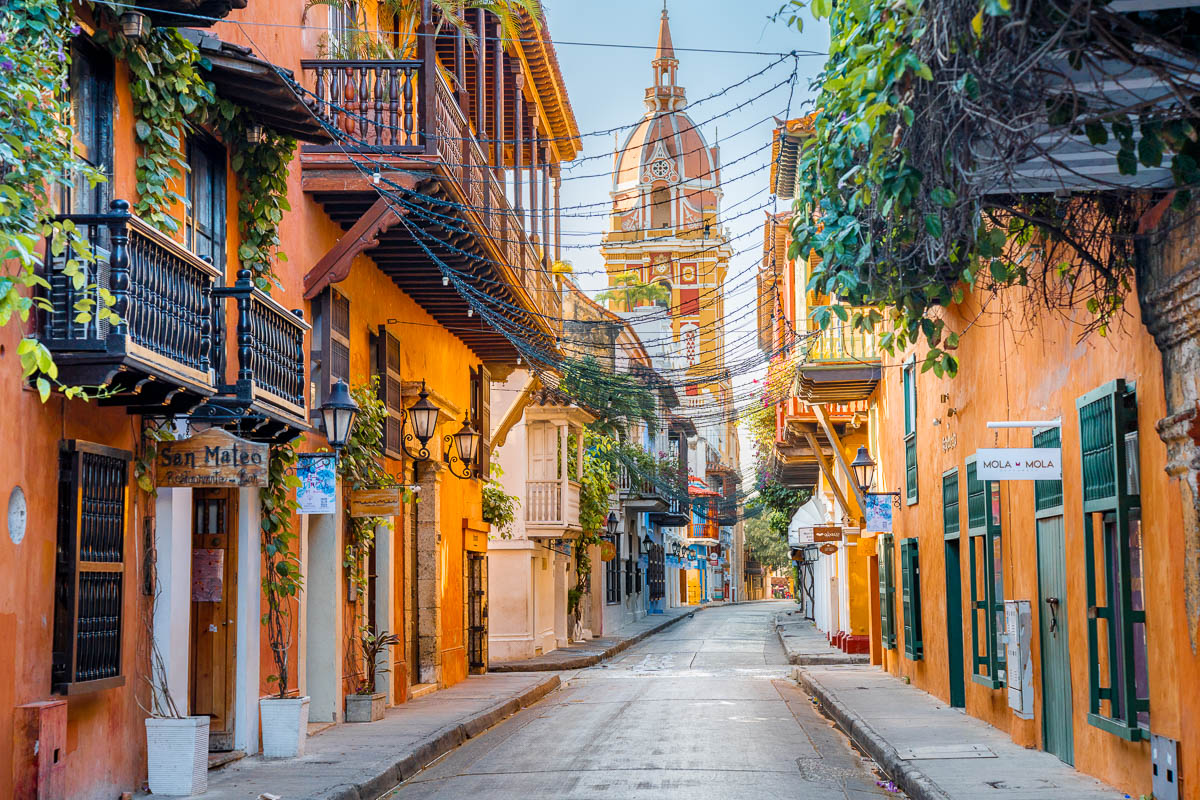
How to get to Cartagena
Medellin and Cartagena are over 600 km apart, so it’s safe to say that catching a flight between the two will be your most suitable option.
It’ll take you just over an hour to fly from Medellin to Cartagena. The taxi journey from the airport to the Old Town generally takes less than 20 minutes and will set you back about 20,000 COP ($5).
There are flights departing quite frequently during the day, so whether you catch a morning or an afternoon flight will depend on whether you want to spend more time in Medellin or Cartagena.
If you are planning to spend a night in Guatape, it’s best to make it your last night as the airport is almost exactly halfway between Guatape and Medellin, so it’s easier to go straight to the airport from Guatape than to go back to Medellin and then head to the airport.
Best things to do in Cartagena
Explore the Historic Walled City
The Walled City is in the thick of all the comings and goings of Cartagena and deserves a place on every Cartagena itinerary.
Consisting of around 11 km of stone walls, Cartagena’s iconic fortress was built during the 17th and 18th centuries to protect the city from pirates.
While many visitors come here to walk the well-preserved walls, there’s a good chance you’ll find that it’s the narrow streets, colorful buildings, and world-class restaurants that make this place so magical.
Wandering through the cobblestone walkways here was definitely among my favorite things to do in Cartagena.
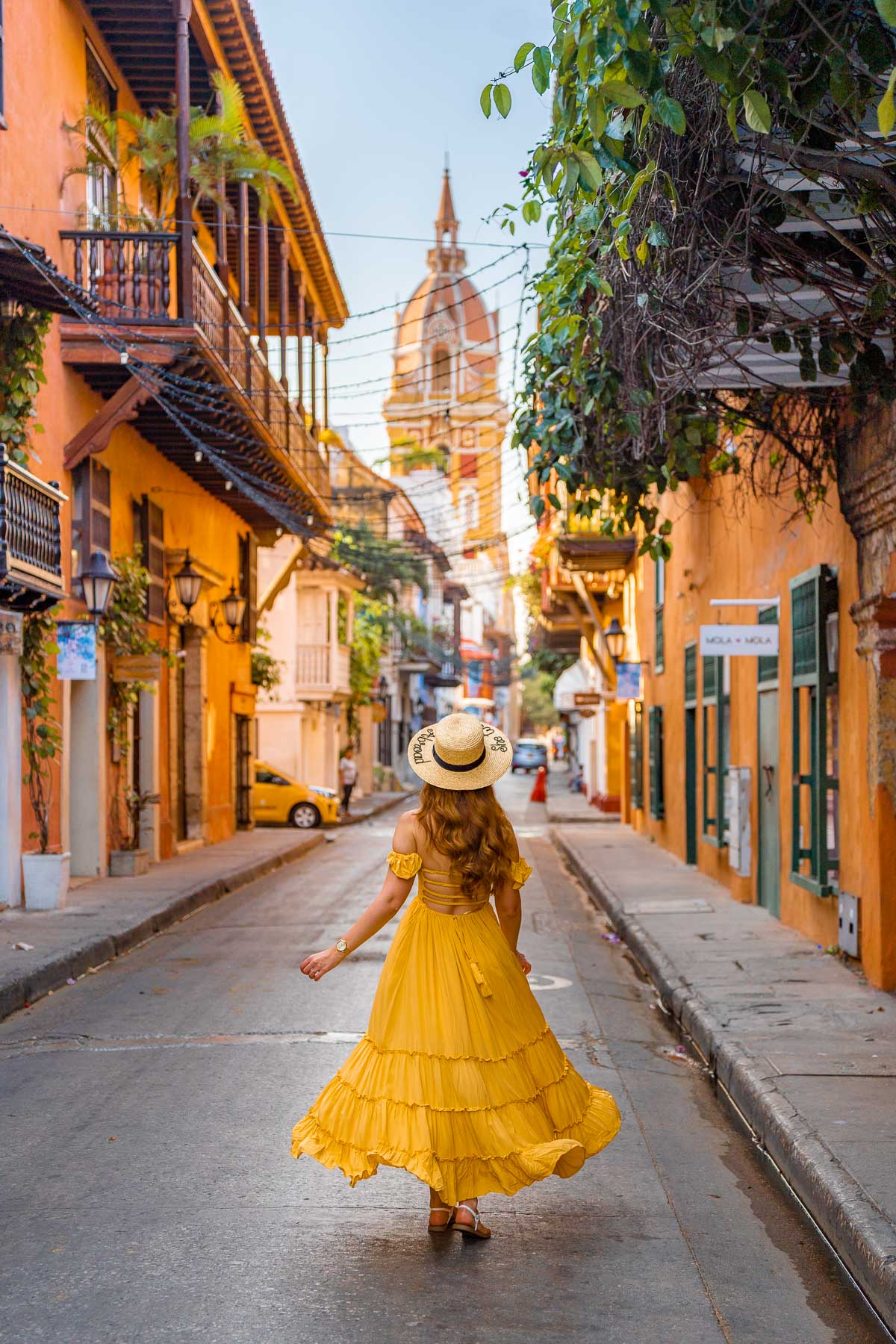
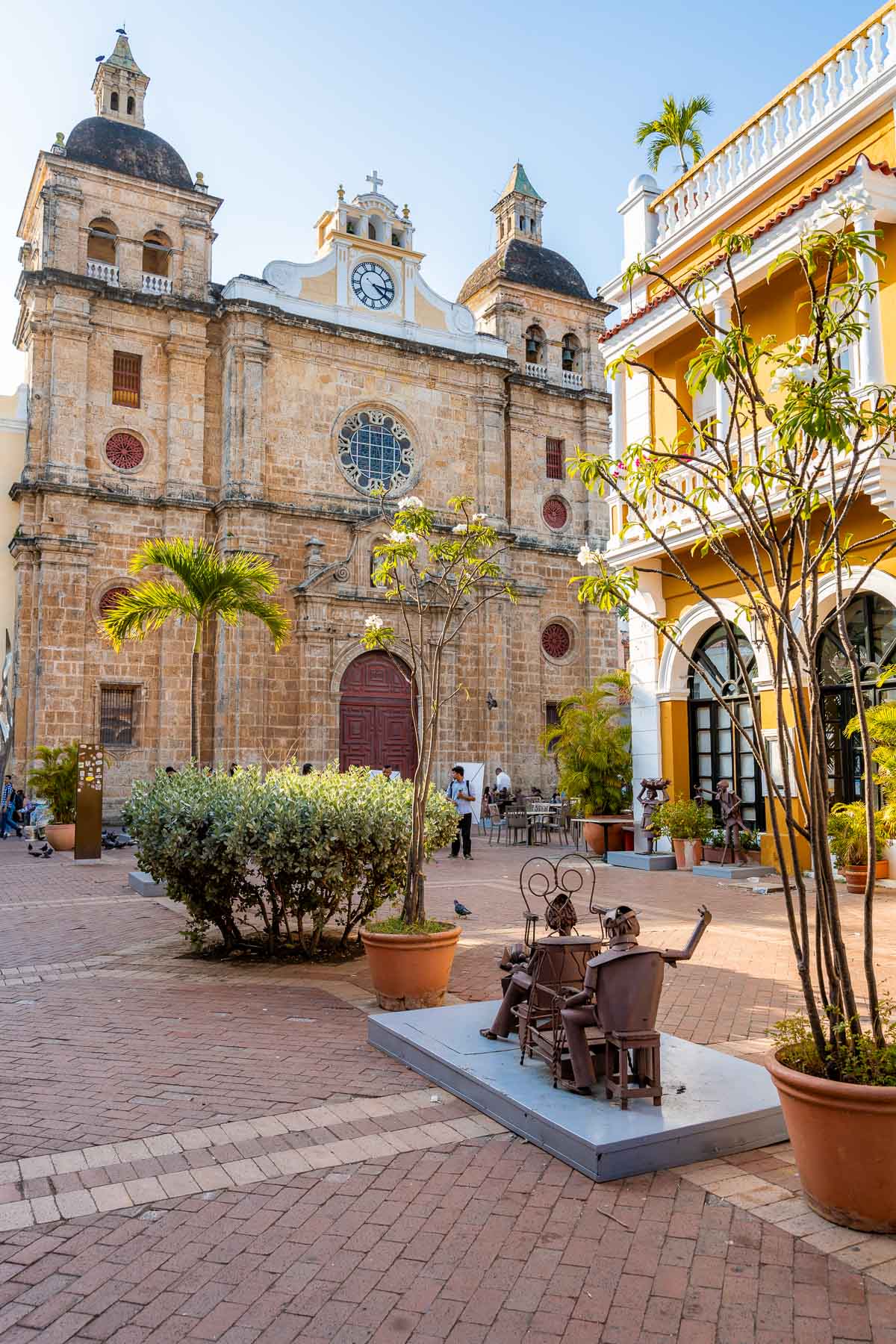
Go street art hunting in Getsemani
Another unforgettable experience was our visit to the hipster capital of Cartagena, the high-spirited and edgy Getsemani neighborhood.
Despite being just a stone’s throw away from the Walled City and sharing its charming colonial architecture, Getsemani has a much younger feel to it. Over the years, it has risen to move away from its reputation as a dangerous pocket of Cartagena and is now a hub for creativity.
The casual eateries, street musicians, and nightlife scene all add to the allure of Getsemani, but the ever-growing art culture that has made this district so famous. Getsamani feels like an outdoor art gallery, and the murals are just stunning to look at.
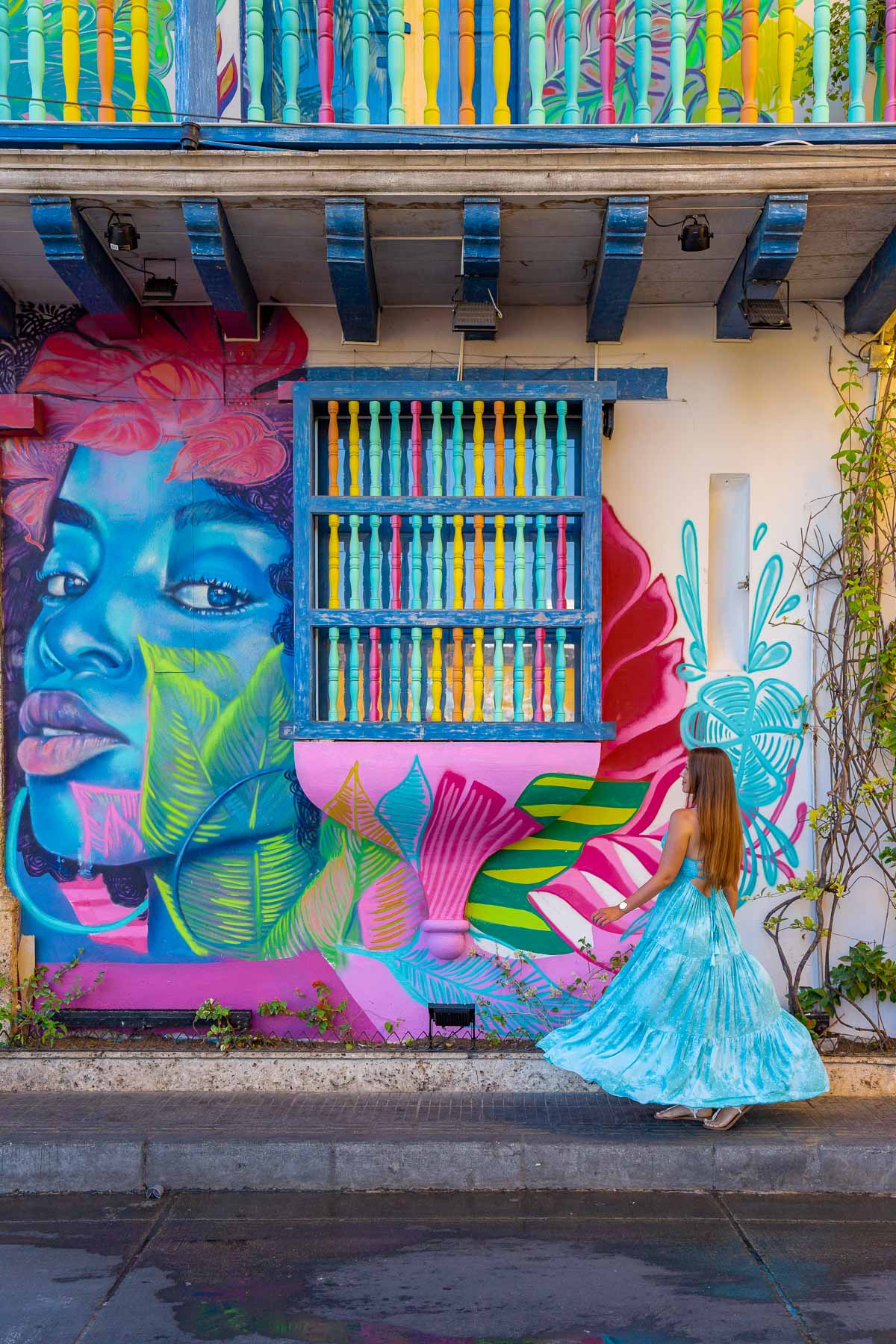
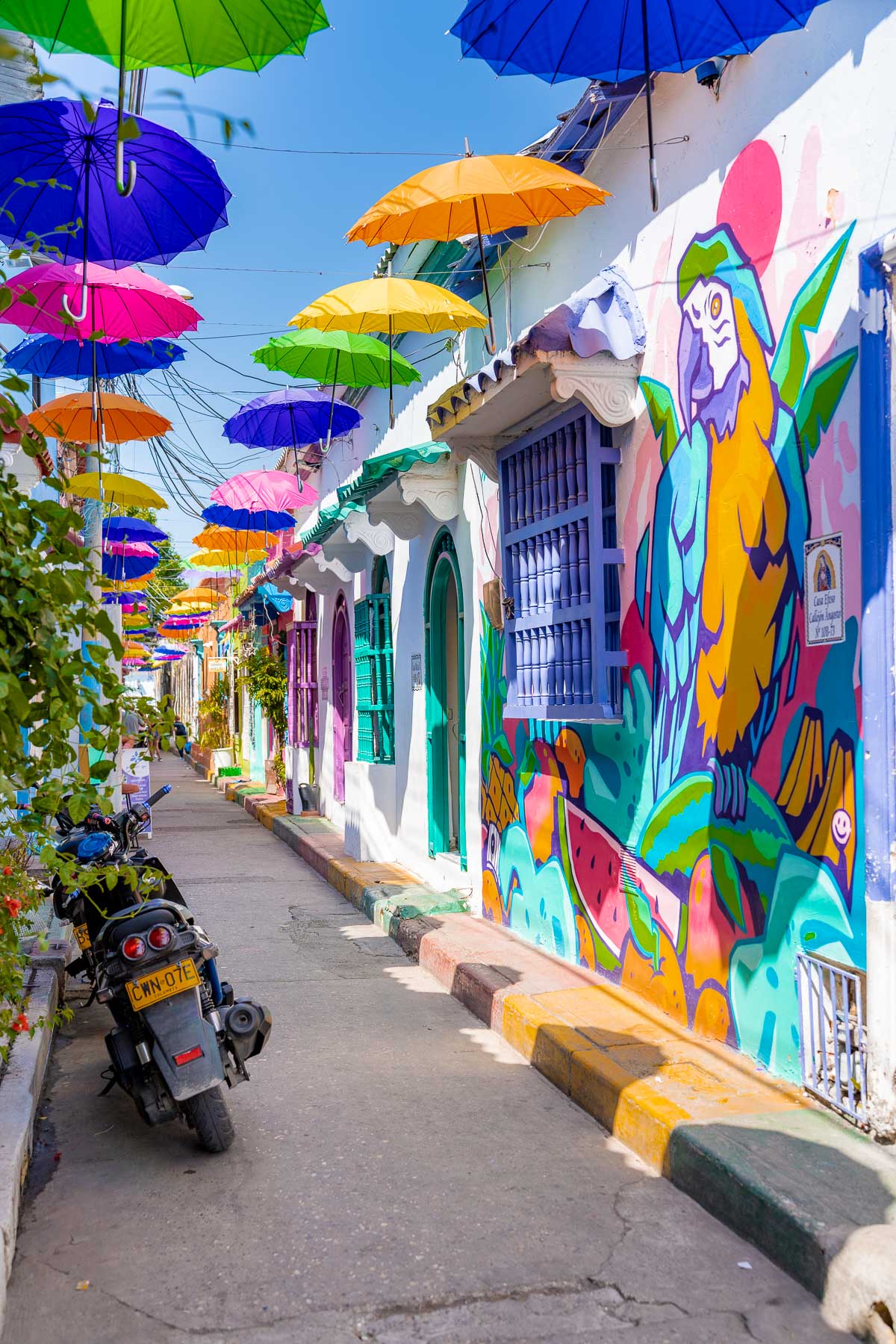
Take a boat trip to the Rosario Islands
Take advantage of Cartagena’s seafront location and spend the day sailing by the Rosario Islands.
This idyllic archipelago of islands offers some top-notch snorkeling opportunities and the chance to kick back on some unspoiled beaches for the day.
Because Cartagena is Colombia’s most sought-after tourist destination, the city can get pretty crowded, meaning this catamaran cruise will be a welcome break from the busy streets when you need a breather.
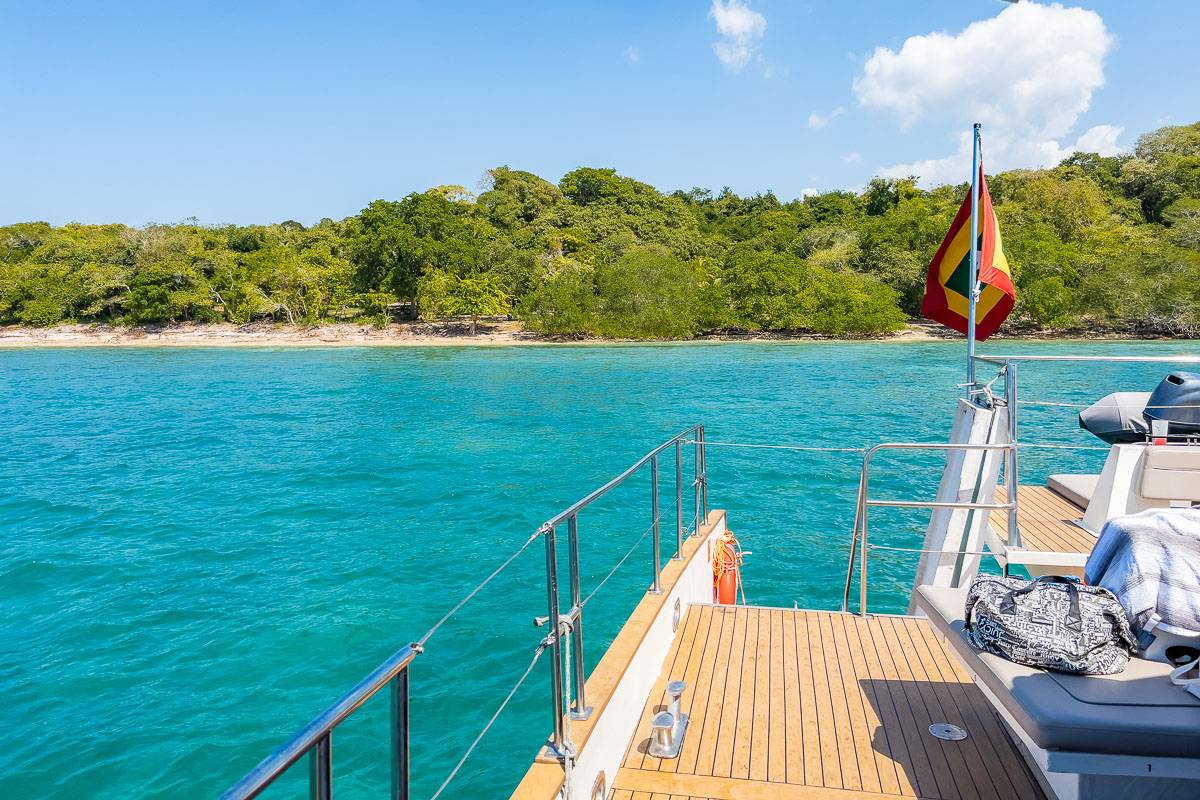
Visit Castillo de San Felipe de Barajas
The Castillo de San Felipe de Barajas is an essential stop for all the history buffs out there.
Strategically positioned above Cartagena, this fortress has been around since the 1500s and was used to keep an eye out for potential enemy attacks. While you’re here, be sure to head down to the underground tunnel system when you’ve finished examining the castle.
There’s limited information on display here, particularly in English, so it’s well worth hiring a guide at the entrance. Tickets come in at 30,000 COP ($7.5 US), excluding a guide.
The morning hours are the best time to visit because there aren’t many shades around, and the heat can get exhausting later in the day.
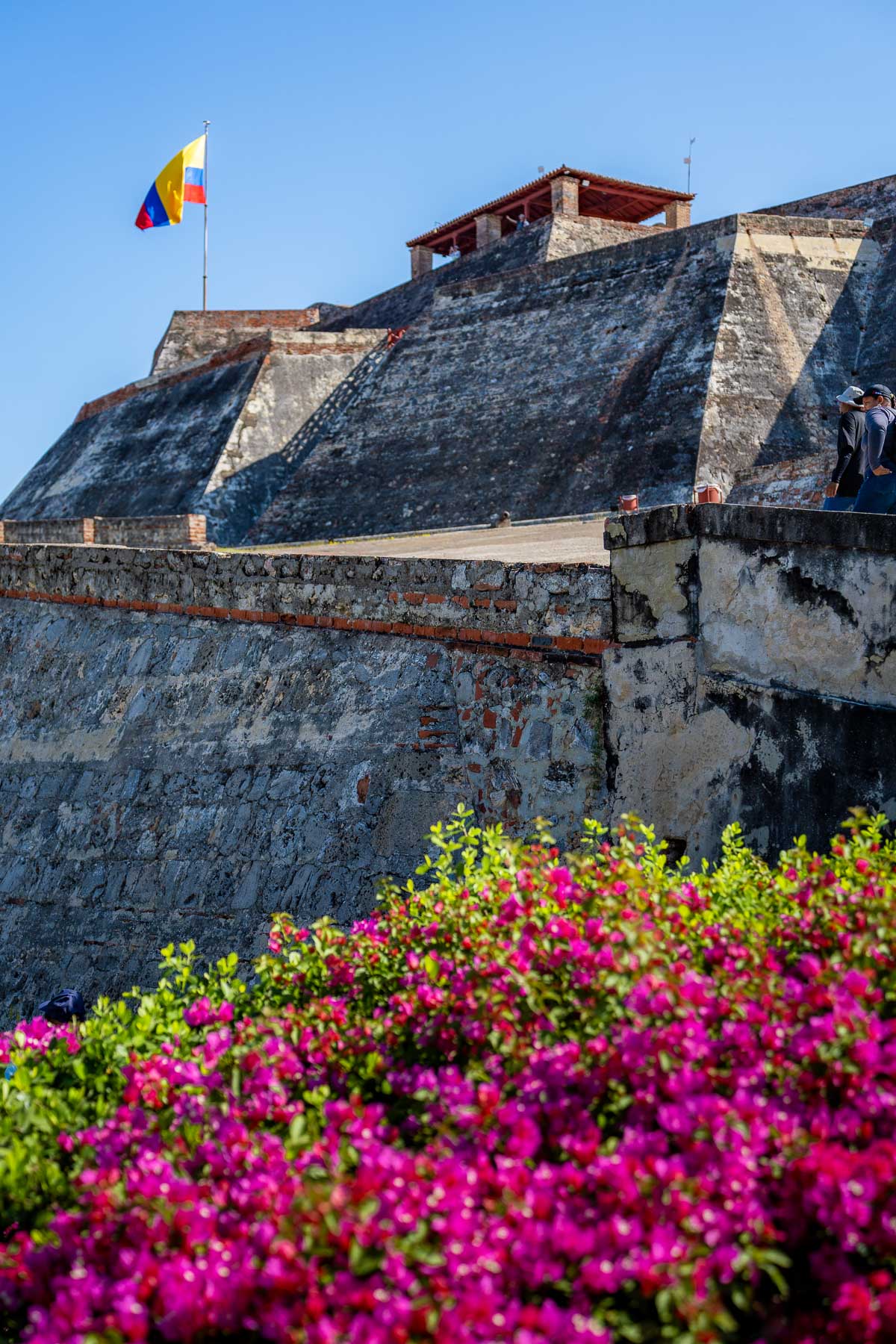

Soak in the mud at Totumo Mud Volcano
Without a doubt, one of the most peculiar but enjoyable activities on this itinerary for 2 weeks in Colombia is a visit to the Totumo Mud Volcano.
El Totumo is a tiny volcano that’s filled with warm, thick mud rather than lava and is a popular place for bathing thanks to the mud’s mineral-rich content. Tons of tours run from Cartagena every day, so making the one-hour journey to El Totumo is super simple.
Once you arrive, you’ll make the quick climb to the top before immersing yourself in the mud with the rest of your group. For a small fee, you can even treat yourself to a massage, though it’s a pretty tight squeeze once you’re inside, so it may not be the most relaxing experience!
After you’ve spent some time unwinding and rejuvenating your skin, you’ll take a dip in the lake to wash away the mud.
Enjoy the sunset at Café del Mar
There are a few spots in Cartagena that offer fabulous sunset views, but Café del Mar has to be at the top of your list.
All of the tables here are located outdoors along the old city walls, and you’ll have your pick of tasty dishes and drinks to enjoy al fresco. As you tuck into your fresh seafood or sip on a zesty margarita, you’ll be able to enjoy some of the finest views of the sea and city in town.
We were lucky enough to secure a table without making a booking. Still, I’d definitely encourage you to make a reservation if you’re planning to arrive around sunset, as Café del Mar is notoriously busy most evenings.
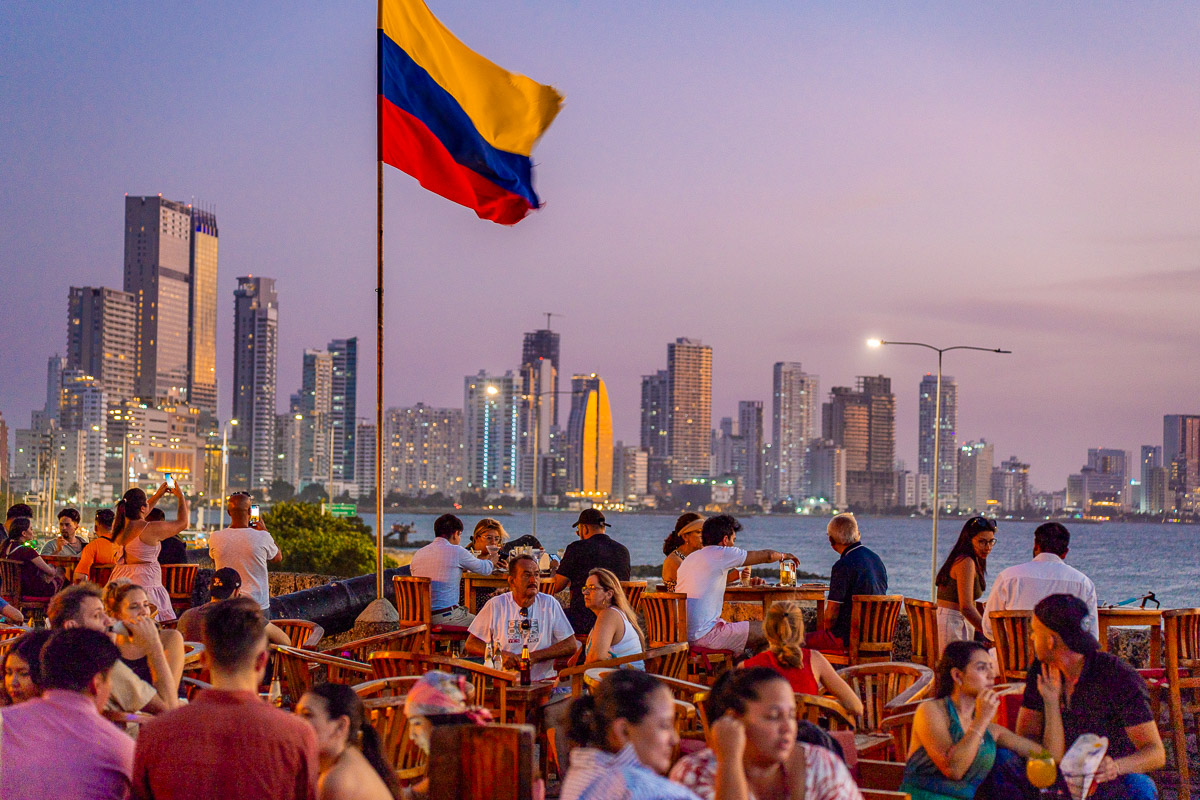
Where to eat in Cartagena
- El Burlador Gastrobar: El Burlador serves up exquisite Spanish food, delivers nightly flamenco shows, and even boasts an onsite sommelier offering personalized wine recommendations. This is one restaurant you just can’t miss.
- La Cevichería: Sample some delectable seafood at La Cevichería, a stylish haunt specializing in seafood. Anthony Bourdain’s visit really put this place on the map, but the Colombian ceviche and flavorful paella prove it more than lives up to the hype.
- Leña y Carbon restaurante: This restaurant is the ideal spot for a meat-heavy feast with a Colombian touch. Although they’re best known for their filet mignon and churrasco, they also have some lovely pasta and seafood dishes.
- Época Café Bar: This was our most-visited breakfast and brunch spot during your time in Cartagena. Pair your shakshuka or chilaquiles with one of their expertly crafted coffees or brunch cocktails, and you won’t be disappointed.
- Café del Mar: Most people associate Café del Mar with their lengthy menu of cocktails, beers, and spirits, but it’s also a much-loved spot for a bite to eat. Choose between light bites and sharing plates or munch on their steaks and seafood.
- Ely Café Bocagrande: If you’re spending some time in the Bocagrande area, be sure to pop into Ely Café for breakfast or lunch. The likes of acai bowls, French toast, and fluffy pancakes are all available, and they also serve a mouthwatering array of filled croissants.
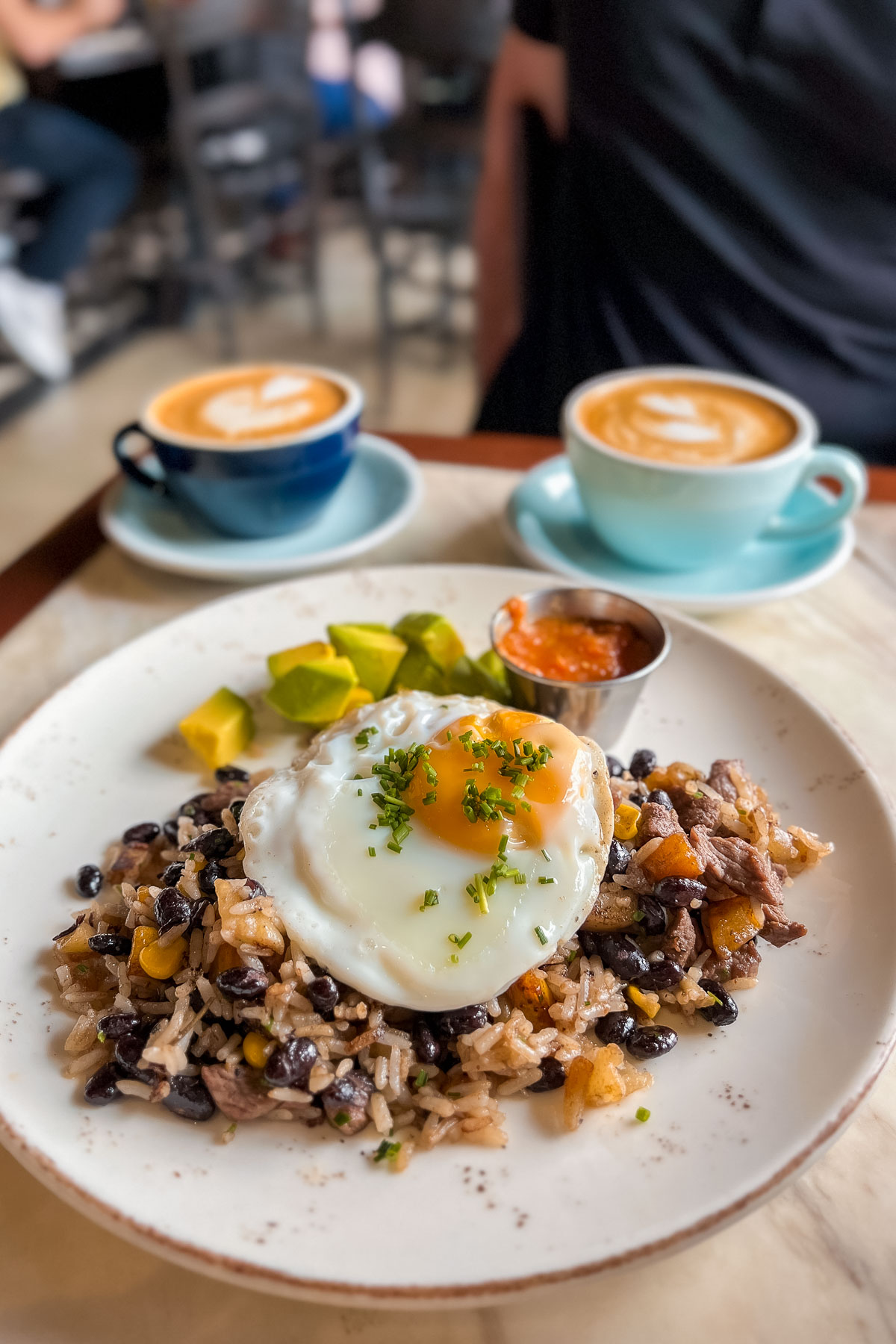
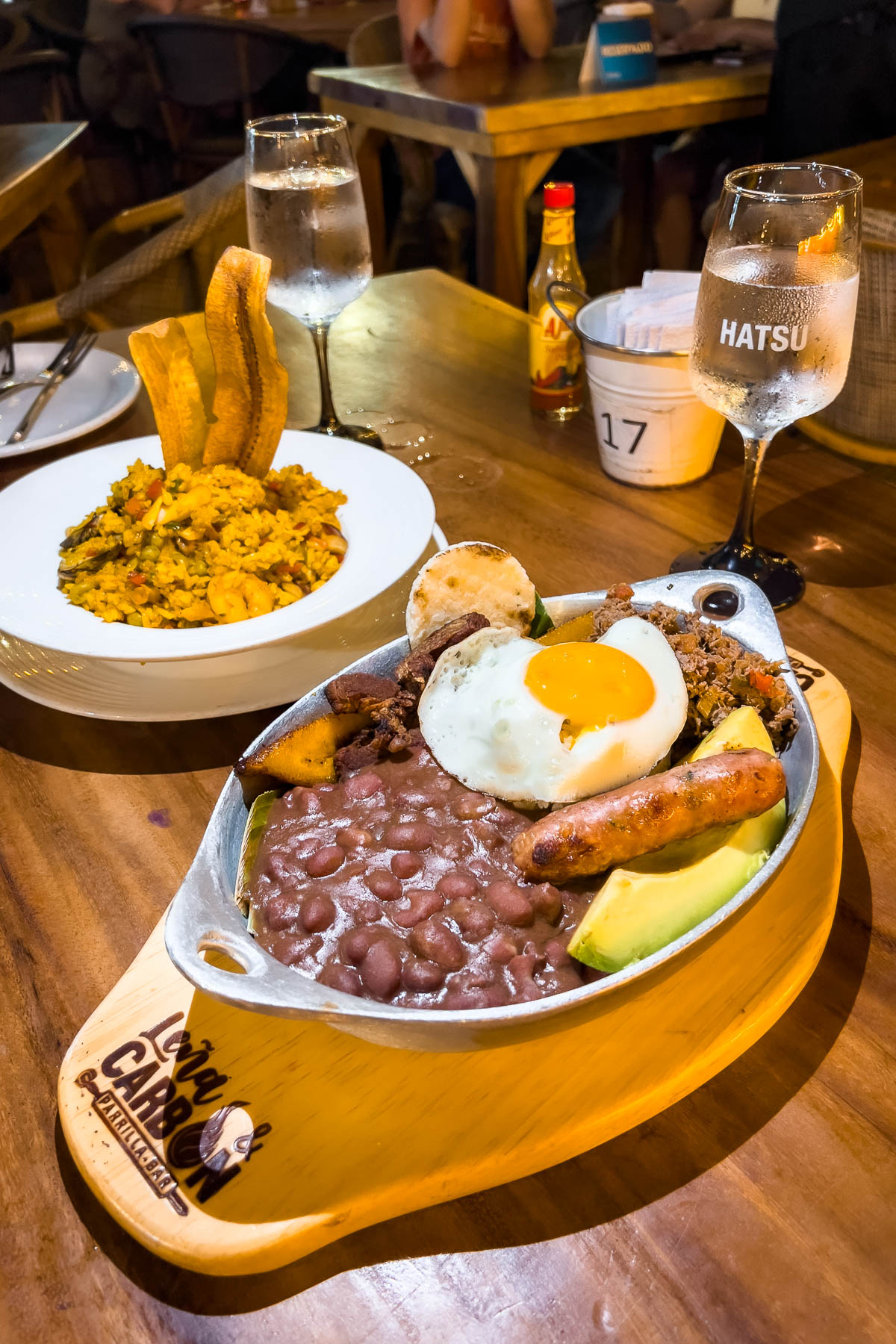
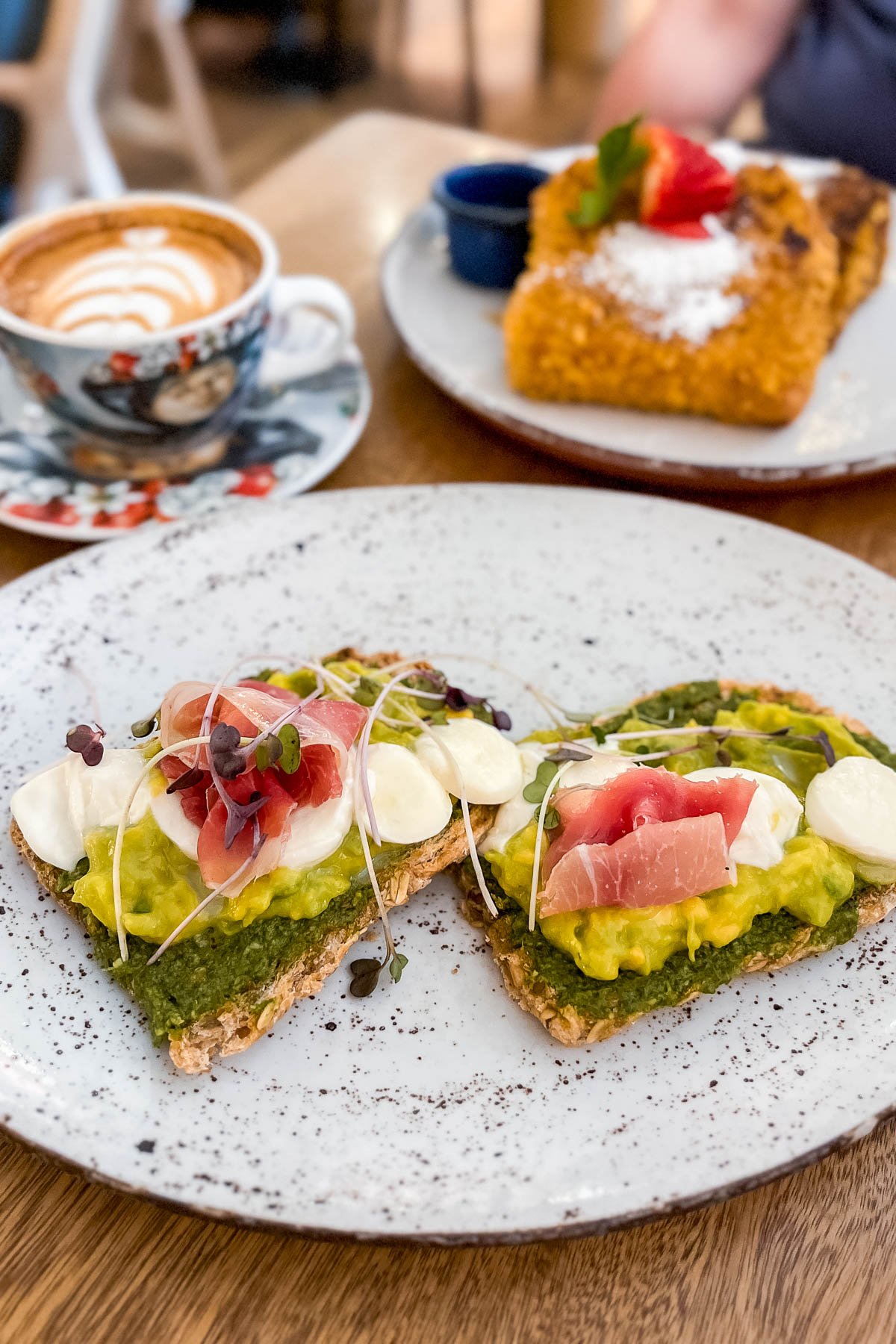
Where to stay in Cartagena
You’ll have a myriad of options when it comes to deciding where to stay in Cartagena. I think two of the best areas are the Walled City (Centro district) and Bocagrande.
You can’t go too far wrong if you stick to the Walled City. Not only will you be surrounded by the historic city walls, but you’ll also have the area’s renowned culinary scene, exciting nightlife, and array of landmarks at your fingertips.
Those of you who prefer luxury hotels, chic restaurants, and all the comforts of modern infrastructure will love Bocagrande. This upscale neighborhood also gets some bonus points for its easy access to beaches like Playa Bocagrande while still being close to the Old Town.
If you’re in a rush, here are my recommendations for these two areas for different budgets.
- Luxury hotel in the Walled City | Movich Hotel Cartagena
- Luxury hotel in Bocagrande | Hyatt Regency Cartagena
- Mid-range hotel in the Walled City | La Passion by Masaya
- Mid-range hotel in Bocagrande | Hotel Almirante Cartagena
- Budget hotel in the Walled City | Casa India Catalina
- Budget hotel in Bocagrande | Hotel Blue Concept
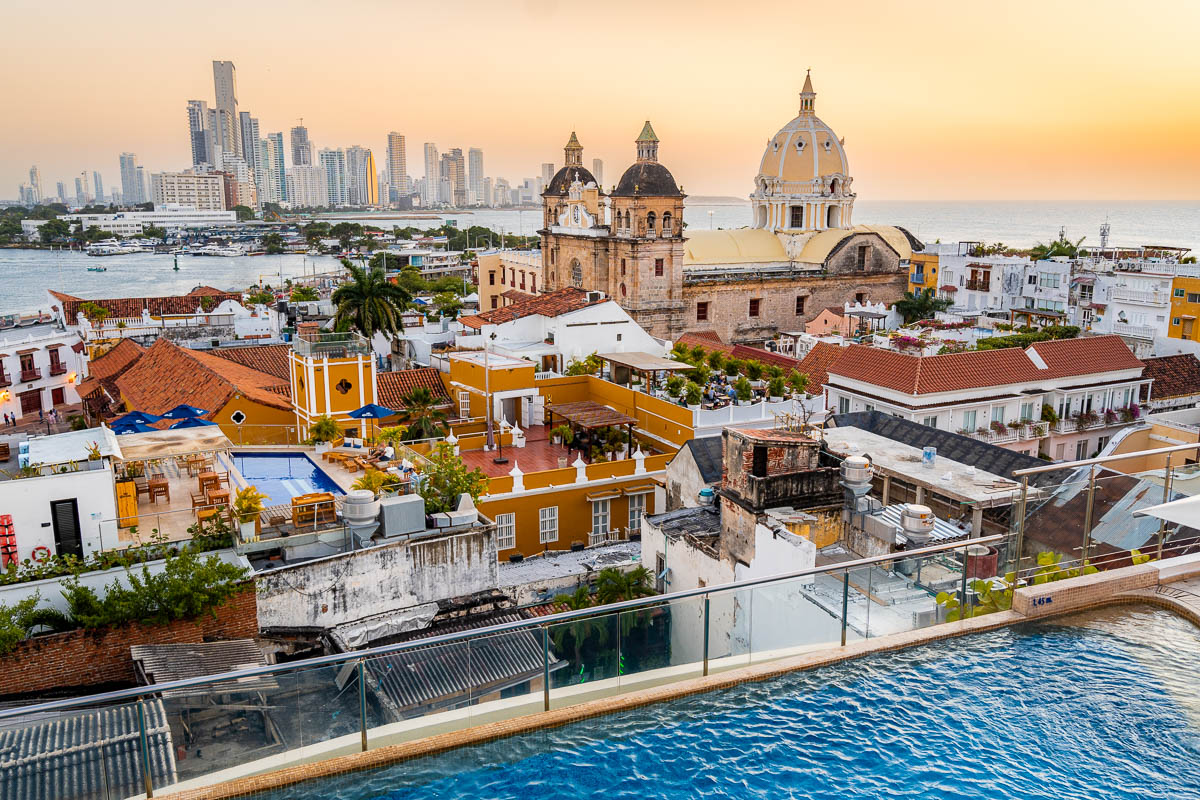
Planning a trip to Colombia?
Then you might want to take a look at all our other travel guides about Colombia. I promise, they are just as awesome as this article was!
- The Ultimate 2 Weeks in Colombia Itinerary
- 3 Days in Cartagena: The Perfect Cartagena Itinerary for First-Timers
- 18 Best Things to Do in Cartagena You Can’t Miss
- Where to Stay in Cartagena: 6 Best Areas & Hotels
- How to Spend 3 Days in Bogota: The Ultimate Bogota Itinerary
- Where to Stay in Bogota: 5 Best Areas & Hotels
- 10 Unmissable Things to Do in Salento, Colombia (+ Tips for Visiting)
- 3 Days in Medellin: The Perfect Medellin Itinerary for First Timers
- Top 20 Things to Do in Medellin You Absolutely Can’t Miss
- 13 Best Things to Do in Guatape, Colombia
- Luxury Glamping in Guatape: Bosko Hotel Review
Pin It for Later!
